
8 Tips to conserving Fresh Water on your Sailboat
It’s always great to be conserving freshwater on your boat and these tips from the blog Sailing Chance were too good not to share! When out Sailing for a long period of time freshwater can be scarce to come by. You can only hold so much and once it’s out you have to figure out how to get more. Depending on where you are and if you’re traveling that may cost money therefore the best thing to do is CONSERVE! Make the water you have last as long as you can and these small changes to your everyday routine can help a lot!
- Salt Water Foot Pump- This can make your life so much easier especially if it’s in the galley. It’s so easy to pre-wash dishes, rinse whatever is needed, and it’s a direct source to water instead of lugging buckets of around the boat.
- Mesh Net Dish Washing- This is an interesting tip but can be very effective in conserving any type of water. When you’re all done with your dishes throw them in a mesh bag and tie them off on the back of the boat. As you gently bob at anchor in the ocean any remaining food left on the dishes is loosened and sometimes completely rinsed off. Not only does it save water but it does most the hard work for you. You can then use a little soap to get the remaining food off in the salt water and just do your final rinse with fresh water.
- Salt Water Bath and a Fresh Water Rinse- You can do with yourself the same as you do with your dishes. Bath in the salt water and just rinse with your freshwater that way you can get all clean and just do the final rinse in the fresh water to get the salt water residue off of you.
- Use a cup of fresh water to brush your teeth and shave your legs. Leaving the tap running while brushing your teeth can waste gallons of water. If you just fill a cup up halfway you have enough to easily brush and rinse and same goes with shaving your legs.
- Hand Sanitizer- Hand Sanitizer is your best friend. Use it whenever you can instead of soap and water.
- Use Salt water for cooking- When making pasta or boiling water you can always add a little salt to help the water boil faster so why not add a little salt water. Don’t had too much but about ¼ salt water ¾ fresh should be perfect! Any conservation helps.
- Catch Rain Water- Depending on where you’re traveling it may rain sometimes and you could catch up to 15 gallons! Just put a bucket or two out and watch it fill up.
Read more about these tips and Sailing on the awesome blog Sailing Chance, linked above!
- Sailing Trips
- Shelter Island

Search form
Managing water use on a multi-day sailing expedition.
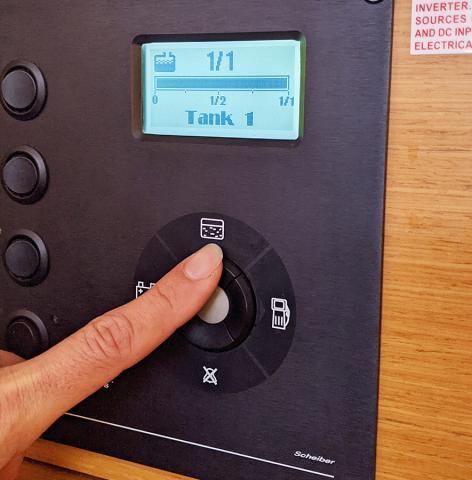
It's no fun when your water tanks run dry during a multi-day sailing charter or passage. Time wasted at the dock refilling water tanks could be better spent out on the water enjoying nature and the magic of sailing! With communication and mindful conservation, you and your crew can extend your boat’s freshwater supply for days. How much water will you and your crew need during your multi-day charter? How can you stretch your water supply to make it last as long as possible? Should you run out of water, where do you go and how do you fill up?
How much water will you use during your bareboat charter?
Tank water will be used for washing hands and face, brushing teeth, showers, and washing dishes. If you plan to swim or snorkel, you may want to shower afterwards and/or rinse the salt out of swimsuits and snorkeling gear before setting them out to dry. You can save more or less water during these activities depending on how conservative you are with use.
Each crew member will require about 1.5 gallons of drinking water per day. Exclude this amount from your planned tank water use - you’ll want to bring bottled drinking water with you. MSC does not recommend using charter boat tank water for drinking or cooking. Even hygienic tank water won't taste very pleasant. Please bring bottled drinking water. If you’re interested in avoiding plastic waste, consider utilizing refillable jugs.
Calculate a Daily Use Goal
First, find out your boat's freshwater tank capacity. Check the MSC Boat Features and Specifications spreadsheet found in the Choosing the Right Boat for Your Charter article*. If you’re bareboat chartering abroad, ask the charter company about tank capacity, or search for the boat model’s specifications at www.sailboatdata.com .
Divide the number of gallons in the tank ( a ) with the number of number of days you have the boat chartered for ( b ).
a ÷ b = c
In the example below, a crew of four's 100-gallon water tank is full at the start of their 6-day charter. Can they complete their itinerary without needing a refill?
100 ÷ 6 = 16.67 gallons per day total
A good goal for this crew is to use under 17 gallons total per day. They will need to be very conservative in their water use if they wish to avoid a trip to the dock. Just in case, they should locate a place along their itinerary where they can fill their tanks if needed.
*Please note that some of our Silver Trainer vessels do not have functioning freshwater systems. If in doubt, please call the MSC office at (415) 331-8250.
Monitor Water Tank Levels
If you’re chartering for more than one day, take a moment to familiarize yourself with the boat's tank monitoring system and check water levels before leaving the dock.
Most modern boats have a tank monitor installed in or near the main electrical control panel, as shown in the picture below.
Tank Monitor.jpg
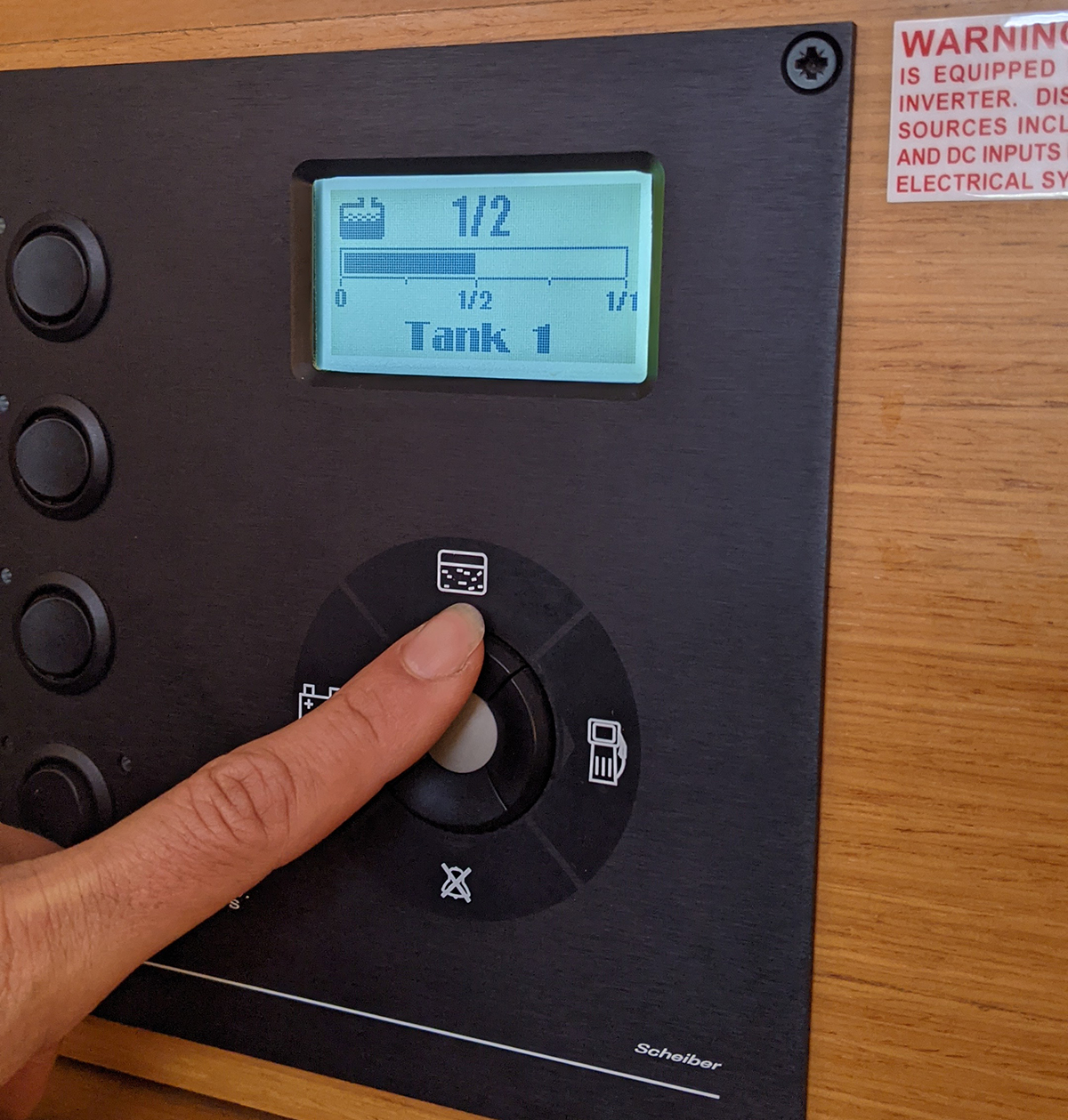
During a multi-day charter, check water levels in the afternoon and again in the morning - ideally 2 to 3 times daily. If you find you're consuming water much more quickly than anticipated, have a conversation with your crew about ways to improve water conservation.
Some boats are equipped with two water tanks. Press the water tank monitor button to toggle between displays for Tank 1 and Tank 2.
NOTE : If your boat is equipped with two water tanks, you may need to manually switch over to the second tank when the first tank runs dry. Every boat is different. If you need some help understanding your boat's freshwater system, ask for the assistance of a fleet specialist by calling the main office (415) 331-8250 or hail on VHF radio channel 68.
How to Conserve Water on a Charter Sailboat
When washing hands and face and brushing teeth, open the tap just enough to allow a trickle from the faucet. It may take a bit longer, but you’ll use a lot less water to get the job done. Rinse toothbrushes in a cup with a small amount of drinking water.
- Conserve a little : A “navy shower” will conserve water and get you clean from stem to stern. Briefly turn on the water - just enough to get yourself wet - then turn it off while you soap up your body and shampoo your hair. Turn the water on again just long enough to rinse.
- Conserve a lot : If you’re in an area suitable for swimming, bathe in seawater and rinse in freshwater. Jump in the drink, climb back aboard to soap up your hair and body, and jump in again to rinse. Then rinse off the saltwater quickly in the shower. Very refreshing! A dry shampoo product and a “sponge bath” (or washcloth) will use the least amount of water. Consider alternating between a shower and a sponge bath every other day to save the most water.
Washing Dishes
- Conserve a little : Have crew members wipe crumbs and sauces off their plate and utensils with their napkins. Also, one-pot meals are superb for sailing trips - less cookware to wash! Apply dish soap, lather, and rinse dishes under a small trickle of fresh water from the galley faucet.
- Conserve a lot : Wash dishes thoroughly in a bucket of seawater. Follow with a quick freshwater rinse in the galley sink to remove the salt.
Where and How to Refill Your Boat's Water Tank
If your water tank runs dry, it's time for a trip to the dock. Our article Multi-Day Charters: Fueling Up and Pumping Out will help you find a Bay Area location to fill up.
Use the deck cap key (found in the navigation table on most boats) to twist open the deck cap. Twist to the left to open and to the right to seal.
universal deck cap key.jpg
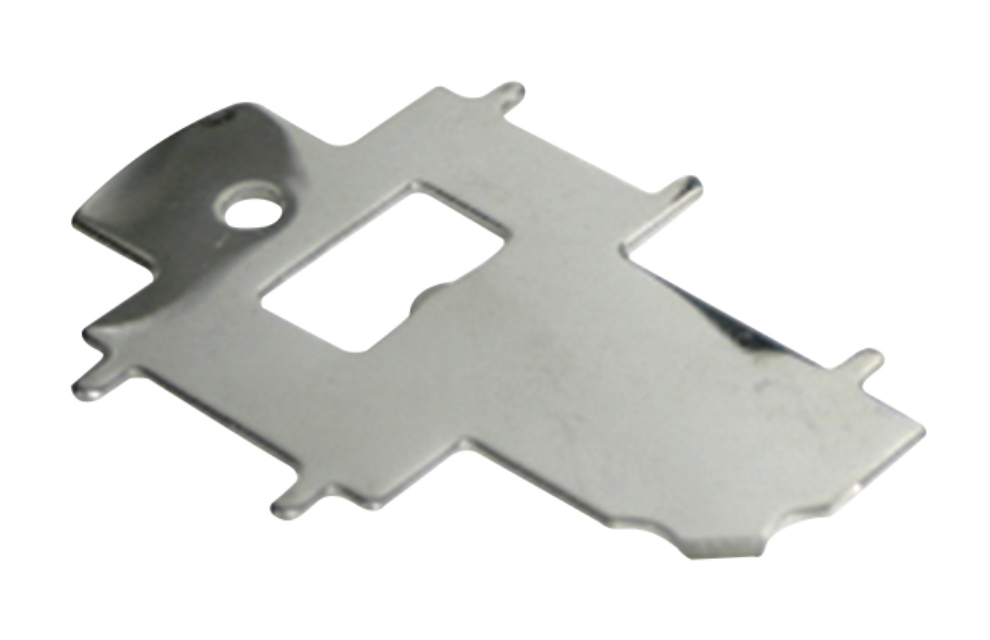
NOTE : Deck fill caps are clearly labeled to indicate whether they provide access to a water tank, fuel (diesel), or waste tank. Double-check the deck fill cap to ensure you are filling the water tank and not the diesel tank. (It has happened!)
Water Tank Deck Cap.jpg
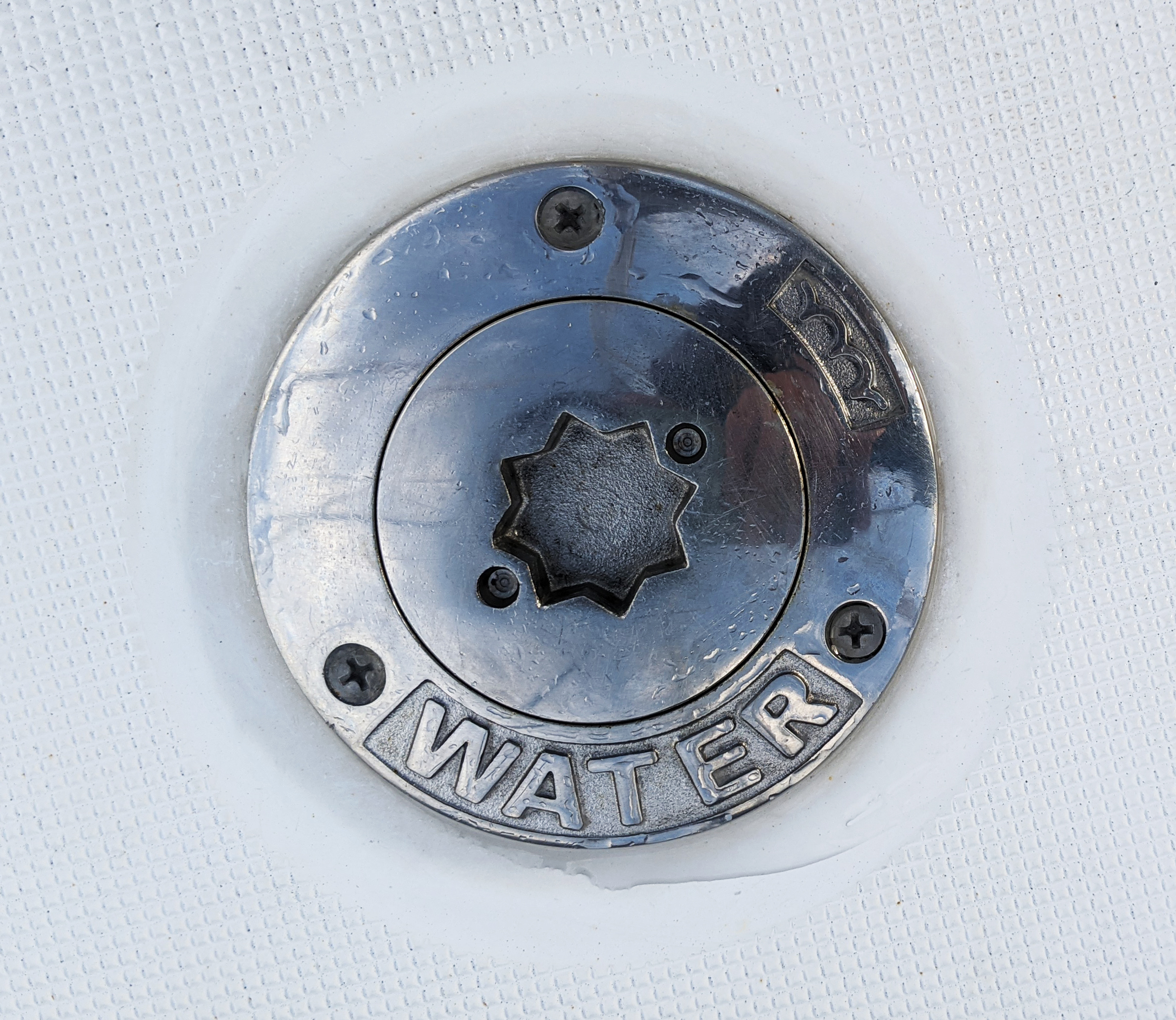
NOTE : Be aware that at public fuel/water/pumpout docks, sometimes sailors will insert water hoses into waste tank portals to flush out holding tanks. For this reason, to avoid contaminating your freshwater supply, hold the water hose above the deck and do not allow it to touch any part of the water tank portal.
Learn how to make the most of your time on the water - visit the Member Resources section of our website for more sailing and charter tips! On the subject of multi-day chartering, you might enjoy articles such as these:
- Onboard Electricity Basics & FAQ
- Charter Boat Icebox and Refrigerator Basics and Best Practices
- Anchor and Windlass Tips for MSC Members
- Cozy Winter Chartering - MSC Yachts with Cabin Heaters and Hot Water
- It's easy to prevent the costly consequences of "prop wrap"
- Handling Emergencies Part I: Predeparture Safety Checks
- ...and more!
Share This Page
Testimonials.
I started sailing at Modern at the end of 2021 and threw myself into it, spending as much time out on the water as I could. I came to Modern with some flat water dinghy sailing experience and it was quite a transition learning to sail bigger boats in much tougher conditions. There was a lot to learn, but the Modern instructors, Club Skippers and fellow Modern sailors made learning fun and rewarding. My Modern instructors were clearly very experienced sailors and sailing with them was inspiring! I want to thank the maintenance crew and office staff for their dedication and hard work - you are the folks who make things work! There is a lot more to learn and I look forward to sailing with Modern for years to come.
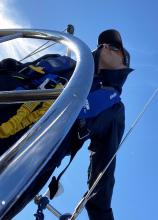
I've taken two classes at MSS&C and was very happy with the program. This is also a great club with lots of opportunities for camaraderie and practice on the water. The boats in the fleet are fantastic and kept in tip-top shape. I highly recommend for all sailors and would-be sailors!
The office staff was very accommodating in meeting my availability.
View All Testimonials
Follow us on Social Media

Modern Sailing School & Club
Sausalito Location 2310 Marinship Way, Sausalito, CA 94965 (415) 331-8250 (800) 995-1668
Berkeley Location 1 Spinnaker Way, Berkeley, CA 94710 (415) 331-8250 (800) 995-1668
Map / Directions
You are here.
Life on a Sailboat: Everything You Need to Know About Living on a Sailboat Full-Time
Living on a sailboat full-time is often romanticized as a life of endless sunsets, gentle waves, and freedom on the open sea. Many dream of casting off the lines and setting sail for a horizon of adventure and tranquility. However, the reality of life aboard a sailboat can be as challenging as it is rewarding, as frustrating as it is relaxing, and, more often than not, as mundane as it is exciting.
This blog post aims to peel back the curtain on the picturesque scenes to reveal what daily life is really like when you call a sailboat home. We will dive into the motivations, preparations, joys, and challenges of living on a sailboat full-time, providing a realistic glimpse into a lifestyle that is far from ordinary.
Our Live-Aboard Life
Our dream of living on a sailboat was a distant one for many years. But as we watched plans and dreams fall by the wayside in the wake of COVID, we made the decision to make our dream a reality. Once the borders opened up, we made a beeline for the Mediterranean and have since spent each summer living aboard our little 29-foot sailboat Whisper. Without any experience sailing or living on a sailboat, we have taught ourselves to sail and manage life on the boat along the way.
Before we took up sail life, we had been living “van life,” and we’ve come to realize there are lots of similarities but quite a few differences between the two . However, on the whole, learning to live van life first put us in good stead to take on life on a sailboat. Unlike most people, we up-sized when we moved onto a boat.
Despite the upgrade in living quarters, the learning curve and the adjustment to living on the sea were no less challenging. Nevertheless, the shift was not as scary as we thought it might be, and the reality of living on a sailboat full-time quickly became our new normal.
Initially, our plan was to buy a boat and spend one season aboard sailing the Mediterranean before selling the boat and settling down. Instead, it’s safe to say we have fallen in love with life on a sailboat. Now, as we enter our third season, we aren’t sure when we will be ready to furl the sails for good…
Get a Taste of Life on a SailBoat
We document some of the realities of living on a sailboat full-time on our YouTube Channel in our The Vanabond Sails series.
Deciding to Live on a Sailboat
The journey to becoming a full-time live aboard often starts with the desire for change.
Some people are transitioning from one stage of life to the next as careers wind up or children move out. Some yearn for adventure and excitement, while others seek a simpler way of life. Many are drawn to the promise of freedom, the allure of the sea, and the appeal of living more closely with nature. However, the decision to live on a sailboat full-time is not one to be taken lightly. It requires thoughtful consideration and planning.
For us, it was a long-held dream to sail and live aboard a sailboat. It was also a natural progression, having spent several years living and traveling by van . We were ready for a new challenge.
It began with a conversation, then a plan, and then trawling classifieds for second-hand boat sales. Before long, the decision was set in stone, and we were on our way to Croatia to buy a boat , learn to sail it, and move aboard.
Choosing the Right Sailboat
The type of sailboat you choose is critical and depends on your budget, sailing skills, and the kind of sailing you plan to do (coastal cruising, bluewater voyaging, etc.).
Will you prefer the size and stability of a catamaran, or will you prioritize the sailing experience of a monohull? Are you looking for something small that’s easily controlled and maneuvered by a limited (and potentially inexperienced) crew, or do you require the space of a larger vessel? Are you interested in the clean lines and comforts of modern boat designs, or do you prefer the style of older boats? There are a thousand decisions to be made when choosing a boat, and your own aspirations for boat life and, of course, your budget will be critical when it comes to making this decision.
Spend as much time researching boats that are available in your price range, ask questions of sailors you know or on sailing forums, and, if possible, spend time aboard different types of sailboats to get a clearer picture of what life is really like on board before making a purchase.
Check out our full article on buying boat .
Emotional and Practical Considerations for Sail Life
Living on a sailboat means embracing minimalism and being comfortable with the idea of having less space and possessions.
You’ll need to consider the impact of such a lifestyle on relationships with family and friends, as it can mean spending long periods away from loved ones.
The decision also involves considering how to manage work or income while living at sea , which might include remote work, seasonal jobs, or living off savings.
There are plenty of options for those planning on working remotely while sailing. With the rise of remote work , there has never been more opportunity to work and sail.
All of these considerations represent potential challenges to adjusting to life at sea, but they are certainly not insurmountable. You just need to be honest with yourself and decide if your love of the open water and the freedom of living aboard a sailboat will be greater than the inconveniences.
Preparations and Adjustments
Transitioning to life on a sailboat involves a series of preparations and adjustments, both practical and psychological, to ensure a smooth and sustainable living experience.
Training and Skills
If you are thinking about taking up sailing, you should, of course, invest time in learning to sail, navigate, and understand weather patterns. While this may seem like a daunting task, it’s not an insurmountable one. Time on the water is the most important thing, so it’s time to sign up for sailing courses, start planning trips with sailing friends, join a local sailing club, or seek out opportunities to crew for other sailors.
Learning basic boat maintenance and repair is essential to manage the myriad challenges that come with life at sea.
Safety courses, such as first aid, sea survival, and radio operation, are also crucial for handling emergencies.
These skills are important for safe and comfortable sailing and are often legally required. Make sure you are aware of the licensing and registration requirements for sailors in the region you are preparing to sail.
In our case, I had experience sailing small dinghies as a child and thus some understanding of the fundamentals, while Kelli had zero experience. My existing marine license issued in Australia was recognized in Croatia, where we bought our boat. I only needed to acquire a VHF radio license to become adequately certified for inshore sailing in the Mediterranean.
We paid some local sailors to come aboard and teach us both the fundamentals of our new boat (lots of docking and anchoring practice).
Downsizing and Adapting to Limited Space and Resources
As mentioned, moving onto a boat was actually upsizing for us. With a second cabin, a flushing toilet, and a large indoor table, our relatively small 29-foot monohull seemed luxurious compared to the vans we had been living in until this point.
However, for most, moving onto a sailboat often means significant downsizing, and space becomes a premium commodity. The process of downsizing for sail life involves prioritizing essential items and learning to live without the comforts of a traditional home.
Space isn’t the only limitation on a boat. Reliance on water tanks (if you don’t have a watermaker) and solar, wind, or generator electricity often means a downshift in access to creature comforts we take for granted in a house on the grid.
Creativity in organizing and making the most of limited space and resources becomes a daily practice, requiring innovative storage solutions and multi-functional furniture. Most modern sailboats are well-designed with endless space-saving measures and designs. Nevertheless, an adjustment will likely be necessary.
Financial Planning
Financial considerations are paramount, as the cost of living on a sailboat can vary widely depending on factors like marina fees, maintenance costs, and lifestyle choices.
Setting a realistic budget that includes regular maintenance, unexpected repairs, and living expenses is essential for sustaining life at sea.
Depending on your personal aspirations for boat life, this lifestyle can be as affordable or as expensive as you want to be. For us, as a couple in our thirties still in the building and saving part of our lives and careers, we are able to live on a boat in the Mediterranean affordably and comfortably for far less than we (estimate) we would spend living a more stationary lifestyle.
Check out our full article on the Costs of Living on Sail Boat Full-Time
Overall, adjusting to the confines and challenges of sailboat living demands not only physical preparation but also mental resilience and adaptability. The transition from land to sea is a profound shift, requiring a willingness to embrace simplicity, flexibility, and a sense of adventure.
Daily Life Aboard
While there is no typical day aboard, and experiences will differ wildly from person to person and day to day, we can describe what many of our days do look like.
As we work from the boat, our weeks are generally divided into work days, Monday to Friday morning and weekends. The truth is that the novelty does wear off, and many days, especially during the working week, become just as mundane as any other lifestyle. However it never stays mundane for long, one exhilarating sail, a dolphin sighting, a picture perfect anchorage or even surviving an impromptu weather event and the thrill of living on a sailboat quickly returns.
A typical workday for us living on a sailboat often starts with the sunrise (or a little bit before if we have a lot on). Ideally, we are well rested after a still night without rolling swell or, worse, strong wind, but that isn’t always assured at sea. Mornings involve checking the weather first and foremost, all plans revolve around the direction and strength of the wind and waves.
If the weather is calm, we usually try to work in the mornings when we are fresh and focused.
We travel slowly, often spending a few days in a quiet, well-protected anchorage, on a town quay, or in a marina before moving on a short distance along the coast. On sailing days, we often sail in the afternoon when the winds are a bit stronger in the Mediterranean. On days we are staying put, the afternoon might be spent exploring a new town, getting provisions, swimming, or finding a beach to lie on and read a book. In the evening, we will cook dinner onboard and get some more work done or watch some TV.
Weekends look different, and we will take advantage of not needing to be close to reliable network services, completing longer passages along the coast, or visiting islands.
Daily Differences in Sail Life
Living spaces on a sailboat are compact and multifunctional, necessitating an organized and tidy approach to prevent clutter and ensure safety. Cooking in a small galley kitchen presents its challenges, from securing pots and pans on a constantly moving boat to managing limited ingredients and storage.
Meals often need to be simple yet nutritious, requiring creativity and planning. Our approach is to cook simple, one-pot, vegetarian meals like dal or vegetable curry two or three times during the workweek and eat leftovers for lunch and dinner. On the weekend, we like to get more creative with our meals, seeking out local produce or fresh seafood and taking our time to prepare something special.
As mentioned, resource management is a critical aspect of daily sailboat life, especially when it comes to conserving water, fuel, and electricity. Efficient use of these resources is vital, whether it involves careful water usage, monitoring power consumption, or planning the next opportunity to resupply. For us, an electricity supply is mainly dependent on the sun when we are not under motor or plugged into shore power. Extended periods of cloud can alter our plans. Similarly, if we are not careful with water, more frequent visits to refill are required, which can be limiting.
Personal hygiene and privacy take on a new meaning in the confined space of a sailboat. Showers may be quick and infrequent. In our case, we generally rinse off after a swim to bathe and take proper showers during marina stops. Personal space is limited on a sailboat and managing personal relationships can have extra challenges.
Sleeping on the boat can take some getting used to, especially when on anchor. Even on a calm day, the constant rocking of the water can be disruptive at first, and novice sailors may find they get seasick, although these symptoms usually go away after a few days. When it’s windy, or there is some swell, the noise, movement, and the ever-present worry that the boat may pull off its anchor with the movement can make it very difficult to get a good night’s sleep.
Unforecast storms, gear failure, or some other emergency can occasionally create scary and challenging scenarios, especially if disaster strikes late at night. These situations are part of the adventure but can certainly be stressful.
Despite the challenges, daily life on a sailboat is interspersed with moments of profound beauty and peace. Whether watching dolphins play in the bow wave, enjoying a sunset over the ocean, or stargazing on a clear night, these experiences often make the hardships worthwhile, offering a sense of freedom and connection to nature that is hard to find elsewhere.
The Pros and Cons of Living on a Sailboat Full-Time
Pros: the joys of sailboat living.
Living on a sailboat brings a unique set of joys and rewards that can make the challenges seem insignificant.
+ One of the most significant benefits is the sense of freedom and adventure. Sailboat dwellers have the luxury of exploring new destinations, anchoring in secluded bays, and experiencing different cultures in a way that most people never will. The ability to call a variety of picturesque locations home, even if only temporarily, is a remarkable aspect of this lifestyle. Even compared to other forms of nomadic lifestyle, waking up in your own private bay or cove is hard to re-create.
+ The connection with nature is unparalleled in sailboat living. Being surrounded by the vastness of the ocean, witnessing marine life up close, and experiencing the rhythms of the sea create a deep sense of harmony and peace. The simplicity of life on a boat can lead to a greater appreciation for the small things, like the beauty of a sunset, the changing colors of the sea, or the silence of a night watch under the stars.
+ Community and camaraderie are also central to the sailboat lifestyle. The sailing community is known for its close-knit, supportive nature, with fellow sailors often ready to lend a hand, share advice, or offer companionship. This sense of community extends across harbors and anchorages around the world, creating a global network of friends and contacts.
+ The personal growth and self-reliance developed through sailboat living are profound. Navigating the challenges and unpredictability of the sea fosters resilience, problem-solving skills, and a strong sense of self-confidence. The lifestyle encourages continuous learning, from mastering sailing and navigational skills to understanding weather patterns and marine ecosystems.
The Cons: The Challenges and Hardships of Liveaboard Life
While the joys of living on a sailboat are plentiful, the lifestyle also comes with its fair share of challenges and hardships. These difficulties test the resilience and adaptability of those who choose this way of life.
– One of the most significant challenges is dealing with bad weather. Storms, high winds, and rough seas can be terrifying and dangerous, requiring skill, experience (which you can only get by …experiencing it), and a calm demeanor to navigate safely (perhaps the trickiest thing to achieve). The stress from poor weather can be mentally draining, disrupt work, and put a strain on relationships.
– The learning curve required to become a confident and comfortable sailor is not small and can take many seasons while mastering sailing can take a lifetime.
– The constant exposure to the elements also means that maintenance is a never-ending task, with saltwater and sun causing wear and tear that must be regularly addressed to keep the boat functional and safe. Especially on an older boat like ours, fixing and maintaining gear and rigging is an endless cycle. Most systems and hardware on the boat are essential, and when they fail, there is often no one around to help. Constantly sorting out jammed anchors, engine or electrical issues can quickly become tiresome and (if you are trying to work) quite disruptive. It can also be quite stressful when critical systems fail.
– Isolation is another aspect of sailboat living that can be challenging. Long periods at sea or anchored in remote locations can lead to feelings of loneliness and disconnection from land-based communities. The confined space of a sailboat can strain relationships, making it essential for the crew, be it a couple, a family, or friends, to communicate effectively and give each other personal space.
– The financial aspect of sailboat living can also be a hardship. Unexpected repairs and maintenance can quickly drain savings, and the cost of mooring, fuel, and supplies can add up. Sailors must be adept at budgeting and often need to be resourceful in finding ways to sustain their lifestyle, which might include picking up temporary jobs or remote work.
– The physical demands of managing a sailboat should not be underestimated. It requires strength, stamina, and a willingness to tackle everything from sail repairs to engine troubleshooting. The learning curve can be steep, and the responsibility of keeping the boat and its occupants safe is a constant pressure.
Despite these challenges, many sailboat dwellers find that the hardships are part of what makes the lifestyle rewarding. Overcoming difficulties and learning to live in harmony with the sea can provide a profound sense of achievement and satisfaction.
Final Thoughts About Life on a Sailboat
Living on a sailboat full-time is a journey that encompasses the full spectrum of human experience, blending moments of sheer joy and beauty with times of challenge and adversity. It’s a lifestyle that demands resilience, adaptability, and a willingness to embrace the unknown. While the romantic allure of sailing the high seas is undeniable, the realities of daily life on a sailboat are grounded in practical challenges and the necessity of continual learning and personal growth.
The decision to live on a sailboat should not be made lightly, as it involves significant changes in lifestyle, mindset, and social dynamics. However, for those who choose to embark on this adventure, it offers unparalleled opportunities for freedom, exploration, and connection with nature. The hardships encountered along the way are not just obstacles but also catalysts for growth, leading to a deeper understanding of oneself and the world.
If you have a question about living on a sailboat full-time, let us know in the comments below or shoot us an email anytime!
Fair winds and following seas!
In 2016, I had been dumped by my girlfriend, fired from my job, and the lease on my house was running out. Facing moving back in with my parents, 26, jobless and alone I decided to listen to the message the universe was trying to send me. I took off on my first solo backpacking trip, with a one-way ticket to Bangkok and a well-thumbed Lonely Planet guide. From there I wandered Southeast and Central Asia, traveled the Great Steppe, and made my way across Russia and throughout Europe.
In Estonia I met Kelli, who, despite having a less frantic travel style, shared my my restless spirit and passion for exploration. Together, we embarked on a new journey, van life. Over four years we travelled across three different continents with three different vans.
In 2022, as the world began to re-open post COVID we took an opportunity to realise a long held dream, to live aboard a sailboat. Since then we have spent two summers in the Mediterranean, sailing and living aboard our little sail boat Whisper. When we aren't sailing we continue to live our nomadic lifestyle, guided by a philosophy of slow travel and self directed adventure be it by van or backpacking.
We find excitement through our journey into the unknown, stillness and content in the beauty of the places we discover and we find ourselves in the vastness of our world.
Hopefully, we can help you find what you're looking for too. Get lost with us and find your own path.
Leave a Reply Cancel reply
Your email address will not be published. Required fields are marked *
- BOAT OF THE YEAR
- Newsletters
- Sailboat Reviews
- Boating Safety
- Sails and Rigging
- Maintenance
- Sailing Totem
- Sailor & Galley
- Living Aboard
- Destinations
- Gear & Electronics
- Charter Resources

Reader Tip: Four Easy Ways to Conserve Water
- By Carolyn Shearlock/ TheBoatGalley.com
- Updated: April 17, 2014
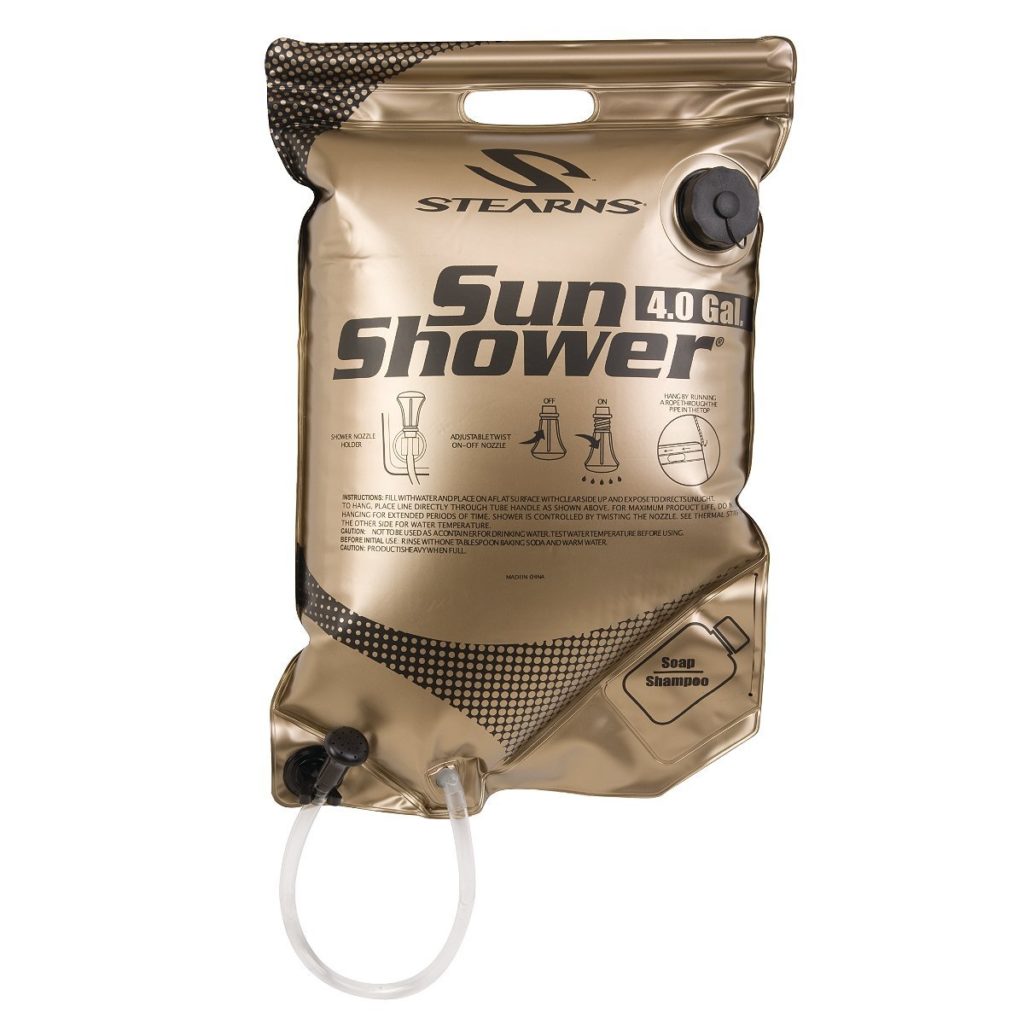
Even if they have a watermaker, most cruisers find they need to conserve water. Here are four easy ways to significantly cut down on the water you use – without sacrificing too much.
1. Use a Foot Pump. If you have a foot pump, turn off your pressure water except for times when you’re filling a large container. With pressure water, you waste some every time you turn the water on and off. And since most foot pumps put out a smaller volume, you don’t use as much when it is “running.” This is particularly effective for hand washing and tooth brushing.
If you’re thinking of installing one: Our boat had an in-floor Whale Tiptoe pump in the galley and although it pumped well, we never liked it. When it is not being used, it is supposed to latch down more or less flush with the floor by giving it a quarter-turn. We found that just the motion of the boat would cause the center “pump” part to pop up unexpepctedly, causing a number of stubbed toes. Despite the fact that it would have saved us water, we decided not to use it for this reason and taped it down with several layers of duct tape – not pretty, but it kept my toes happy!
Several friends have the Whale Cabinet Mount pumps and are very happy with them. I’ve spent two separate weeks on my friend Jan’s boat Winterlude with one, and think it’s a much better solution. Available from West Marine.
A small little watering can worked much better – I could control the amount of flow and where it went, it was easy to fill and store, and it never broke in the 5+ years that I had it. A one-quart size works well, and the shorter the spout, the better. My choice is at Amazon .
We used our sprayer for a variety of chores from washing snorkel gear to wiping salt spray off the windshield and sail bag zippers, as well as cleaning stainless. We also used it many times when we didn’t want to take a full shower, but wanted to quickly rinse salt water off ourselves – or our dog Paz.
The half gallon size was perfect for us – weighed just over 4 pounds full, held enough for most chores, and didn’t take up a lot of storage space. In five years of owning one aboard Que Tal, we had to replace our sprayer once, after about 3 years, when the spray nozzle broke off when the tank fell from the coach house roof through the companionway and onto the cabin sole after a pair of jet skis went by.
My recommendation is from Amazon (Sears and Home Depot carry similar ones, but where I live they charge about 30% more than Amazon).
4. Use a Sun Shower. Finally, using a Sun Shower instead of a pressure-water shower will substantially reduce the water used by most people. Initially, we were very skeptical of how well we’d like using a Sun Shower – using a plastic bag for a shower just seemed, well, so Mickey Mouse. Our boat didn’t have a water heater, the previous owner had left a Sun Shower, and so we figured we’d try it before we installed a hot water heater.
We found the Sun Shower worked perfectly well – while there wasn’t a huge amount of water pressure, there was plenty to rinse shampoo. Cruising in the tropics, the water definitely was hot enough – sometimes we’d have to cover the bag with a towel and let it cool down some so that we didn’t scald ourselves. And by being able to see how much we had left, we were able to judge how long we could stand under the shower.
A 4 or 5 gallon Sun Shower (depending on which we could find when we needed a new one) gave each of us a nice shower. Cruising full-time in the tropics – using it every day with lots of UV exposure – a Sun Shower would last about a year. After several ill-fated experiments with buying other brands, we’re convinced that the true Sun Showers last the longest. Place a towel under it if it’s on nonskid, to prevent chafing.
Although they are available at many camping stores, I’ve always found the best prices at Amazon .
At the dock, conserving water means less time spent filling the water tanks. In anchorages, if you have a watermaker, it means less time running the watermaker as well as less power needed by the watermaker — leaving more power for other things. And without a watermaker, it means more time in anchorages before having to go to town to refill.
We found these conservtion measures didn’t detract from our cruising but in fact added to it, by giving us more time and power for things other than filling the water tank!
Click here to read more Boat Galley tips from Carolyn Shearlock.
_ Do you have a simple solution for a problem on board? Send your idea and a photo to [email protected] . If we use your tip in the newsletter, we’ll send you a cool **_ Cruising World _ Hands-On Sailor t-shirt!**_
- More: cooking , Green Wakes , How To , Living Aboard , reader tip
- More How To

DIY Tips for Repairing Nonskid

Shaft Bearing Maintenance Tips

When the Wind Goes Light

How We Built Our Own Bulwarks

Hurricane Beryl Relief Efforts: How You Can Help

Gary Jobson To Talk U.S. Prospects in Upcoming World Sailing Competitions

For Sale: 2005 Tayana 48

Make Downwind Sailing Fun Again. Turn Off That Motor and Unfurl Your Kite!
- Digital Edition
- Customer Service
- Privacy Policy
- Email Newsletters
- Cruising World
- Sailing World
- Salt Water Sportsman
- Sport Fishing
- Wakeboarding

10 Great Ways To Conserve Water On A Boat
DISCLOSURE: THIS POST MAY CONTAIN AFFILIATE LINKS, MEANING I GET A COMMISSION IF YOU DECIDE TO MAKE A PURCHASE THROUGH MY LINKS, AT NO COST TO YOU. AS AN AMAZON ASSOCIATE I EARN FROM QUALIFYING PURCHASES. PLEASE READ MY DISCLAIMER FOR MORE INFO.
One of the major adjustments from living a land life to living on a sailboat full-time is being conscience of your water usage. It’s something you don’t think much about living on land, however, it’s something we are very well aware of living on a boat.
When we first moved on our sailboat full-time, we were still working full-time and living at a marina. This gave us a great adjustment period to start tracking our water usage and get some ideas of how we can conserve water on a boat.
While living at a marina with an unlimited water supply, we went through all 3 of our boat fresh water tanks, 193 gallons in total, each week on our 1998 Hunter 450 Passage . That’s an average of approximately 27.5 gallons a day for two people, and we were at work for 10+ hours a day, 5 days a week! I can’t imagine using that much water nowadays!
Since we sailed away in January 2023, 11 months ago, we are now using approximately 7 gallons a day for two people. Wow, that’s quite a change! So how did we get from 27.5 gallons a day to 7 gallons a day for two people? Below I will go over our 10 ways that we conserve water on a boat. And I do think it is worth noting that neither Scott nor I feel that we are “thirsty” for water (sorry, pun intended!) or feel deprived and wish we could use more (well, ok, an occasional loooong hot shower would be nice now and again).
Table of Contents
Conserve Water On A Boat: 10 Great Tips
1 minimize food scraps.
Before washing dishes, we follow the “clean plate club” and clean our plates, pots and pans off as much as possible.
When using our cast iron skillet , we make sure to scrape it off while it is still hot, as it is much easier for the food to come off the pan and then to clean it.
When using pots to cook things like rice, oatmeal, or mac and cheese, I add a small bit of water immediately after emptying the pot. This way the water gets hot from the hot pot, and the food stuck to the pot comes off much easier after soaking it while I’m eating my meal.
2 Wash Dishes With A Spray Bottle
Washing dishes can be a big consumer of water. After we have scraped excess food of our plates, we use a spray bottle filled with soapy water to spray them down with. We find that this uses less water than using the faucet to get them wet.
For extra buttery pots and bowls (I love popcorn, with lots of butter!), I wipe the pot and bowl out with paper towel first, to get as much butter off before washing. I find I use a lot less water, getting a lot of the butter off with a paper towel.
I will use straight dawn dish soap and water from the faucet on hard to clean (i.e. extra oily, greasy dishes) but I still use the dish soap sparingly, and can still get the dishes quite clean.

3 Collect Water Before Turning On The Shower Head
This is something we just started doing recently, and wow, does it save water on a boat!
We have a very clean bucket (used only for drinking water) that we place under the faucet in our shower. When we turn on the faucet and are adjusting the water temperature before switching the water to the shower head, the water collects in this bucket. When I switch to the shower head, I set the bucket just outside of the shower. By doing this, we collect approximately 0.5 – 1 gallon per shower that we can put back in our tanks.
4 Shower In The Ocean
Obviously, this one is seasonally and locationally dependent. We don’t do this in cold or dirty water. But when we were in the Bahamas earlier this year, we would wash up in the salt water, then just do a quick rinse off using our shower head located on our swim platform at the stern of the boat.
5 Collect Water To Rinse Off Snorkel Gear
After a snorkel outing, we like to rinse our fins , masks, and snorkels with fresh water. We also like a fresh water rinse ourselves! We will put a bucket underneath us to collect the fresh water from our rinse off. Then we simply dunk our snorkel gear in the bucket for their rinse off.

6 Take “Sea Showers”
I’m guessing all sailors who are trying to use less water are already doing this one. But by turning off the water while lathering my hair with shampoo, or washing up with soap, then turning the water back on to rinse it off does save quite a bit of water.
Other ways I conserve water while taking showers is to wash my hair every 2 or 3 days instead of everyday. My hair has adjusted to this quite well and I actually prefer not to wash it every day now.
I also only use shampoo when I wash my hair, instead of shampoo and conditioner. I have a leave-in conditioner that I love that I put in my hair after my shower. It also works great to put in your hair before getting in the salt water if you are trying to protect your hair from drying out.
7 Shower At Marinas
As you can see in our 6-month Budget Check-up , we spent more time that we would have liked at marinas in our first 6 months getting used to being full-time liveaboard cruisers. A plus side to staying at marinas is having access to water! We either take regular showers on the boat, not worrying about our water usage, or more likely (especially in places like the Bahamas where they charge extra for water), we use the marina’s showers. There is something to be said about not having to turn off the water during your shower!

8 Make Full Use Of Marina Water
In addition to using the marina’s showers, we try to make full use of having access to potable water when we can. It is during these times that we do the following chores that use up quite a bit of water:
- Defrost Our Fridge And Freezer – We empty the contents of our fridge and freezer, then pour warm water over the evaporator plates until the built-up ice melts and breaks free. As you can imagine, this can put a dent in your water supply.
- Wash Our Decks – Our top decks definitely need routine cleaning and this chore takes a bunch of water! So when you have access to good water pressure and an external water source, this is when we clean our top decks. Otherwise, a good rain can help keep them clean as well.
- Dog Baths – As much as Mangaux hates his baths, he feels (and smells) so much better after them! I have also been able to make use of dock carts as his bathtub!
- Fill Containers – Before we head out of a marina, I fill any container I can with potable water (i.e. tea kettle for coffee, water bottles for drinking, and any extra pitchers I have)

9 Collect Rain Water
Good, clean rain water is a great, free way to add to your tanks! I remember during one particular downpour while on a mooring ball in Hope Town Bahamas, we had our (clean) buckets out on deck and were able to collect several gallons of water that day.
I’ve thought about investing in a rain catching tarp, such as something like this , but we don’t have anything like this yet. Our concern is that there are often winds accompanying the rain, and are not sure how this would do in windy conditions. If anyone has any experience with this, or other ways to collect rain water, I would love to hear from you!

10 Our Switch To A Composting Head
During this past summer, we changed out one of our two manual pump marine heads to a composting head. Our manual marine pump heads use fresh water for flushing. Using somewhere around 1 pint (16 oz) give or take of water per flush, this can really add up when you are trying to conserve water.
We have noticed a significant difference in water usage since switching our primary-use head to the composting head.

Water Maker Note
With many boats having water makers onboard, water conservation may not be as much of a concern that for those without a water maker.
While we do have a water maker on board, it runs on DC power. Since it runs on DC power, it has a smaller output of approximately 5-6 gallons per hour. That means if we don’t stay on top of replenishing our water, or can’t make water due to where we are anchored, we can quickly fall into a water deficit if we’re not careful. This is why we work on conserving water as much as possible.
For example, we have been anchored in West Palm Beach for a good weather window to cross over to the Bahamas. We know we can make water once we get to the Bahamas, but the water in Lake Worth in West Palm Beach is not the best quality for making water.
We arrived in West Palm Beach on November 30 th , and 20 plus days later, we are still waiting for a good weather window. While West Palm Beach has great dinghy docks for shore access, they do not have any fresh water access. Therefore, we must make our fresh water last as long as possible. We plan to take on fuel and top off our tanks at a marina before sailing off to the Bahamas.
Saving Water Summary
It is eye opening to see just how little water you can live on each day. We went from 27.5 gallons a day living at a marina to 7 gallons a day living on anchor.
After almost a year of living aboard full-time away from a homeport marina, we are still finding ways to reduce our water consumption even more. It is great to know we now saving 0.5 – 1 gallon per shower, fresh water that used to just literally go down the drain.
I’d love to hear from you on ways you collect rain water, do boat dishes, and other ways you conserve water living on a boat. Leave your comments below or comment on Facebook and Instagram at SVPelagia and @sv_pelagia .
Live your dream,

Share this:
Jill Bockenstette has been sailing for 10 years and has lived aboard her 1998 Hunter 450 Passage, Pelagia, full-time for nearly 3 years. She has traveled over 5000 nautical miles in the Mobile Bay, Gulf of Mexico, east coast of the United States, the Bahamas and the Caribbean. She loves to share her passion for sailing and things she has learned along the way in this salty lifestyle.
Similar Posts

Favorite Weather Apps For Sailing: Discover The Best Features
Learn about our favorite weather apps for sailing, their top features, and the pros and cons of each app or website we like to use.

Sailing Interview With SV Vagari – Wandering Through The Waves And New Adventures
Learn about SV Vagari’s travels in this sailing interview with Tyler and Casie. Learn how they are acclimating to the fulltime liveaboard livestyle.

Living With A Dog On A Sailboat
Living with a dog on a sailboat is challenging, but also rewarding. Learn about the ups and downs, and how to prepare your dog for life at sea.

Practical Gift Ideas for Sailors
Check out thee 32 practical gift ideas for your sailing or outdoor enthusiast. Gifts include ideas for the galley, relaxation, clothing, safety and more.

St. Martin Sailing: Helpful Tips For Cruisers | Fun Things To Do
Learn helpful tips for St. Martin sailing such as clearing in and out, bridge schedules, marine supply stores, provisioning, and fun things to do here.

Hunter 450 Passage Review – An Insightful In Depth Look
Learn all about the Hunter 450 Passage in this review. See interior pictures and learn about the pros and cons of this sailing vessel.
Yachting World
- Digital Edition

Water for sailing: We survey the ARC fleet to find popular options
- Toby Hodges
- June 24, 2021
How to stow, conserve or generate drinking water for sailing is key for any offshore sailor. Toby Hodges surveyed the 81 skippers of the ARC 2020 fleet for tips

Water is the source of all life. For any sailor considering extended cruising or an ocean crossing , the ability to carry or produce sufficient fresh water for sailing is a top priority.
But how do you decide how much water to ship or how best to generate your own? Our survey of the Atlantic Rally for Cruisers (ARC) fleet last year focused on water.
We asked the skippers how much water they carried for sailing, in what form, how it was used and, for the majority with watermakers, detailed questions about the generation of water and how the equipment performed at sea.
Since we last ran a survey on this topic in 2014 our collective attitude towards waste has arguably changed for the better. That fleet of 193 yachts carried over 28 tonnes of bottled water with them across to the Caribbean. All sailors today should consider how every consumable item they carry aboard will be disposed of when they reach their destination.

Pogo 12.50 Rush. Photo: James Mitchell
The main decision ocean sailors face with water stowage is whether to fit a watermaker, which is both a practical and a financial decision. Generating your own water is one of the best investments cruising sailors can make towards comfort and true independence.
ARC skippers over the past two decades have consistently described watermakers as one of their most vital pieces of equipment. “To us, a watermaker is the single best thing you can have for cruising by a fair margin and fully changes the game,” thinks Rush ’s Ian Baylis.
Three-quarters of the skippers who replied to our survey had watermakers aboard. The seven yachts listed as not carrying one were all smaller entries between 35ft and 45ft and typically over 20-year-old models. They carried extra water in bottles and jerrycans and used it sparingly.
Usage and conservation of water for sailing
Being frugal with water becomes second nature to most cruisers. The majority of respondents said their crew only showered every three days, 12 every two days and 13 daily.
One of the most common pieces of advice from skippers concerning water conservation is to fit a saltwater tap and to use seawater whenever you can. “Cook with salt water when possible,” advises the crew of Montana , a Swan 48 S&S from 1973. Yet over half of the respondents did not have a saltwater tap fitted in their galley, nor even a manual freshwater pump in the galley or the heads.

“The saltwater tap in the galley is essential,” thinks Tobias Gröpper on his Sunbeam 44 Pivot . “We still have 50% of our tank capacity on arrival although we took showers etc.”
Jorn Aalefjær, the Norwegian skipper of Ticora III , and Dane Martin Nielsen aboard his Jeanneau 53 also both stressed the benefit of fitting a saltwater tap.
Suffisant , one of the smallest entrants, a Beneteau Oceanis Clipper 331 from 1990, has only small tanks, but uses a Katadyn Power Survivor 40E watermaker. They used salt water to wash with and had manual taps fitted in the galley and heads.
Swiss skipper Marina Passet says: “Salt water is no use for washing clothes, but can be used for brushing teeth, washing dishes and vegetables.”
Article continues below…

Water on board: what should you carry? We ask ARC skippers for tips for an Atlantic crossing
Water is fundamental to every sailor’s survival at sea and one of our first priorities. To spend extended periods afloat,…

Catamaran sailing across the Atlantic: Why multihulls are taking over the ARC
Something big has happened in ocean sailing. It could be the tipping point in the 34-year history of the Atlantic…
Seasoned cruising sailors the Blacks aboard Bowman 57 Emily Morgan , say they have used their set-up for 8,500 miles and would not do anything differently. They relied on their Spectra Ventura watermaker, but advise closely monitoring the tanks: “We graph tank levels daily,” says Anna Black. “If the level is below the line then no more fresh water showers until it returns. Allow 20% extra in case of problems.”
Many other crews, including on the Sunbeam 42.1 Ibex , were happy relying on desalinated water without needing large back-up quotas of water.
The Chung family aboard Kaizen use a four-filter system to purify their water and drink everything from the tank. They have an instant hotwater tap, and “we make our own sparkling water and have reuse cannisters for emergency”, says Kean Chung. Their Oyster 49 has 1,000lt tanks and a Sea Fresh H20 watermaker, so the crew were able to shower daily and there was no need for any bottled water.
Water stowage
There should be no need to rely on single-use plastic water bottles when cruising. Reusable bottles, flexible or collapsible bladders and jerrycans are a perfectly adequate solution for storing reserve water, particularly if you have a good filtration system.

Use salt water when possible, for washing clothes, dishes or taking showers. Photo: Thomas Horgen
Recycling plastic is not possible on many islands. While in recent years IGY Rodney Bay Marina has provided a plastic recycling service for visiting yachts, run in co-operation with a local community group, due to COVID restrictions the service was suspended in 2020.
So it was disheartening to find that nearly half the fleet still shipped over 100lt of bottled water each, while seven yachts carried over 250lt of bottled water, despite five of these having a watermaker.
Many skippers still like to carry bottled water as a contamination-proof back-up or for monitoring intake. Aboard Escapado for example, a Beneteau first 40.7 with no watermaker, they carried over 250lt of bottled water.
Skipper Sophie Iona O’Neill says: “One person kept a tally and did three fills of everyone’s water each day.” She says the total daily consumption amounted to: “two litres of drinking water per person, plus one litre of tea/coffee, giving a total of 3lt of fluid per person, per day,” – a useful statistic for those planning water consumption.
Water generation
If installed correctly and serviced properly, a watermaker should perform consistently well. The majority of 2020 ARC skippers rated their watermakers most highly, with 70% giving 5/5 for reliability.

Wash-up in seawater, then just rinse in fresh. Photo: Tor Johnson
Just eight skippers reported having any issues with their equipment. Any problems were either fixed with spares or the result of another issue, such as a power source problem ( Adagio had issues with their genset and, in the case of the Malo 43 Ydalir II , the fault was traced to a leak onto the inverter).
The few who experienced any faults with their watermaker’s performance were typically those who had only installed it that season. The overriding advice is to make sure you have tested your system thoroughly at sea before embarking on an ocean passage.
With prices typically ranging from £4,000 to five figures, it is worthwhile making sure a watermaker is working smoothly and knowing how to service it properly in advance.
Have the power
The ability to harness power naturally and to store it efficiently is changing the watermaker world. “If you don’t want to use diesel to make water you need a lot of power generation,” warns Lucky Girl ’s Charlie Pank, who has a Schenker Modular 30. However, only five skippers say they increased their battery capacity when their watermaker was fitted.
Paul Lemmens was very happy with his Rainman AC 120lt per hour unit aboard his Hanse 455 Veni Vidi Vix , but advises: “You need good batteries/large inverter to function.” He fitted an extra 400Ah of lithium batteries when the watermaker was installed.
The advent of high DC power has had a marked effect on watermakers, says Mactra Marine’s Jim MacDonald, who, COVID restrictions apart, usually attends the ARC start for any last-minute watermaker problems or services. “Go for a low-energy system that will run off the batteries,” he advises. A good bank of solar panels or a hydrogenerator can really help – nearly half the fleet used solar to help charge their batteries.

Many of the crews in the ARC still carry significant amounts of bottled water.
“As lithium has become more prevalent, DC systems with energy recovery are coming into their own,” MacDonald continues. “This means that whatever your means of power generation, you can always use your watermaker – whereas with the old-fashioned AC/high-pressure pumps you had to run the genset to make it work.” He has also seen the reliability of modern watermakers improving as they increasingly use electronics where possible.
Despite its modest output of 20lt per hour, the Blacks on Emily Morgan rate their Spectra Ventura very highly. They installed it themselves in 2017 and describe it as “invaluable in the Pacific – simple and reliable”.
The German Schaals aboard their Bavaria Cruiser 42 Nikajuma say they wouldn’t change their set-up and that the Echo Tec DML260 always worked – but noting “that the test tap is very important”.
Filtering water
Whether storing water in tanks or making desalinated water from the sea, filtering out any impurities makes sense. “We added 5ml of chlorine in the tank to kill bacteria and used LaVie water purifiers to get the chlorine smell out of the tap water we drank,” says Patrice Charbon, who was sailing the new Fountaine Pajot Astrea 42 Eden Blue for LP4Y with four friends.

Bottled water is still popular on board, despite the potential environmental impact. Photo: James Mitchell
They were trialling a new form of UVA water filtration technology on their desalinated water. Charbon, an associate of the inventors Solable, explains: “The strong LED light beam generates UVAs which break the chlorine molecules. As a side effect, an advanced oxidation process flushes the water eliminating all molecules of pesticides, medicine or hormones that one can find in tap water.
“A 30-minute purification would bring fresh, pure water to our table every day,” concludes Charbon, calculating that the watermaker and filters helped them save “over 200 plastic water bottles for our crossing and over 12kg of PET since our departure”.
If you enjoyed this….
Yachting World is the world’s leading magazine for bluewater cruisers and offshore sailors. Every month we have inspirational adventures and practical features to help you realise your sailing dreams. Build your knowledge with a subscription delivered to your door. See our latest offers and save at least 30% off the cover price.

Beginner’s Guide: How to Live on a Sail Boat and Embrace the Ultimate Seafaring Lifestyle
Alex Morgan
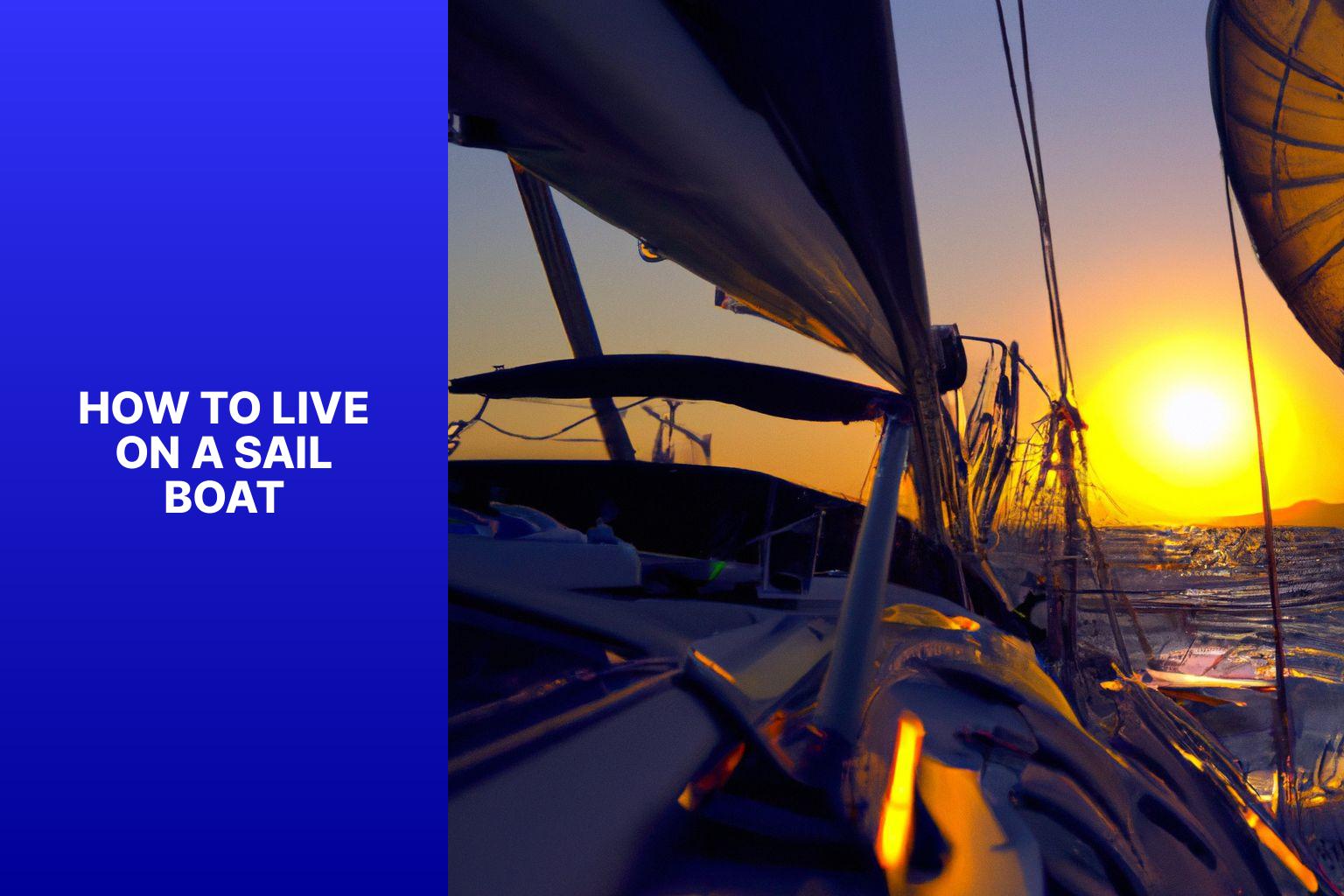
Living on a sailboat offers a unique and adventurous lifestyle that allows you to connect with nature and experience a sense of freedom and flexibility. It also comes with its own set of challenges and requires specific skills and preparation to ensure a safe and comfortable experience.
In this comprehensive guide, we will explore the ins and outs of living on a sailboat, from the benefits it offers to the practical considerations and essential skills needed. Whether you’re considering a permanent or temporary sailboat residence, this article will provide you with the information you need to make the most of this alternative lifestyle.
First, we’ll delve into an introduction to living on a sailboat, highlighting the allure and unique aspects of this lifestyle. We’ll then move on to discuss the benefits of living on a sailboat, including the freedom and flexibility it offers, the cost-effective nature of this lifestyle, and the opportunity to live in closer harmony with nature.
Next, we’ll delve into the preparation required before embarking on a sailboat living adventure. This includes choosing the right sailboat, ensuring safety and emergency preparedness, and acquiring the necessary sailing skills. We’ll provide tips and guidance to help you make informed decisions in each of these areas.
Once the preparatory phase is complete, we’ll explore the essential skills needed for living on a sailboat. This includes navigation and seamanship, weather forecasting and planning, as well as anchoring and docking techniques. These skills are crucial for ensuring a smooth and enjoyable sailboat living experience.
Moving on, we’ll cover practical considerations for living on a sailboat, such as managing limited space, basic maintenance and repairs, and staying connected with the outside world through internet and communication. These insights will help you navigate the unique challenges associated with living in a confined space and maintaining a comfortable living environment.
In addition to practical considerations, we’ll address the specific aspects of living comfortably on a sailboat. This includes managing power and energy, ensuring a steady supply of water and conservation practices, and handling cooking and food storage efficiently.
We’ll emphasize the importance of staying safe and healthy while living on a sailboat. We’ll cover topics such as first aid and medical preparedness, dealing with seasickness, and maintaining sun protection and proper hygiene.
By the end of this guide, you’ll have the knowledge and understanding needed to live on a sailboat confidently and enjoyably. So, let’s embark on this exciting journey and discover the wonders of sailboat living.
Key takeaway:
- Living on a sailboat offers freedom and flexibility: It allows individuals to have a nomadic lifestyle and explore different locations at their own pace.
- Living on a sailboat is a cost-effective lifestyle: Compared to traditional living arrangements, the expenses associated with living on a sailboat can be significantly lower. This includes reduced or eliminated housing costs and decreased energy consumption.
- Living on a sailboat brings you closer to nature: With the ability to anchor in remote locations and experience breathtaking landscapes and wildlife, living on a sailboat allows for a deep connection with the natural world.
Benefits of Living on a Sailboat
Living on a sailboat brings a world of incredible benefits. Imagine the freedom of exploring new horizons, the flexibility to chart your own course, and the sheer joy of being closer to nature. These are just some of the advantages that come with this unconventional lifestyle. Discover the untethered experiences and cost-effective living that await those who choose to call a sailboat their home. Get ready to embrace a life filled with adventure , simplicity , and a deep connection with the open waters.
Freedom and Flexibility
Living on a sailboat offers the ultimate freedom and flexibility. Here are the key benefits that come with this unique lifestyle:
1. Exploration: Living on a sailboat allows you to freely explore various destinations and coastal areas at your own pace. You have the freedom to change your location whenever you desire, embarking on new adventures whenever the mood strikes.
2. Flexible Schedule: One of the greatest advantages of living on a sailboat is the flexibility it offers. You can set your own itinerary, adjusting plans based on weather conditions and personal preferences. This means you can fully embrace spontaneity and have the freedom to make the most of every moment.
3. Adaptability: With a sailboat as your home, you have the incredible ability to adapt to changes in your environment. If you find a location that captures your heart, you can choose to stay longer, fully immersing yourself in the beauty and charm of your surroundings.
4. Financial Freedom: Living on a sailboat can also be a wise financial choice. By eliminating expenses like rent and utilities, you have the freedom to allocate your resources towards other priorities or unique experiences that bring you joy and fulfillment.
5. Connection with Nature: Imagine waking up to breathtaking sunrises, listening to the gentle sounds of waves, and being surrounded by the tranquil beauty of nature. Living on a sailboat allows you to have an intimate connection with the natural world, providing you with a sense of peace and harmony that is hard to find elsewhere.
6. Independence: Living on a sailboat fosters independence and self-reliance. As you navigate the waters, handle the boat, and manage limited resources, you develop a strong sense of confidence and sharpen your problem-solving skills. This newfound independence empowers you to embrace challenges and overcome obstacles with grace and resilience.
By embracing the freedom and flexibility that living on a sailboat offers, you can truly lead a fulfilling and enriching lifestyle. It allows you to fully embrace your adventurous spirit, appreciate the awe-inspiring beauty of nature, and live in a more flexible and cost-effective way.
Cost-Effective Lifestyle
Living on a sailboat offers a cost-effective lifestyle due to several factors. It significantly reduces living expenses. Unlike traditional housing, there are no mortgage or rent payments when living on a sailboat. Marina fees often cover utilities such as electricity and water. Sailors can also adopt alternative methods like solar power and rainwater collection to further cut down on costs.
Sailboats have minimal maintenance costs. While regular maintenance is necessary, the expenses associated with repairs are generally lower compared to maintaining a house or apartment. Sailors can learn basic maintenance skills and handle many tasks themselves, reducing the reliance on expensive professional services.
Owning a sailboat eliminates the need for a car in many cases, resulting in lower transportation expenses. Sailors can rely on their boat for transportation and freely explore various destinations without incurring additional travel costs.
Living on a sailboat also encourages a more minimalist lifestyle , promoting reduced consumption. With limited space onboard, sailors are compelled to carefully consider their possessions and only keep what is necessary. This approach helps trim spending on non-essential items.
Living on a sailboat fosters a closer connection with nature. It allows individuals to enjoy the beauty of nature and explore coastal areas. This lifestyle offers opportunities for engaging in free activities such as fishing , swimming , and beachcombing , as opposed to costly entertainment options.
Embracing a cost-effective lifestyle on a sailboat requires careful budgeting and prioritizing experiences over material possessions. By choosing to live on a sailboat, individuals can lead a more affordable, adventurous, and fulfilling life.
Closer to Nature
Living on a sailboat provides the advantage of being closer to nature. This proximity allows individuals to naturally appreciate the beauty of the natural world and immerse themselves in it. Here are some ways in which living on a sailboat brings you closer to nature:
1. Spectacular Scenery: Just imagine waking up to breathtaking sunrises over the open sea or witnessing stunning sunsets. Living on a sailboat means constantly being surrounded by majestic views and ever-changing landscapes.
2. Marine Wildlife: Being on the water offers the opportunity to observe marine wildlife up close. From dolphins and whales to sea turtles and colorful fish, you can witness the wonders of the ocean from your own floating home.
3. Sound of the Waves: The soothing sound of waves lapping against the hull creates a calming ambiance. The gentle rocking motion of the boat further enhances this serene experience, creating a deep sense of peace and tranquility.
4. Disconnecting from Technology: Living on a sailboat often means limited access to technology, enabling you to disconnect from the constant buzz of devices and fully immerse yourself in the present moment. This freedom from distractions allows for a deeper connection with nature.
I had the incredible experience of living on a sailboat for a few months. One morning, as I enjoyed my coffee on the deck, I was amazed to see a pod of dolphins gracefully swimming alongside the boat. I felt a sense of awe and gratitude for the opportunity to witness such a magnificent sight. It was a truly magical moment that reminded me of the beauty and harmony of nature. Living on a sailboat brought me closer to nature in ways I never thought possible, and those memories will forever be cherished.
Preparing to Live on a Sailboat
Preparing to live on a sailboat involves important considerations that will make your experience smooth and enjoyable. We’ll dive into various aspects of this adventure, including choosing the right sailboat that suits your needs, ensuring safety and emergency preparedness for peace of mind, and mastering the art of sailing . Buckle up as we navigate through the essentials of preparing for an incredible life on the open seas!
Choosing the Right Sailboat
When choosing the right sailboat, consider key factors:
- Size: Choose a sailboat size based on your needs and use. Smaller sailboats are easier to handle and larger sailboats offer more space and comfort.
- Design: Consider the sailboat’s design, including the hull shape, keel type, and rigging. Different designs suit various sailing conditions and purposes.
- Condition: Inspect the sailboat’s structural and mechanical condition. Look for damage or wear and ensure all components work properly.
- Sailing Performance: Evaluate the sailboat’s sailing capabilities, including speed, stability, and responsiveness. Assess the sailboat’s performance based on your skill level and sailing goals.
- Layout: Take into account the sailboat’s layout and interior space. Consider the number of cabins, galley and saloon size, and storage capacity to meet living requirements.
- Budget: Determine your sailboat purchase budget and consider maintenance, repair, and ongoing expenses like mooring fees and insurance costs.
By carefully considering these factors, you can choose the right sailboat that meets your needs and ensures a safe and enjoyable sailing experience.
Safety and Emergency Preparedness
Safety and emergency preparedness are crucial when living on a sailboat. It is essential to incorporate safety measures and be well-prepared for emergencies. Here are some key steps to ensure your safety on a sailboat:
1. Install safety equipment: Make sure to equip your sailboat with important safety equipment such as life jackets , fire extinguishers , a first aid kit , and emergency flares . These items are crucial in emergencies and can significantly increase your chances of survival.
2. Learn CPR and first aid : Having knowledge of CPR and basic first aid can be life-saving. Consider taking a course to learn these essential skills and be prepared to handle medical situations.
3. Develop a communication plan: It is vital to have a communication plan in place during emergencies. Ensure you have a reliable means of communication onboard, such as a marine radio or satellite phone . Familiarize yourself with emergency channels and protocols.
4. Maintain a float plan: Before setting sail, inform someone on land about your plans. Share details like your intended route, expected return time, and contact information. This way, authorities can be notified if you do not return as scheduled.
5. Practice emergency drills: Regularly conduct drills to prepare for various emergency scenarios. This includes practicing man overboard drills , fire drills , and emergency procedures like deploying a life raft .
Remember, prioritizing safety is paramount when living on a sailboat. By having the necessary safety equipment and knowledge, you can enjoy your sailing adventure while minimizing risks.
In April 2018, a sailing couple encountered a severe storm while crossing the Pacific Ocean. Despite facing damage to their sailboat from high winds and waves, their commitment to safety and emergency preparedness allowed them to navigate through the storm and stay safe. They attributed their successful survival to their training in emergency procedures and the presence of safety equipment onboard. This incident serves as a reminder of the importance of being well-prepared and equipped for emergencies while living on a sailboat.
Learning to Sail
Learning to sail is crucial for individuals living on a sailboat. Acquiring proficiency in sailing is necessary to ensure a safe and enjoyable experience on the water. It is important to consider the following key points when embarking on this journey:
1. Mastering basic sailing techniques: It is essential to grasp the skills necessary to properly trim sails, steer the boat, and control speed and direction. Learning these techniques will allow for effective navigation and maneuvering.
2. Prioritizing safety measures: Acquiring knowledge about wearing a life jacket, understanding right of way rules, and identifying potential hazards is paramount. Knowing how to handle emergencies such as a man overboard situation or sudden changes in weather is crucial.
3. Developing navigation skills: Gaining the ability to read charts, utilize navigation instruments, and plot a course with confidence is vital. Understanding buoyage systems and navigational markers will contribute to a successful sailing experience.
4. Being aware of weather conditions: Analyzing weather forecasts and comprehending the implications of different weather conditions is key in planning safe sailing trips. Interpreting wind patterns and anticipating weather changes will enhance overall preparedness.
5. Emphasizing practice and experience: Dedicate ample time to practice sailing on the water. Considering enrolling in sailing courses or joining sailing clubs can provide practical experience and valuable lessons from experienced sailors.
It is important to remember that learning to sail requires time and dedication. Both theoretical knowledge and hands-on experience are necessary components. By cultivating these skills, individuals will be well-prepared for their sailboat adventure.
Essential Skills for Living on a Sailboat
Mastering the art of living on a sailboat requires a set of essential skills. From navigation and seamanship to weather forecasting and planning, and finally anchoring and docking, each sub-section unlocks crucial knowledge for a smooth sailing experience. Discover the secrets of successful sailors and embark on a journey where precision , adaptability , and a deep understanding of the elements pave the way to a fulfilling life on the open seas.
Navigation and Seamanship
When it comes to navigation and seamanship on a sailboat, there are several essential skills and techniques to consider:
1. Understand charts and navigation tools: Familiarize yourself with nautical charts, compasses, and GPS systems to plot your course and determine your position.
2. Use navigational aids: Learn how to interpret and use navigational aids such as buoys, beacons, and lighthouses to navigate safely.
3. Maintain a proper lookout: Always keep a lookout for other vessels, obstacles, and navigational hazards to ensure safety.
4. Master sail trim: Learn how to adjust the sails to optimize performance and maneuverability in different wind conditions.
5. Understand wind and weather patterns: Analyze weather forecasts and recognize wind patterns to make informed decisions at sea.
6. Practice effective communication: Establish clear communication protocols with your crew to ensure safe navigation.
7. Navigate in different environments: Gain experience in various environments to adapt to different challenges and conditions.
8. Master basic boat handling: Develop proficiency in maneuvering your sailboat to safely navigate in tight spaces.
9. Understand collision regulations: Familiarize yourself with international rules of the road to prioritize safety.
By honing these navigation and seamanship skills, you can confidently navigate your sailboat for a safe and enjoyable experience on the water.
Weather Forecasting and Planning
Weather forecasting and planning are crucial skills for living on a sailboat. It is important to stay updated by regularly checking weather forecasts and updates to stay informed about current and upcoming conditions. This will help you plan your sailing trips .
To understand weather patterns , study different weather patterns and their impact on sailing . Learn about wind directions , tides , and currents in your area. This knowledge will aid navigation and decision-making at sea.
Use multiple sources such as meteorological websites , radio broadcasts , and weather apps to gather information and cross-check forecasts. Different sources may provide slightly varying predictions, so it’s important to have a comprehensive understanding .
Consider local knowledge and seek advice from experienced sailors familiar with the area you’ll be sailing in. They can offer valuable insights into local weather patterns and help anticipate potential challenges.
Prioritize safety when it comes to weather conditions. Avoid sailing in severe weather , storms , or strong winds that may endanger you or your vessel. Have a contingency plan in case weather conditions suddenly deteriorate while at sea.
To enhance your sailing experience , develop your ability to interpret weather data and make informed decisions. Take sailing courses or attend workshops on weather forecasting and planning to improve your expertise in this area.
Anchoring and Docking
Anchoring and docking are essential skills to acquire when living on a sailboat. Mastering these skills requires considering various factors for successful anchoring and docking:
1. Location: When choosing a spot for anchoring, it is important to find a suitable area that offers shelter from wind and waves. Look for a bottom that is sandy or muddy to ensure a secure hold.
2. Anchor Type: It is crucial to select the right anchor for your boat and the conditions you will face. Popular anchor types include plow anchors, Danforth anchors, and mushroom anchors.
3. Anchor Size: Ensure that you use an anchor that is appropriate in size for your boat’s length and weight. As a general guideline, the anchor should weigh 1 pound per foot of boat length.
4. Scope: The scope refers to the ratio of anchor rode length to water depth. For calm conditions, use a minimum scope of 7:1, but in rough weather, increase it to 10:1 or more.
5. Setting the Anchor: Drop the anchor, release enough rode, and slowly reverse the boat to firmly set the anchor in the seabed. Give it a strong tug to confirm that it is securely in place.
6. Docking: Practicing docking skills is essential to safely maneuver your boat into a slip or alongside a dock. Approach the dock slowly and use fenders to protect your boat from any potential damage.
7. Lines and Fenders: Before docking, make sure to prepare your lines and fenders to facilitate a smoother process. Properly secure the lines using cleats and knots.
8. Wind and Current: Consider the direction of wind and current when maneuvering your boat for docking. Utilize them to your advantage in order to control the movement of your boat.
Regular practice is key to mastering anchoring and docking. With time and experience, you will enhance your proficiency in these skills, ensuring a safe and enjoyable life on a sailboat.
Practical Considerations for Living on a Sailboat
Living on a sailboat requires a unique set of practical considerations that make this lifestyle both challenging and rewarding. In this section, we’ll dive into the nitty-gritty details of managing limited space, mastering basic maintenance and repairs, and staying connected while sailing the open waters. Get ready to sail into a world where every inch counts, where self-reliance is key, and where the constant motion of the waves becomes a way of life.
Managing Limited Space
Managing limited space is crucial on a sailboat. Here are steps to effectively manage limited space:
1. Organize: Keep belongings organized and declutter regularly. Use storage containers, shelves, and hanging organizers to maximize vertical space.
2. Choose multi-purpose items: Opt for furniture and equipment that can serve multiple purposes. For example, select a table that can also be used for storage.
3. Use space-saving storage solutions: Utilize under-bed storage compartments, collapsible boxes, and vacuum-sealed bags to make the most of limited storage space.
4. Embrace a minimalist lifestyle: Prioritize essential items and avoid unnecessary clutter.
5. Get creative with storage: Look for hidden compartments and use every available space. Consider wall-mounted hooks and nets for hanging and storing items.
6. Utilize vertical space: Install wall-mounted shelves and hooks to store items off the floor. Use hanging organizers for small items like toiletries and kitchen utensils.
7. Choose compact appliances and fixtures: Opt for smaller-sized appliances and fixtures designed for small spaces, such as compact stoves, mini fridges, and foldable furniture.
By following these steps, you can effectively manage limited space on a sailboat and create a comfortable living environment.
Basic Maintenance and Repairs
Basic maintenance and repairs are crucial for living on a sailboat. Here are some important tasks to consider:
- Clean and inspect the boat regularly to prevent mold, mildew, and corrosion.
- Check and clean the sails to ensure good condition.
- Inspect and maintain the rigging, including the mast, boom, and standing rigging.
- Check the hull and keel integrity for cracks or damage.
- Test and maintain the boat’s electrical system, including batteries and wiring.
- Clean and service the engine regularly for smooth operation.
- Inspect and maintain the plumbing system, including freshwater and waste systems.
- Perform routine maintenance on onboard equipment and systems, such as navigation instruments and safety equipment.
- Promptly repair any damage or leaks to prevent further issues.
- Keep a supply of spare parts and tools onboard for quick repairs.
Taking care of these basic maintenance and repairs tasks will keep your sailboat in good condition and always ready for your next water adventure.
Staying Connected
When living on a sailboat, staying connected is crucial for communication and accessing information. Here are some ways to ensure you can stay connected while sailing:
1. Mobile Internet: Get a reliable mobile internet plan or hotspot device for internet access onboard. This allows you to stay connected to email, social media, and browse the web.
2. Satellite Communication: Consider getting a satellite phone or satellite internet service for offshore communication. This ensures a connection even when you’re far from land or in remote areas.
3. VHF Radio: A VHF radio is essential for marine communication. It lets you communicate with other boats, marinas, and emergency services. Make sure you know how to use it properly.
4. Wi-Fi Boosters: Install a Wi-Fi booster antenna on your sailboat to amplify Wi-Fi signals from nearby marinas or hotspots. This can help you stay connected when you’re close to shore.
5. Weather Updates: Stay updated with weather forecasts for safe sailing. Use weather apps or listen to weather broadcasts on marine radios to plan your routes.
Staying connected is important for safety and convenience on a sailboat. By using the right tools and technology, you can maintain communication and access information wherever your sailing adventures take you.
Fun fact: Sailboats have been used for transportation and exploration for thousands of years. Ancient sailors used the wind’s power to navigate and explore the seas.
Living Comfortably on a Sailboat
Transitioning to a life at sea can be an exciting adventure, but how can you ensure a comfortable living on a sailboat? In this section, we’ll be exploring key aspects of living comfortably on a sailboat, including managing power and energy , water supply and conservation , as well as cooking and food storage . So, get ready to dive into practical tips and strategies that will enhance your sailboat living experience, making it a smooth journey all the way!
Managing Power and Energy
Managing power and energy on a sailboat is crucial for a comfortable and efficient living experience. Consider the following to effectively manage power and energy:
1. Invest in solar panels or wind generators to harness renewable energy and reduce reliance on fuel-powered generators. This sustainable approach promotes eco-friendly practices while ensuring a continuous power supply.
2. Utilize LED lights to minimize power consumption while providing bright illumination. LEDs are energy-efficient and contribute to a more sustainable power usage on board.
3. Opt for energy-efficient appliances , such as marine-specific refrigerators and fans. These appliances are designed to consume less power while still meeting your needs on the sailboat.
4. Implement smart battery management strategies by turning off lights and electronic devices when not in use. Consider utilizing a battery monitoring system to effectively keep track of battery usage and ensure a steady power supply.
5. Incorporate energy-saving techniques for heating and cooling , such as insulation and natural ventilation. These measures help minimize energy wastage and maintain a comfortable onboard environment.
To illustrate the effectiveness of these methods, let’s consider the experience of John , an experienced sailor. John installed a combination of solar panels and wind generators on his sailboat, allowing him to meet his energy needs sustainably. By also using LED lights and energy-efficient appliances, he successfully minimized power consumption. John implemented smart battery usage practices, which ensured a consistent power supply throughout his journey. With these measures in place, John was able to enjoy a comfortable and sustainable lifestyle on his sailboat, significantly reducing his environmental impact while embarking on his adventure.
Water Supply and Conservation
Living on a sailboat requires careful consideration of water supply and conservation. Water supply and conservation are crucial factors to keep in mind when living on a sailboat. Here are some important factors to consider in order to prioritize water supply and conservation:
1. Water storage: Sailboats have limited space, so it is important to plan for adequate water storage capacity. It is recommended to install additional water tanks or collapsible containers to maximize storage capacity.
2. Monitoring water usage: Being mindful of water consumption is essential. It is important to keep track of the water used for various activities such as dishes, personal hygiene, and others to avoid wastage.
3. Water filtration systems: Investing in a reliable water filtration system is highly recommended to ensure clean and safe water. Look for systems that can effectively remove impurities and harmful elements.
4. Rainwater harvesting: Utilizing rainwater is a great way to conserve water. Installing a collection system on the boat can help in collecting rainwater and using it for non-potable purposes like rinsing equipment or cleaning the deck.
5. Desalination: Installing a desalination system can provide a sustainable source of drinking and cooking water on longer journeys. This system can convert seawater into freshwater, ensuring a constant supply of water.
6. Conservation techniques: Implementing water conservation techniques is vital. Save water by taking quick showers, turning off faucets when not in use, and reusing water whenever possible. These simple practices can make a significant difference in conserving water.
7. Educating crew members: It is important to ensure that everyone on board understands the importance of water conservation and actively promotes responsible water usage. Educating crew members about the significance of water conservation can go a long way in achieving sustainable water supply.
By prioritizing water supply and conservation, sailors can maintain a steady and sustainable source of water while minimizing their environmental impact. Always remember, every drop counts!
Cooking and Food Storage
When living on a sailboat, cooking and food storage are essential considerations. Here are some important factors to keep in mind:
1. Storage Space:
Efficiently organize food storage on a sailboat using bins, baskets, and containers.
2. Non-Perishable Food:
Stock up on canned foods, dried fruits, nuts, and grains with longer shelf lives.
3. Meal Planning:
Plan meals in advance to avoid wastage and ensure you have enough provisions. Create a menu and shopping list to stay organized.
4. Galley Equipment:
Equip the sailboat’s kitchen with essential cooking tools such as pots, pans, cutlery, and utensils. Choose compact and multi-purpose items.
5. Fresh Produce:
Include fresh fruits and vegetables in your diet. Opt for produce that can be stored without refrigeration, like apples, potatoes, and onions.
6. Cooling Options:
Invest in a reliable cooler or refrigerator to keep perishable items fresh. Consider energy-efficient options or portable ice chests powered by solar panels.
By considering these factors, you can enjoy an efficient and enjoyable cooking and food storage experience while living on a sailboat.
Throughout history, sailors have mastered cooking and food storage to sustain themselves during voyages. They stock up on non-perishable items, utilize clever storage solutions, incorporate fresh produce, and invest in cooling options. By following these practices, you can enjoy delicious meals and ensure your food remains fresh and accessible during your sailboat adventure.
Staying Safe and Healthy on a Sailboat
Navigating the high seas and living on a sailboat is an exhilarating adventure, but it’s essential to prioritize your safety and well-being. In this section, we will explore some crucial aspects of staying safe and healthy on a sailboat. From first aid and medical preparedness to tackling seasickness and ensuring sun protection and hygiene, we’ll provide you with invaluable tips to keep you in top shape while exploring life on the water. So, get ready to set sail with confidence and peace of mind!
First Aid and Medical Preparedness
Living on a sailboat requires being prepared for medical emergencies. First aid and medical preparedness are vital for the well-being and safety of everyone on board.
- Knowledge and Training: Basic knowledge of first aid techniques and procedures is essential. This includes CPR, wound care, and handling common injuries on a sailboat.
- First Aid Kit: A well-stocked first aid kit is imperative. It should include bandages, antiseptic solution, adhesive tape, pain relievers, and necessary prescription medications.
- Emergency Communication: Reliable communication with onshore medical professionals is crucial. This could involve a satellite phone, a VHF radio, or access to a nearby marina’s communication system.
- Medical Evacuation Plan: Have a plan for medical emergencies that may require evacuation to a hospital or medical facility. Familiarize yourself with local emergency services and understand their response time and capabilities.
- Seasickness Prevention: Seasickness can be debilitating for some individuals. Have remedies on board and know how to prevent and manage this common condition.
By being prepared and equipped with necessary knowledge and supplies, you can handle any medical situation that may arise while living on a sailboat.
Dealing with Seasickness
– Stay hydrated: To deal with seasickness, stay hydrated. Drink enough water to prevent dehydration, as it can worsen symptoms.
– Choose your position wisely: Position yourself in the middle of the boat where the motion is least pronounced to minimize motion sickness.
– Focus on the horizon: Fix your gaze on a stable point in the distance, like the horizon, to reorient your senses and reduce seasickness.
– Get fresh air: Step outside onto the deck and breathe in fresh air. Being in an open area with good ventilation can alleviate seasickness.
– Acupressure: Apply pressure to specific points on your body, such as the wrist or inner forearm, to relieve seasickness symptoms. You can use acupressure bands or try massaging these points.
Fact: About 60% of individuals experience some level of seasickness when exposed to boat or ship motion. It is a common condition that can be managed with the right strategies and preparation.
Sun Protection and Hygiene
Living on a sailboat requires prioritizing sun protection and hygiene for a safe and comfortable experience.
- Wear sunscreen: Prioritize sun protection by using broad-spectrum sunscreen with a high SPF to safeguard your skin from harmful UV rays. Apply generously and reapply every few hours, especially on deck.
- Protective clothing: Ensure sun protection by wearing lightweight, long-sleeved shirts, pants, and hats to shield your skin from direct sun exposure. Look for clothing with built-in UV protection for added defense.
- Sunglasses: Invest in sunglasses that provide UV protection to safeguard your eyes from glare and prevent eye strain.
- Keep clean: Maintain good hygiene in close quarters by regularly washing your hands with soap and water to prevent the spread of bacteria and germs.
- Shower facilities: Check for onboard shower facilities. If unavailable, plan for regular visits to marinas or other facilities for your personal hygiene.
- Proper waste disposal: Follow responsible waste disposal practices to keep the environment clean. Use designated areas for waste disposal and opt for biodegradable toiletries when possible.
- Water conservation: Conserve water onboard by taking shorter showers and using water-saving techniques for dishes and laundry. This ensures an adequate freshwater supply.
- Stay hydrated: Prioritize sun protection by drinking plenty of water to prevent heat-related illnesses and stay hydrated in the sun.
Prioritizing sun protection and maintaining good hygiene practices enables a safe and healthy life on a sailboat.
Additional Resources
Here is a list of resources for living on a sailboat:
- Books: Highly recommended titles include “ The Essentials of Living Aboard a Boat ” by Mark Nicholas, “ The Cruising Life: A Commonsense Guide for the Would-Be Voyager ” by Jim Trefethen, and “ The Boat Galley Cookbook ” by Carolyn Shearlock and Jan Irons.
- Websites: SailNet , CruisersForum , and The Liveaboard Life provide resources, advice, and support for liveaboard sailors.
- YouTube Channels: Sailing La Vagabonde , Sailing Uma , and SV Delos offer entertainment, educational content, and real-life experiences related to living on a sailboat.
- Sailing Courses: The American Sailing Association and the Royal Yachting Association offer courses for all levels of sailors.
When I decided to live on a sailboat, I found a wealth of resources that provided guidance and support. Books, websites, and online communities gave valuable tips and insights from experienced sailors. Sailing courses helped me develop necessary skills. Now, I live my dream, sailing to new destinations and enjoying the freedom of living on a sailboat.
Some Facts About How To Live On A Sail Boat:
- ✅ Living on a sailboat can be a more affordable option for those who want to live on the water without paying coastal house prices. (Source: Atomictunayachts)
- ✅ It is important to avoid buying a fixer-upper boat as it can be costly and time-consuming to fix any problems. (Source: Atomictunayachts)
- ✅ Choosing a smaller boat can be beneficial as it is easier to handle, cheaper to buy, and can fit in more marinas. (Source: Atomictunayachts)
- ✅ Renting a slip in a marina is cheaper than coastal rent, but there can be a long waiting time for a slip in popular areas. (Source: Atomictunayachts)
- ✅ It is essential to have sailing experience and knowledge before moving onto a boat, including taking courses and being comfortable with the boat. (Source: Atomictunayachts)
Frequently Asked Questions
How can i reduce my living expenses by living on a sailboat.
Living on a sailboat can be a more affordable option compared to coastal house prices. It allows you to minimize your lifestyle, reduce monthly rent costs, and save on utilities by being mindful of water and electricity usage.
What should I consider when choosing a sailboat to live aboard?
When choosing a sailboat for liveaboard purposes, consider factors such as the size of the boat, its accommodations, and its condition. A smaller boat may be easier to handle and fit in more marinas. Buying a used sailboat in good condition can also help reduce costs.
What utilities do I need on a liveaboard sailboat?
On a liveaboard sailboat, you will need power, water, and sewage systems. Most liveaboards hook their sailboats up to shore power and water, while storing water and sewage in tanks. It’s also possible to install alternative energy sources like solar panels or wind turbines to reduce dependence on shore power.
How long is the waiting time for a slip in popular marinas?
The waiting time for a slip in popular marinas can vary, but it is not uncommon for there to be a long waiting time. It is recommended to inquire about slip availability and visit marinas in person to get a better understanding of the waiting times in your desired area.
What maintenance tasks are involved in living on a sailboat?
Living on a sailboat requires staying on top of maintenance tasks. This includes regularly checking for leaks and repairing them promptly, as well as conducting routine maintenance on safety equipment, electronic systems, and the overall condition of the boat. It’s important to be prepared for the ongoing maintenance involved.
Can I make money while living on a sailboat?
Yes, it’s possible to make money while living on a sailboat. Many liveaboards engage in remote work, freelancing, or even boat repair to support their lifestyle. Finding ways to work remotely or within the sailing community can provide financial stability while living aboard a sailboat.
About the author
Leave a Reply Cancel reply
Your email address will not be published. Required fields are marked *
Save my name, email, and website in this browser for the next time I comment.
Latest posts

The history of sailing – from ancient times to modern adventures
History of Sailing Sailing is a time-honored tradition that has evolved over millennia, from its humble beginnings as a means of transportation to a beloved modern-day recreational activity. The history of sailing is a fascinating journey that spans cultures and centuries, rich in innovation and adventure. In this article, we’ll explore the remarkable evolution of…

Sailing Solo: Adventures and Challenges of Single-Handed Sailing
Solo Sailing Sailing has always been a pursuit of freedom, adventure, and self-discovery. While sailing with a crew is a fantastic experience, there’s a unique allure to sailing solo – just you, the wind, and the open sea. Single-handed sailing, as it’s often called, is a journey of self-reliance, resilience, and the ultimate test of…

Sustainable Sailing: Eco-Friendly Practices on the boat
Eco Friendly Sailing Sailing is an exhilarating and timeless way to explore the beauty of the open water, but it’s important to remember that our oceans and environment need our protection. Sustainable sailing, which involves eco-friendly practices and mindful decision-making, allows sailors to enjoy their adventures while minimizing their impact on the environment. In this…
- Skip to main content
- Skip to footer
The Boat Galley
making boat life better

You're surrounded by water on a boat, yet you have to conserve. Even a watermaker doesn't give you an unlimited supply. Simple ways to stretch your supply without affecting your lifestyle.
🎧Save Water When Washing Boat Dishes
Published on May 4, 2024 ; last updated on April 28, 2024 by Nica Waters

Water conservation is key on a boat. Here are some tips for keeping water use down when washing dishes.
🎧The Role of Water in Provisioning
Published on October 27, 2023 ; last updated on October 22, 2023 by Carolyn Shearlock

When making choices for provisioning, don’t forget to think about how much water you’ll need to prepare your meals.
Why You Should Turn Off the Water Pump on Your Boat
Published on October 25, 2023 ; last updated on October 24, 2023 by Carolyn Shearlock
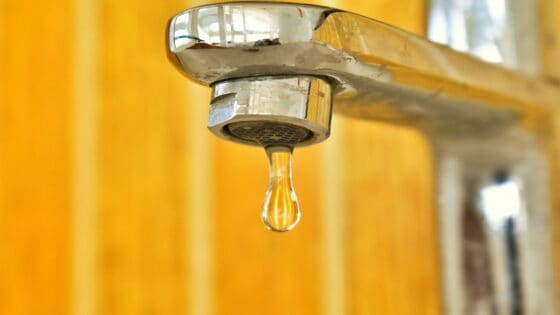
Do you keep your freshwater pump on all the time? Here’s why you should turn off the water–for safety’s sake.
Washing Dishes in a Quart of Water
Published on April 19, 2023 ; last updated on April 15, 2023 by Carolyn Shearlock
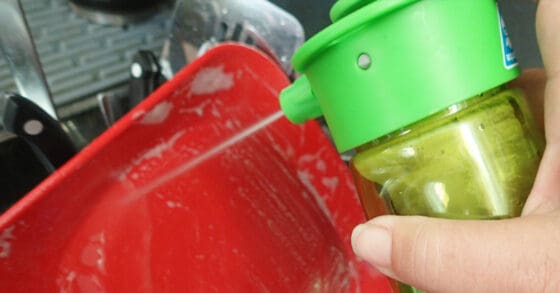
Washing dishes can take a lot of water on a boat. But my method helps me wash a day’s dishes in less than a quart of water.
🎧Showers on a Boat
Published on August 23, 2022 ; last updated on May 25, 2023 by Nica Waters

Can you take a shower on board without pressure water? Sure. Here’s how.
🎧Save Water with the Aquabot
Published on June 25, 2021 ; last updated on May 23, 2023 by Carolyn Shearlock

Saving water on a boat is crucial. I found a nifty pressure water solution that will help.
🎧Choose the Best Boat Water Filter
Published on February 5, 2021 ; last updated on May 28, 2023 by Carolyn Shearlock

Get the best water filter for your boat. Here’s what you need to know to make the right choice.
🎧Save Water With a Solar Shower
Published on December 18, 2020 ; last updated on May 23, 2023 by Carolyn Shearlock

Even if you have a shower on your boat, a solar shower might be better. Here’s why. And how to use one.
🎧How to Conserve Water on Your Boat
Published on August 28, 2020 ; last updated on May 23, 2023 by Carolyn Shearlock

Fresh water is precious on board. Learn about 4 nifty items that can help you waste less water on the boat.
Boat Water Filtering
Published on July 20, 2020 ; last updated on April 30, 2023 by Carolyn Shearlock

Bad-tasting water from your boat’s tank? Filter it! Three suggested ways to do it, with the pros and cons of each.
- Go to Next Page »
Each week you’ll get:
• Tips from Carolyn • New articles & podcasts • Popular articles you may have missed • Totally FREE – one email a week
SUBSCRIBE NOW
- Questions? Click to Email Me
- Visit Our Store


Saving Water On A Sailboat
Saving water on a sailboat is not something I ever really thought about until I started to live on one. I am ashamed to admit that I have never been the worlds biggest eco-warrior.
Sure, I dutifully did my recycling, I took my canvas bags to the supermarket and drove my small car only when I had to (ok, ok, the last one is simply because I couldn’t afford a bigger car and I hate driving). But the need to save water isn’t something I had ever really considered.
A Reality Check On Water Shortage

As an Amazon Associate, we earn from qualifying purchases. We also earn from other affiliate programs. This means we may receive a small commission on products purchased through our links at no extra cost to you.
When the UN climate change report was released in 2018 Adam and I treated it as we do with any news these days – caution. We read around the subject widely and from as many different credible sources as possible and were pretty terrified to realise that if anything, the newspapers were playing it down. I’m very, very happy for someone to prove me wrong here, as the thought of having 12 years left to save the world keeps me awake at night. What I find especially scary is how difficult it is to reduce my carbon footprint without completely putting life as I know it on hold.
The release of the report coincided with mine and Adam’s decision about what on Earth we were going to do now that we had given up work. All we knew is that we wanted to see the world, but here we were being told that we had run out of time for taking flights, especially long international flights. How could we justify seeing the world now? Sailing the world moved higher up the list, and we started to research whether sailing the world would actually be better for the environment or not.
We didn’t find any solid answers, but could deduce (from some dodgy calculations) that we certainly wouldn’t be increasing our carbon footprint by living this lifestyle. It has its pros and cons, but even living on a sailboat hasn’t bought us any closer to answering whether it is actually an eco-friendly way to live!
A Big Adjustment
One of the major differences between life on land and on a sailboat is how I treat water. Saving water on a sailboat is standard practice. Suddenly, water went from being something I was entitled to, to something extremely precious and important.
Adam’s work for a company called Hero Labs , that is producing leak detecting services, has caused us both to read up a lot on water shortage. A subject that I’ll be honest, I knew absolutely nothing about until recently. I mean, it rains every day in England so surely we’re fine right?! Of course I obeyed hosepipe bans, I hate breaking the rules, but I always thought it was a bit over the top. How naive I have been.
Some Figures (skip if this bores you!)

Water covers 70% of our planet, and we are incredibly lucky in Europe to have water available ‘on tap’. Running water is a luxury that I know not everyone has, but when I’m pouring myself a glass I don’t think about that. Freshwater is incredibly rare. In fact, only 3% of the water on our planet is freshwater and two-thirds of that is locked up on glaciers (that we really don’t want to melt away!)
I won’t go into all the figures, but let’s just say that an alarming amount of people in the world we all live in lack access to fresh water, and an alarming amount of people each year die from it. It is predicted that by 2025 (that’s 6 years away for those of you that are as bad at maths as I am), two-thirds of the world’s population will face water shortages if we carry on as we are.
Again, PLEASE prove me wrong here. I’m no scientist, I’m just reading scientific papers, so I could well be getting it all wrong.
We live in England, so there is always water (there has to be some pay off for living in a country that is always wet). Even if you can turn a blind eye to the rest of the world running out of water, research shows that in 25 years England will not have enough water to meet demands. If we continue to use water in the way that we do, we won’t have enough to keep us alive in 25 years.
Why Bother Saving Water On A Sailboat?

The average person uses 150 litres of water every day. I actually don’t have a clue how much water I used to use, it came out of a tap, I didn’t need to know.
I now know because I have to. Water on a boat is incredibly precious. We are lucky to have big water tanks on Hot Chocolate, she can carry 550 litres of water. This means that if we’re smart with water we can last a lot longer than most boats without having to find a water source.
Finding water here is a real pain, especially for new sailors like us. We hate Med mooring, where you have to reverse into your parking space. It is stressful and one false move could damage your boat or even worse, someone elses. We try to come alongside on town quays where ever possible (and it isn’t usually possible). Which means lots of sailing around trying to find somewhere, when you could be swimming in the sea. If you manage to find a space somewhere on a town quay then you have to hope they have a working water supply. If they do, they might well charge you to use it (though we have been lucky so far and haven’t had to pay).
When finding water is difficult you learn really quickly to make it last.
How Do We Save Water On A Sailboat?

Some things on a boat make saving water easier, and we couldn’t do the same back at home-the toilets are pumped with sea water and we wash ourselves as much as possible with sea water. But there are ways we have cut down on water usage that I would continue to do if I go back to living in a house.
Scrub A Dub Dub!
I used to love standing under the shower for ages. I would set it to the right temperature, enjoy it for a bit, leave it running while I washed and then probably stand under it a little more for good measure. Now, I use a saucepans worth of water to wash in, and I don’t really miss those long showers. If I want a warm shower I heat a little water and literally use the saucepans worth of water to wash with, if I’m happy with a cold shower I just use the tiniest amount and switch the shower off continuously. I keep a bucket in the shower to collect the stuff that has missed me, and use this to rinse my hair at the end.

Saving Water On A Sailboat When Washing Up
From my (limited) research, I have read that dishwashers on eco mode actually use less water than washing by hand. Good news for all of you out there that hate washing up as much as I do! I am proud, however, that my new washing up tactics mean I use just over half a litre to wash up after a meal, including saucepans and cooking dishes. Adam and I are careful to re-use cups (we often share a glass). We eat from the pan where possible and we don’t use more than we need to when we cook.
Getting Smelly
Ok, I’ll admit it, come the end of the month we both smell a little. Living this lifestyle has forced us to make some compromises and this is one of them. But I have found it takes a lot for clothes to start to smell (depending on what you do in them!?) Dresses I wear into town can be worn numerous times before they need a wash. The clothes we do boat work in don’t need to be washed-they will just get filthy again withing 5 minutes anyway!
Stopping Leaks

We had several of them, and on a boat you can’t afford to! I’m trying to make myself useful by learning plumbing and I’m enjoying learning about how impossible it is to create a water tight seal and lying upside down in a small, smelly space while dropping spanners on my head and having water dripping into my eyes.
How Much Water Do We Use On A Sailboat?
Adam and I drink about 4 litres of water between us every day and we average 20 litres a day for everything else. So between us we use about 24 litres a day. When we find water we use another half a tank to give the boat a quick scrub down (it has rained only once since we’ve been here so we haven’t been able to wash the boat that way!) and we also do an epic clothes wash.
That brings our daily average up to 30 litres a day between us.
Some people will probably think this sounds horrendous and others might well wonder why we use so much. Me though? I’m pretty proud of this huge lifestyle change, and it’s one of the boat related challenges that I have actually really enjoyed. So next time you pass someone smelly in the street, rather than turn your nose up, think what an amazing job they are doing saving water and saving the world!
(I’m sure that after reading this you are all desperate to come and visit us, so that you too can not wash for days on end and drink out of the same glass as me. There is a waiting list, so be patient.)
Similar Posts

Lewmar Delta Anchor Review On Our 38ft Sailboat

2021: The Bits We Want To Remember
The end of the summer.

7 Large Cockpit Sailboats: When Size Matters

Sailboat Wind Generators: The Ultimate Guide 2024

Sailing The Dodecanese
Hey guys, that was a good read!
It’s interesting to hear about life on a sailboat, and how you deal with water. My wife and I live in a van full-time, with our 90 liter tank we manage to make it about 7 days.
We’re working on a little project that makes water saving alot easier, maybe in the future we can work together to spread the word.
Cheers guys,
Mike and Emy
Sounds awesome! I think changing the way we use water has been one of the biggest challenges for us living aboard. Creating a way to save water easier would be really useful. You’ll have to keep us updated. Emily
- Pingback: Sailboat Crew Interview | Two Get Lost
- Pingback: Sailboat Storage Ideas For The Organised Sailor! - Two Get Lost
- Pingback: Sailboat Living: 10 Things To Know Before Moving On Board -
Leave a Reply Cancel reply
Your email address will not be published. Required fields are marked *

- Eco-Sistems Watermakers
- Work with Us
How to conserve the water stored in a boat’s tank

It is extremely important to stay well hydrated when we sail. It is essential to have an adequate supply of fresh drinking water on board for this. The main supply most commonly comes from an on-board tank, where we store the water we get from the desalination plant or that we have filled on land before sailing.
However, stored water can sometimes go off and then it is not only unpleasant to the sense of smell and the palate, but consuming it can also pose a health risk. This can happen when it is contaminated with algae, plankton, mould or bacteria or because we have not followed basic cleaning and conservation guidelines.
Conservation of water stored on a boat
We first recommend that stainless steel tanks be used to conserve the water on a boat for as long as possible, as they are the most hygienic and do not react with water. But in some cases this is not feasible, as boats that are 6 m or longer usually have a built-in tank, in many cases made with the same fibreglass as the hull.
In any case, and whatever the material the deposit is made from – PVC, fibreglass, high density polyethylene, stainless steel…-, we should clean it at least once a year with a specific product that guarantees the total elimination of possible micro-organisms. In addition, it must be opaque to prevent the proliferation of microscopic algae.
We can detect if the stored water has gone off with the naked eye, because the colour changes (it becomes cloudy, greenish or with particles) and begins to smell bad. What do we do in these cases?
What do we do if the water has already been contaminated?
If the contamination is mild (taste or smell of water altered in a way that is hardly perceptible), and we are at sea, with little chance of obtaining another supply, there is the option of purifying the water with disinfectant solutions that kill bacteria.
In any case, priority will be given for the tank to be thoroughly cleaned to eliminate all micro-organisms that may have remained as soon as we can.
It should be borne in mind that in new fibre deposits it can take years to eliminate the smell and taste of plastic, although this will not be caused by contamination of the water but by the material (resins) with which it is made. The water in these tanks is used for cleaning or hygiene, but not for consumption.
This can also happen on very new boats, although in these cases the smell usually disappears quickly as we use the tank and rotate the water.
In short, the main thing is to prevent water contamination with a tank of suitable material and regular cleaning with suitable products. It is also important that the stored water is regularly changed. We must think that it is very risky for our health, and even for our survival, to be left without a supply of drinking water on board, especially in long-distance crossings and on the high seas.
And in the event that the water has become contaminated, we must not only discard the contaminated water, but thoroughly clean the tank to remove any trace of micro-organisms that may have damaged it, and check that there are no leaks where they can re-enter.
Noticias relacionadas

Leave a Reply Cancel reply
Your email address will not be published. Required fields are marked *
Save my name, email, and website in this browser for the next time I comment.
Post comment

15 Things That Change When You Live on a Catamaran

As an Amazon Associate, we earn from qualifying purchases. We also earn from other affiliate websites. See our full disclaimer .
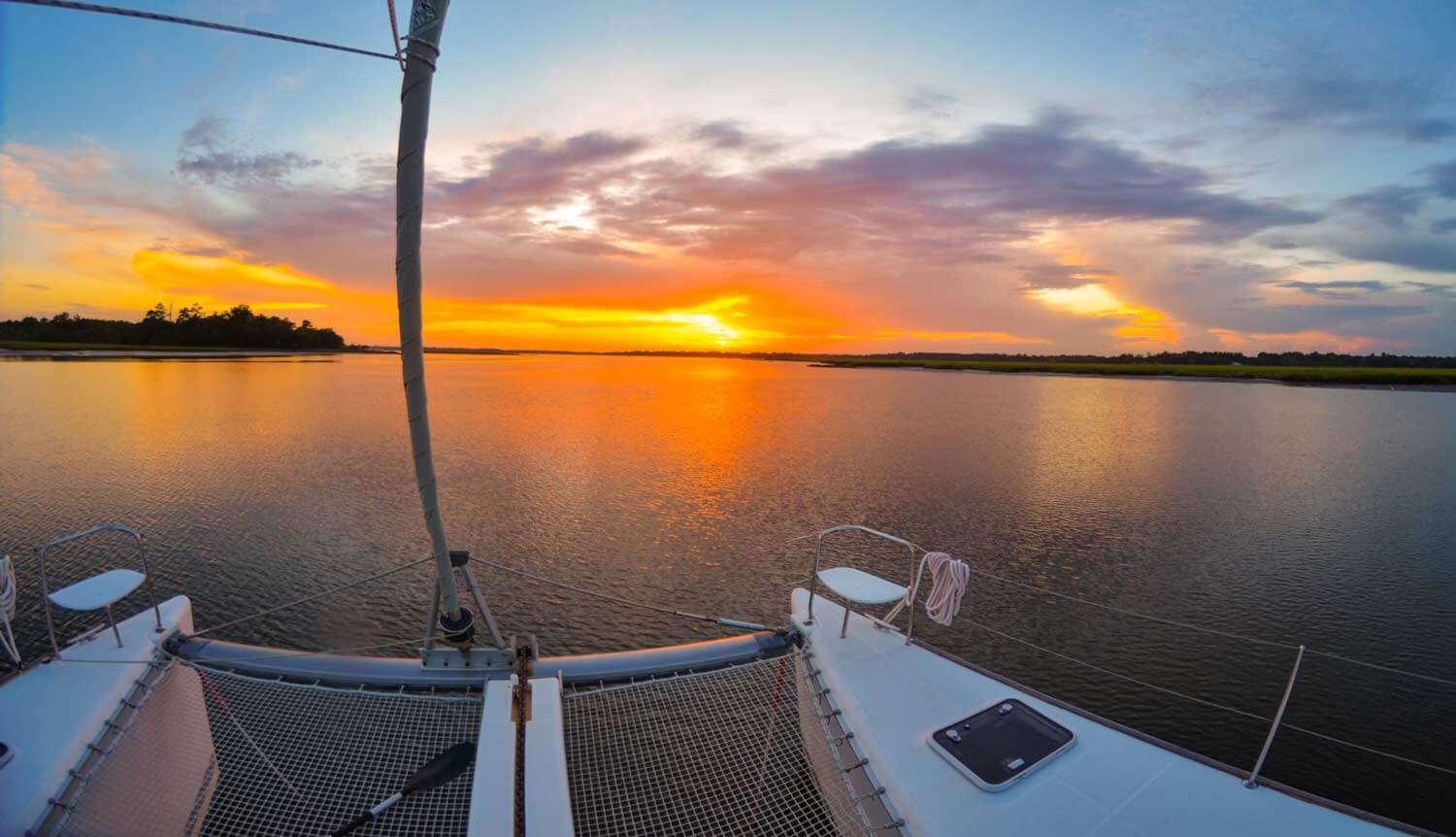
So, the dream of living on a catamaran is starting to look like a reality. You hit the internet to read as much as you can about life aboard.
I get it. For one, I was going to be ready for this big adventure and all the challenges that come with it. There was no way I was going to be caught unprepared. (Yeah… right.)
Preparing for the Live Aboard Lifestyle
When we moved on our sailboat, I quickly learned you have to experience this lifestyle to understand the challenges.
It’s been almost two years of living full-time on our catamaran. So, I decided to look at the day-to-day things that are different from our habits in land-based life.
Many things we didn’t think twice about have a massive impact on our lives on the boat. Things like water conservation, provisioning, cooking, cleaning, and adjusting to a small space all take time and energy.
Here are some of the big changes to everyday habits that we discovered living on a sailing catamaran.
1. Laundry on a Boat
A few years back, I was one of those people who threw most things in the hamper after one wear. It was just easy.
Unless you have the convenience of a washing machine onboard, it’s not so simple to run a load of laundry.
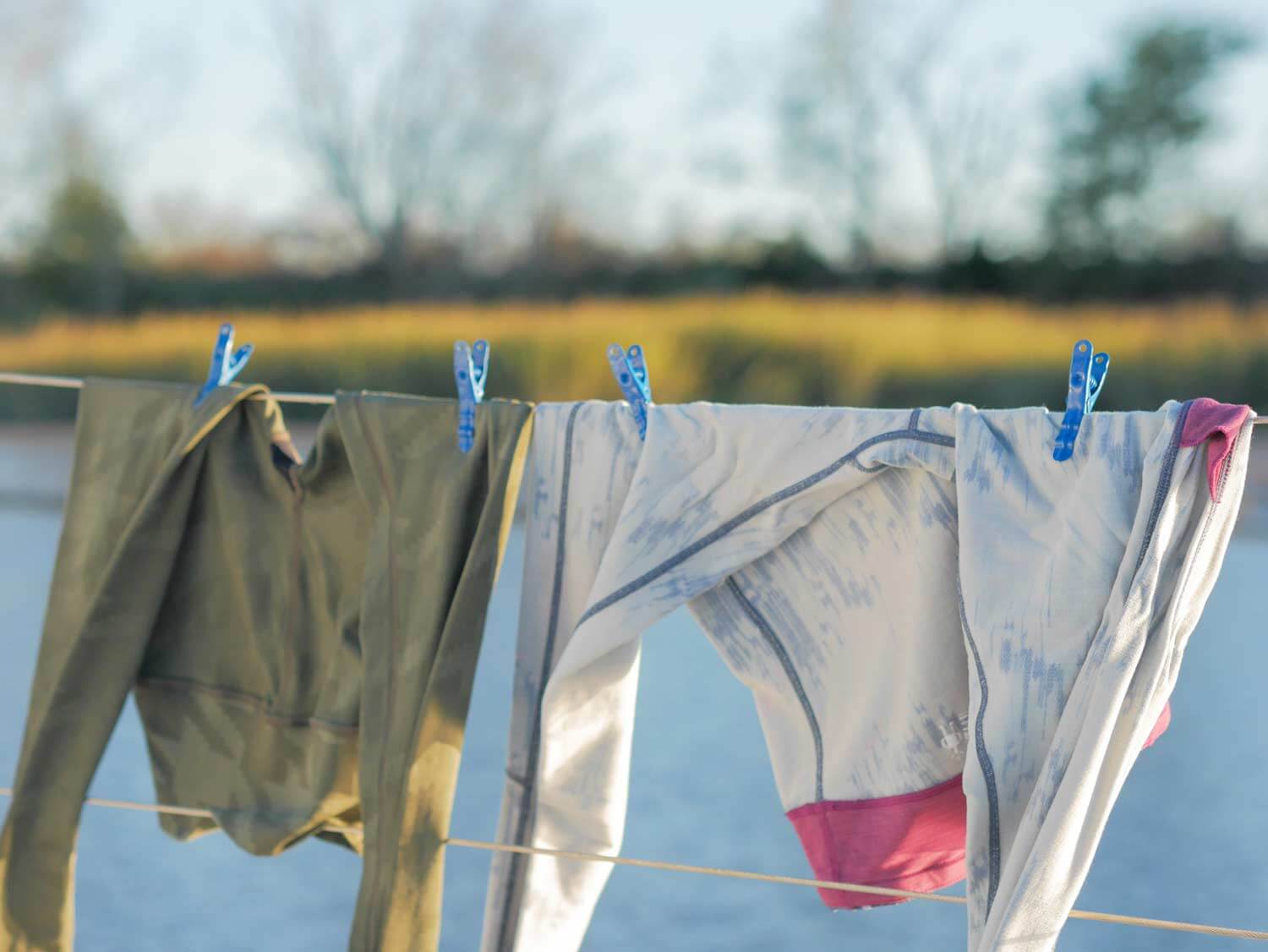
It costs money, and it can take a lot of time to haul your clothes around. Alternatively, handwashing is time-consuming, labor-intensive, and hard on your water usage.
To minimize laundry, you have to think about what you wear and how you wear it.
Summer Washing
In the summer, you can get sweaty just sitting on the boat.
I learned to wear quick-dry items like leggings, swimsuits, and UPF tops I could easily handwash with a small amount of water. If you can stretch the life of your outer clothing, you can clean undergarments and swimsuits in a small collapsible tub.
Winter Washing
Re-wearing clothes in the cooler months is much more comfortable than in the summer months. If it’s not dirty, I don’t wash it. If clothes smell or I’ve been doing boat work, I move them to the dirty pile. Just paying attention to these details reduces laundry. And the less you wash your clothes, the longer they’ll last.
2. Cooking Aboard
There are a few aspects of living on a boat that heavily influence your cooking.
Space. Access to ingredients. Water conservation. Ventilation.

If you only have a small area to prep, you learn quickly to do it in stages. Prepping vegetables, putting ingredients away as you work, and washing dishes as you go is also essential.
Access to Ingredients
Before boat life, recipes were iron-clad when I was cooking. But without the convenience of running to the store, they’ve become more of a guideline. You learn how to adjust recipes based on what you have on hand. You get comfortable substituting vegetables, different spices, and acidity for flavor.
Water Conservation
When off the dock, fresh water is at a premium. How much water you carry (or make) will dictate how you cook.
We do a few things to conserve water in the kitchen . Wash dishes in saltwater first. Use an Aquabot for pressurized cleaning. Cook pasta with a small amount of water. I’ve also embraced one-pot meals to save water on cleanup.
Ventilation
Our catamaran is “galley up,” so it’s easy to open the cockpit window above the stove to release heat and steam. But that’s not always enough.
We use the thermal cooker in the summer to avoid heating up the boat. You can make beans, rice, broth – even casseroles or banana bread without expelling heat in the boat.
READ NEXT: For more tips and ideas for cooking on a boat, check out our lists of easy and versatile meals on a boat and sailboat galley essentials .
3. water usage.
When off the dock, water is a high commodity on a boat.
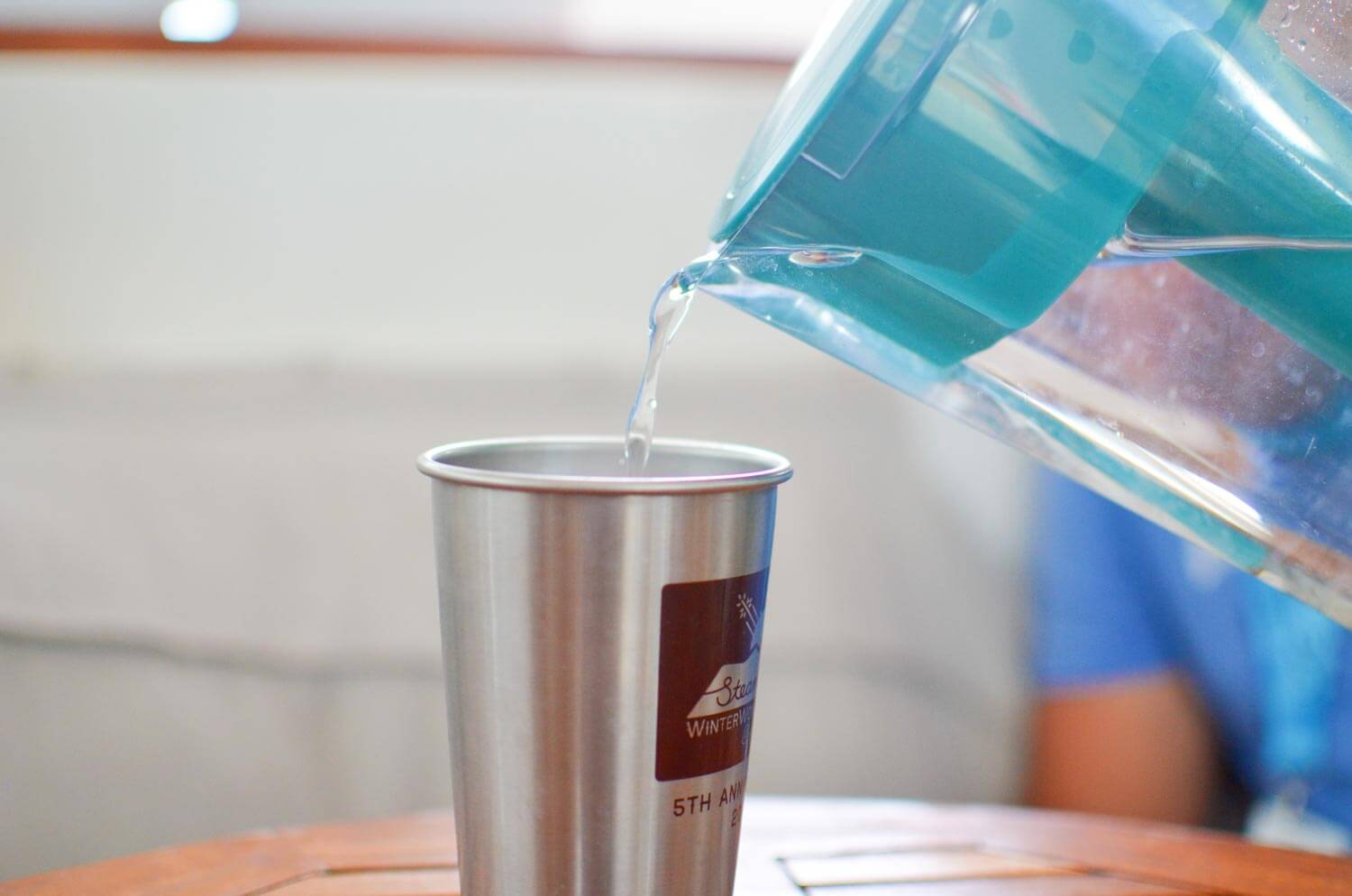
Even with two 80-gallon tanks, water can go fast if you aren’t paying attention.
You can minimize water through small changes to your habits, including:
- cooking pasta with a few cups of water
- swapping soap for hand sanitizer
- rinsing dishes on the sugar scoop
- we even recycle the cat’s stale water in the herb garden
Me, I love hot showers. Just steaming for like 30 minutes, that’s my kind of heaven. So learning to shower with less than a couple of gallons of water was a big hurdle.
Conserving water can be a challenge, but you’ll be surprised what you can save when you use it thoughtfully.
We had days in the winter when we used less than 5 gallons. It just takes a little practice, as with most things on a boat.
READ NEXT: For more tips on conserving water, check out our guide to saving water on a boat .
4. sustainable practices.
When you live in a small space, you realize how many disposable items you are harboring.
When we first moved on the boat, the paper towel storage alone took up half a cabin.
Not only are you losing storage, but those disposable items are just that, future trash for you to deal with.
Ditching paper towels, plastic bags, and other single-use items saves space and money. As a bonus, you get to feel optimistic about creating less trash.
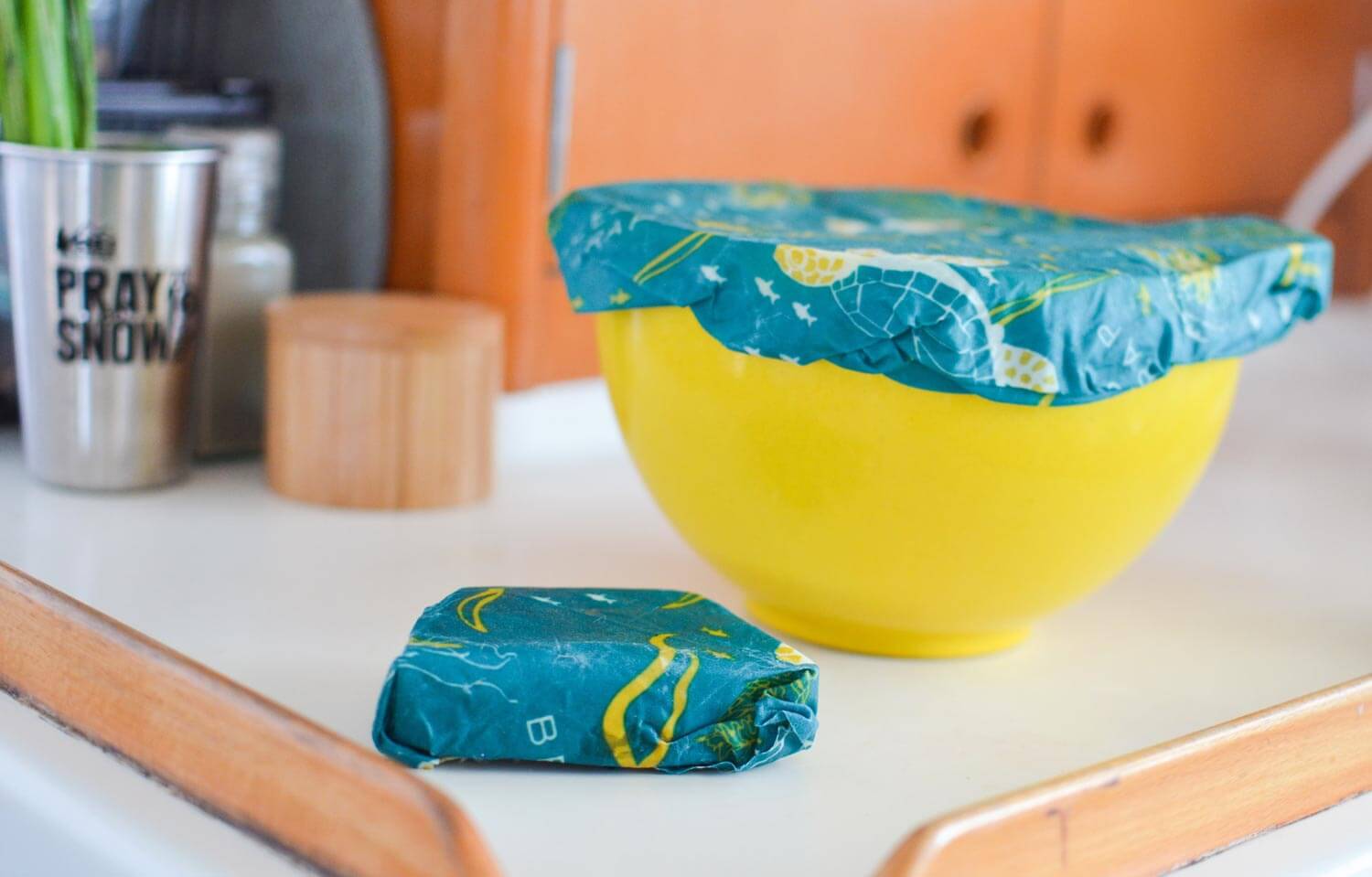
Here are a few sustainable options we switched to:
- Reusable “Unpaper” towels
- Cotton napkins
- E-Cloths, microfiber towels
- Beeswax wraps
- Foldable reusable bags
- Glass straws
- A quality set of plastic containers in various sizes
READ NEXT: Zero Waste Swaps for Small Spaces for more eco-friendly options.
5. fridge space.
The residential fridge. Something I took for granted as a landlubber. A fridge door full of condiments, anyone?
Managing food in a tiny fridge requires strategy and a little education.
Learning what you NEED to keep in the fridge is helpful. Sure, it’s nice to have cold ketchup, but necessary? No.
Sriracha, soy sauce, hot sauce, mustard – out you go.
We also switched to almond milk and tofu brands that only need refrigeration after opening. This way, we can still stock up without loss of fridge space.
The Right Storage
Once the condiment bottles are out, having the right storage makes all the difference.
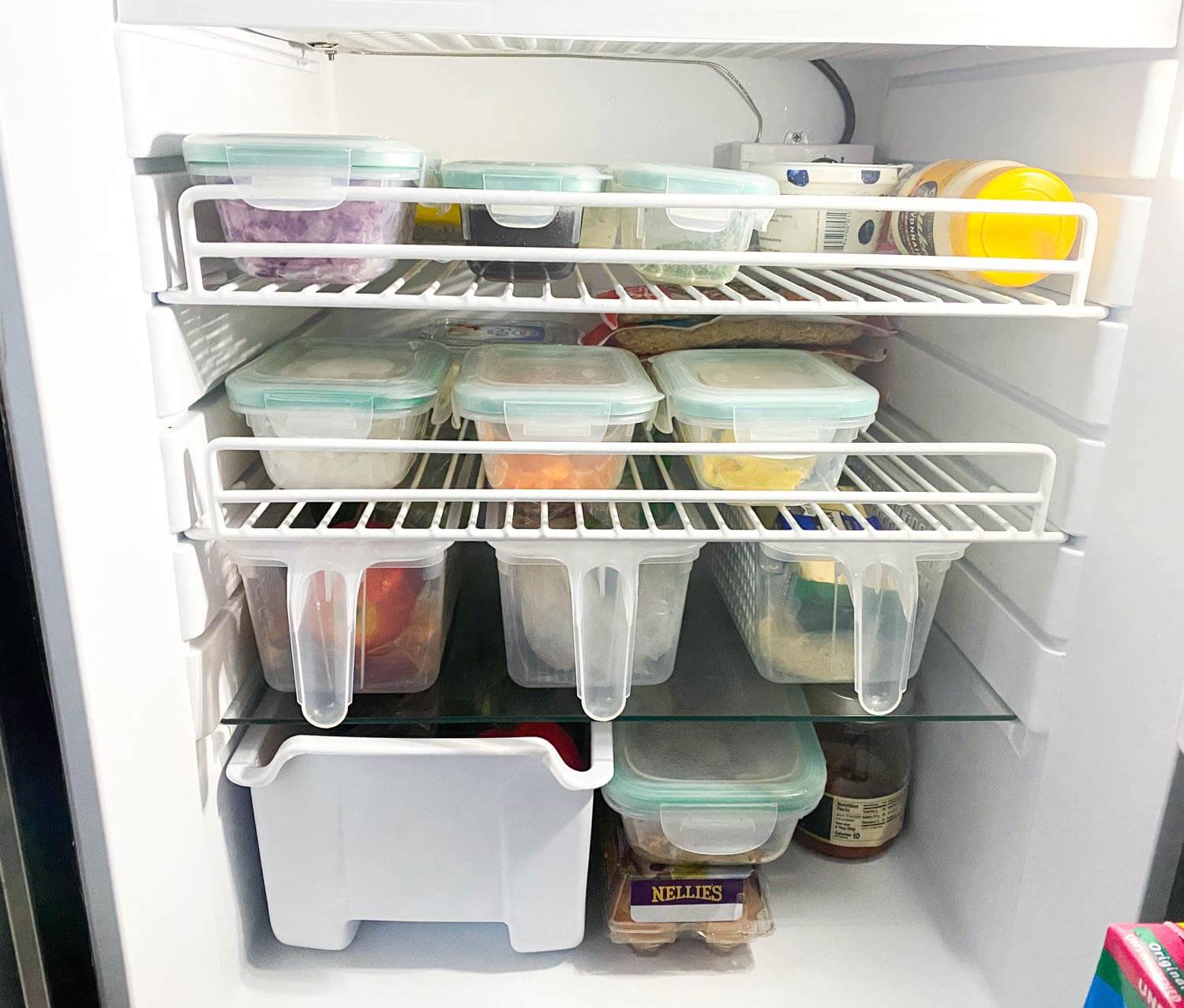
Containers need to be the right size to fit inside shelves on the door and inside the fridge. You want various sizes, so you don’t need to use a huge container if you have a smidgen of something.
Prepping Vegetables
You can save more space by chopping fresh veggies when you get back from the store. Broccoli, cauliflower, cabbage, and hardy greens can all be prepped ahead. I store any scraps in the freezer for homemade vegetable broth .
6. Provisioning
Keeping track of your grocery store when you live on a boat is crucial. You probably won’t be able to run back to the store because you forgot the butter.
Stocking Up
One of the nice benefits of living on a catamaran is the space.
We tend to stock up on these when we can.
- Beans (dried and canned)
- Grains, pasta, oats
- Canned and dehydrated vegetables
- Baking goods and almond milk
- Oils, vinegars, spices, nuts, seeds
- Wine and beer

Most of the time, we are hand-carrying our groceries. So when we have the opportunity to have a car, we load up on heavy items.
When we plan to be at a marina, we have a list ready for Amazon and Walmart.com to have shipped.
READ NEXT: Get a detailed overview of stocking your boat in our Practical Guide to Sailboat Provisioning .
Supplementing fresh food.
We keep a variety of veggies on hand: dehydrated, canned, a little frozen, and fresh. When cooking, I use a little bit of everything to stretch fresh foods.
We have a nice space in the cockpit where we keep potted fresh herbs. They can really step up a dish!

As a bonus, they add to the coziness of the cockpit living space.
7. Downsizing Your Closet
Before I started to plan for boat life, I had a giant wardrobe. I love clothes. And I had been collecting them most of my life.
Believe me, when I tell you cutting my wardrobe down to less than 100 items was a long, emotional process.
A Minimalist Wardrobe
The less you have, the less you need to care for.
Aim for a wardrobe of pieces you love that work for living on the water. It’ll be easy to get dressed, and you’ll be happy in your clothes. And if you are managing your laundry (see #1), you won’t need many clothes.
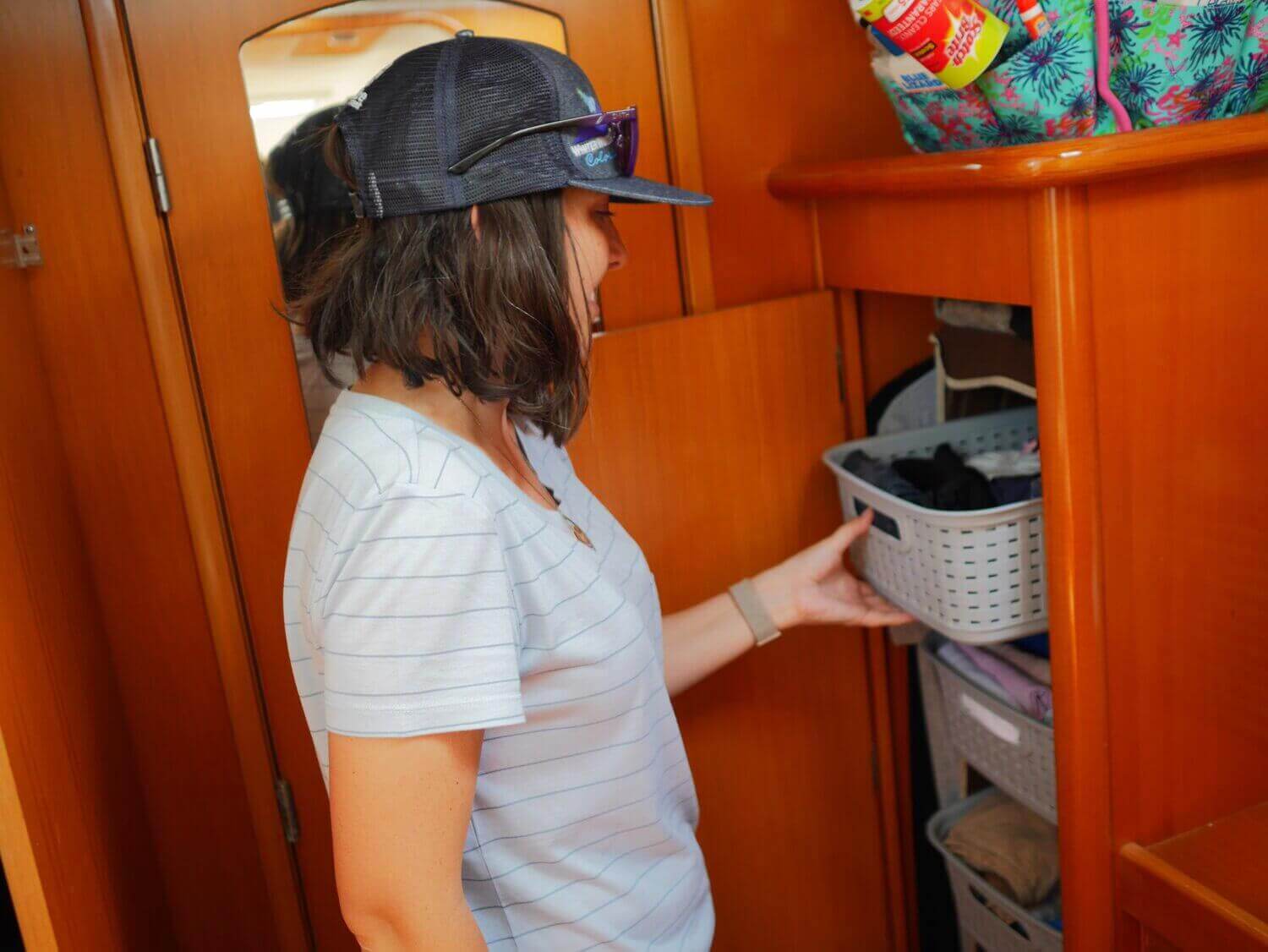
The owners’ version of our catamaran has great storage. I can easily see all the clothing in my wardrobe. I only need to store a few off-season items under our berth.
READ NEXT: For what type of clothing to have on your sailboat, see What to Wear Sailing . Or see How to Downsize Your Wardrobe for more on getting rid of clothing.
8. temperature control.
Spoiler: you don’t have much control of temperature at anchor. And what power you have isn’t as easy as turning the dial on the thermostat.
On a catamaran, you can pretty much open up the doors and hatches on the bridgedeck and get a cross-breeze on a hot day.
I was surprised that Georgia in August (as miserable as it was during the day) was never unbearable at night. We used Breeze Boosters over our cabin, and it worked wonders moving the air around at anchor.
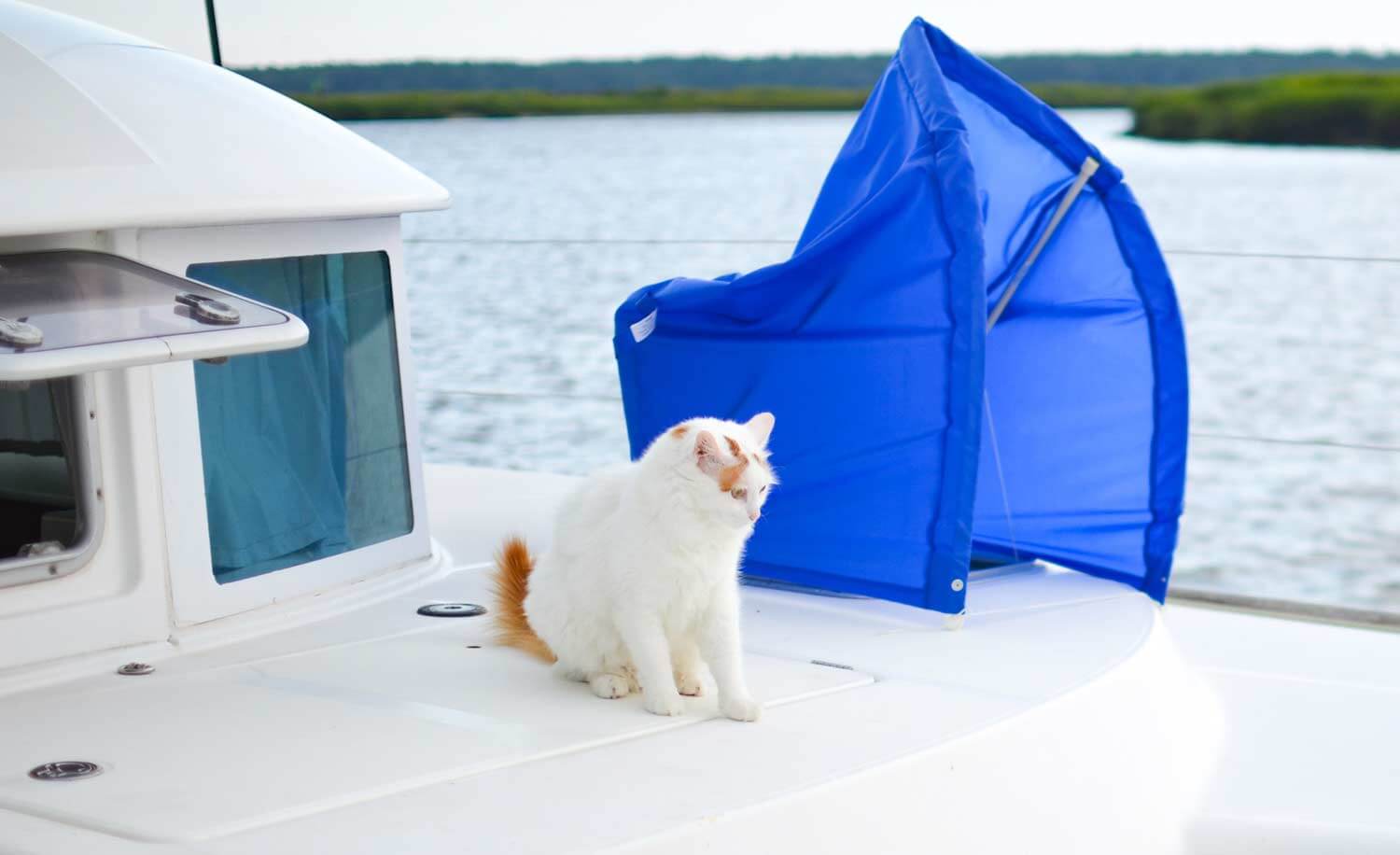

Cold Nights
When it’s cold on a catamaran, you know it. There’s no insulation, and the boat cools down quickly. Below 40 at night is chilly.
Fortunately, if the sun is shining, it can heat the bridgedeck nicely in the morning.
Down blankets, the right clothing, and foul-weather gear will keep you from becoming an icicle.
9. Storing Things
On a boat, you can’t just throw your things in a locker and forget them. Nope.
You’ll need to plan when storing clothing, personal items, and food.
Mold, leaks, and bugs are all things to be concerned with.
Essential oils, bay leaves, vinegar, and plastic bags will be vital to protecting your items.
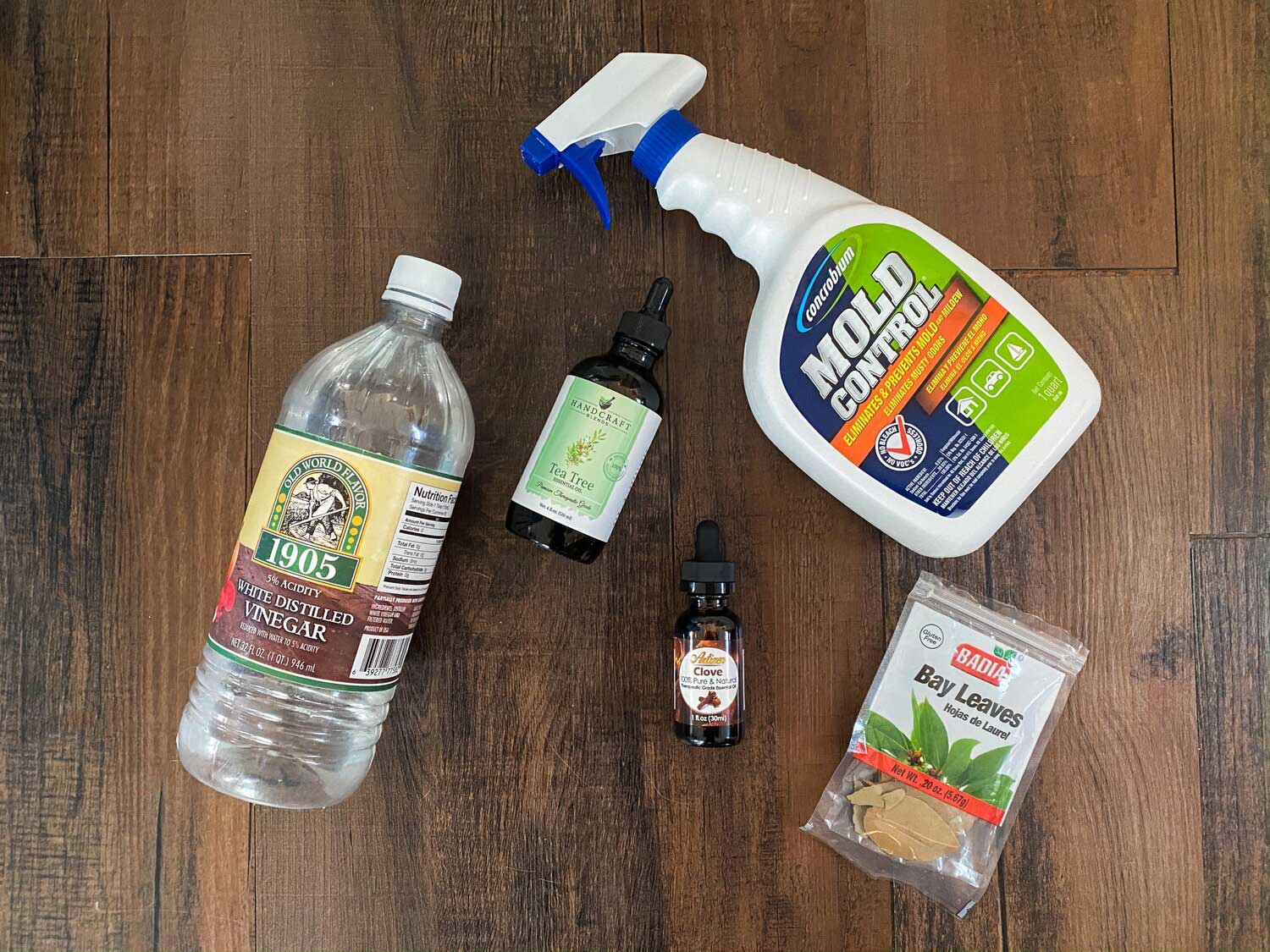
You’ll also need to think about where you store things and how accessible they are. It becomes a bit of a puzzle to make sure you keep items you often use in an easy-to-access location.
READ NEXT: For storage tips, check out Helpful Boat Storage Ideas for Liveaboards .
10. slowing down.
A big part of living happily on a boat is moving at your own pace.
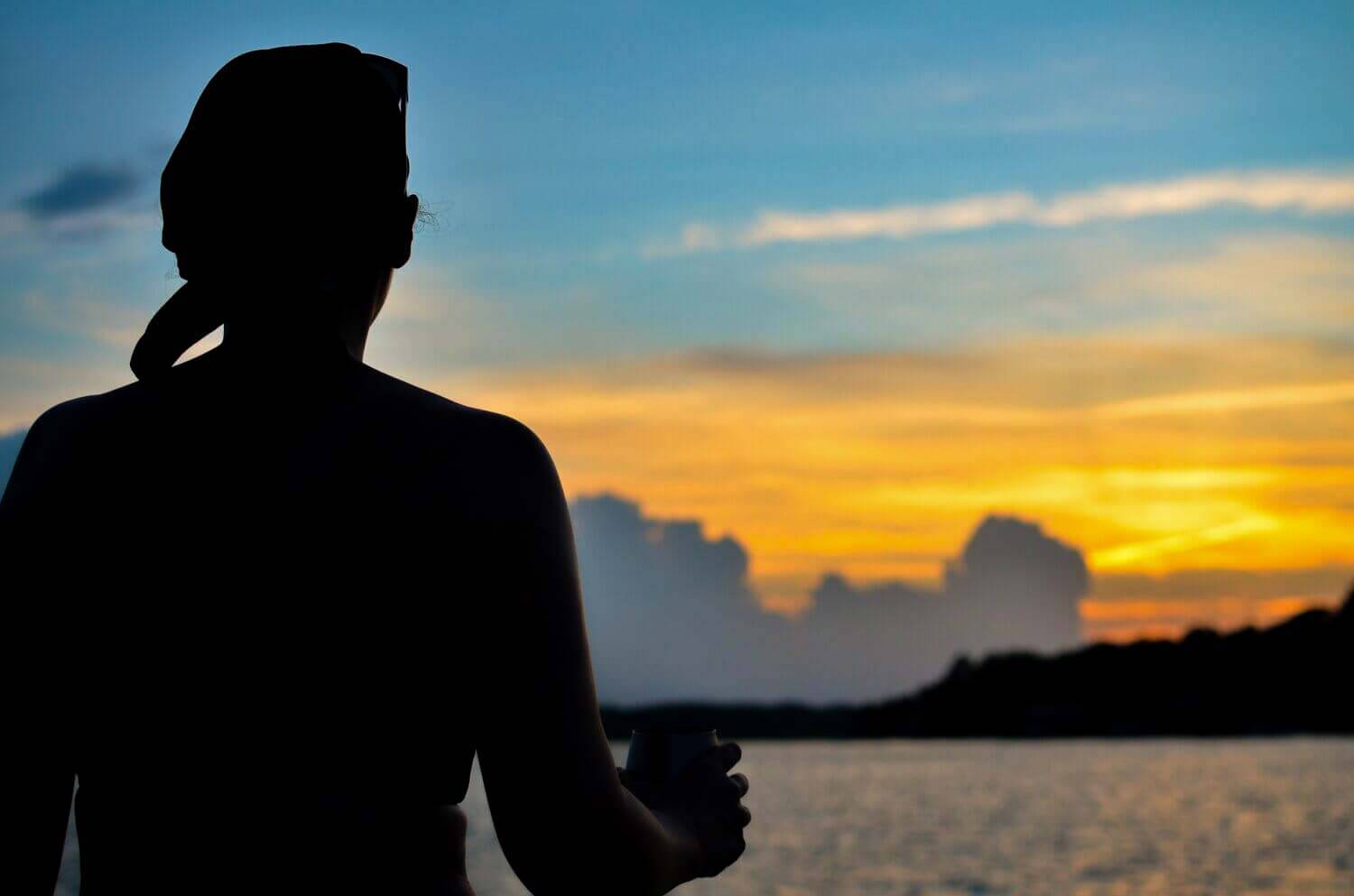
It is being in the mindset of appreciating what you are doing now and not continually looking to the next move.
When we first moved aboard, there was self-imposed pressure we should be moving faster – doing more.
When we finally slowed down and started to embrace the here and now, we enjoyed the boat so much more.
11. Your “House” Breaks (A Lot)
When things go wrong on a boat, they tend to go really wrong.

A pro and con of catamarans is there are a lot of duplicates. It’s great to have a backup, but it also means double the maintenance. Two hulls, two engines, two heads… you get the picture.
On the plus side, when our starboard engine broke, we were trying to maneuver through a bridge. We had to turn 260 degrees to turn toward the bridge, but one engine is better than none!
The hardest thing in these moments is keeping your head when everything is against you.
We try to slow down and take a breath if the situation allows. Once any immediate concern is taken care of, we take a breath before diving into solving the greater issue.
12. You Learn to Live Intentionally
Our decision to move on a sailboat was for the rewards of the lifestyle.
One of the most significant rewards is being intentional with space, time, and money.
Living on a boat offers freedom from your stuff. It allows you to live more simply.
On the boat, we get to spend more time with each other. We only have what we need because space is limited.
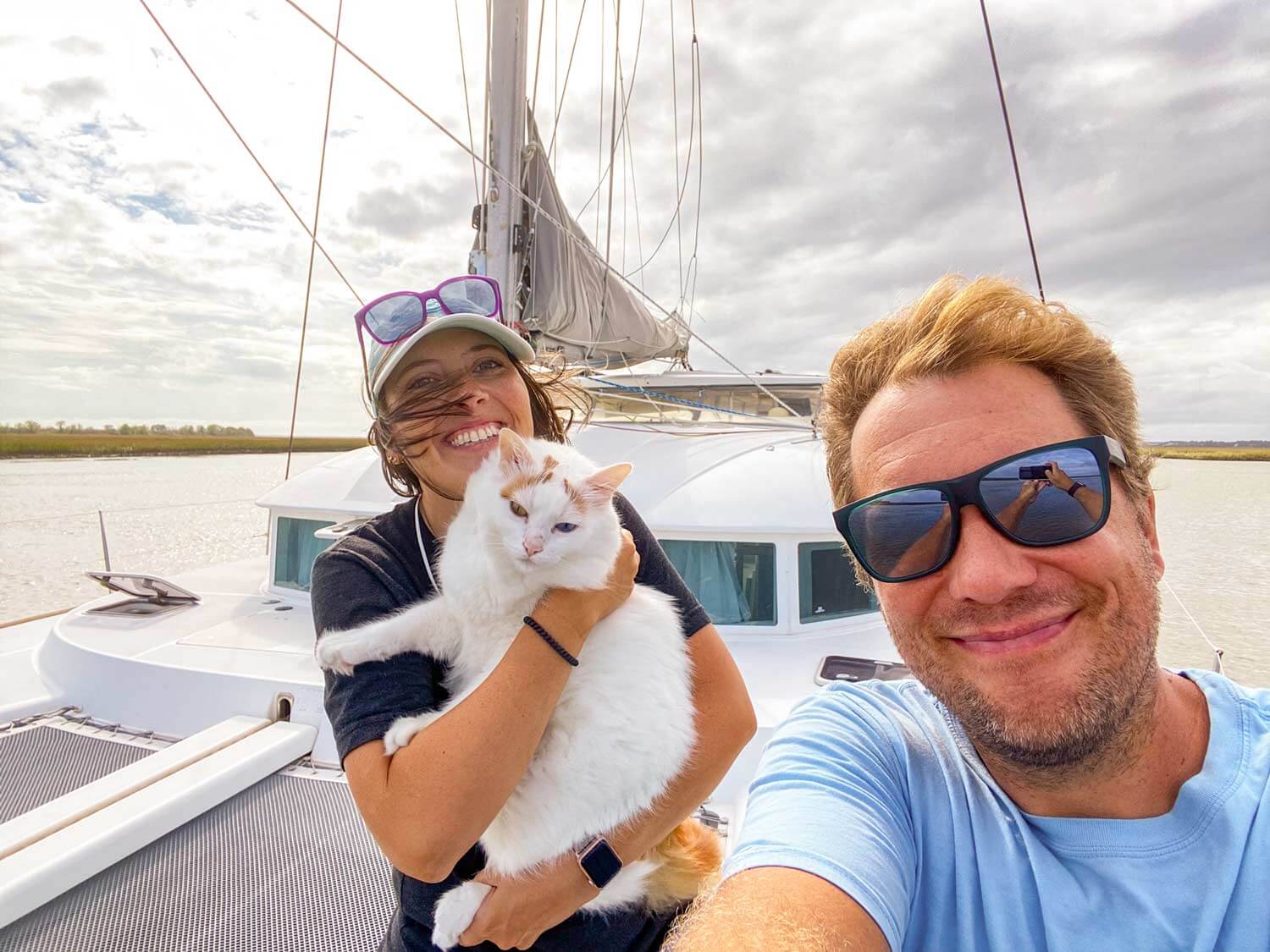
Don’t get me wrong. A boat requires time and money. But we are intentional about how we spend those when maintaining our floating home.
READ NEXT: Our article on the cost of living on a sailboat breaks down expenses by category.
13. appreciation for nature.
Living in the Colorado Rockies for over a decade, it was easy to love the outdoors. But living on the water creates a deeper connection.

You wake up to the water lapping on the boat. The sun dances off the waves, throwing reflections across the cabin.
Walking outside at anchor and seeing the birds hunting for breakfast is a morning routine. And a sea turtle drifting by for a visit is not uncommon. Even relying on the sun for power and the wind to travel is part of the lifestyle.
All these experiences bring you closer to nature and beg you to slow down, breathe, and take it in.
14. Personal Space
It doesn’t matter how much you love your significant other. If you live on a boat together, you will be looking for some “me time.”
When you sleep, eat, shop, travel, and take care of a boat as a team, that’s a lot of togetherness.
How We Find Space
It’s nice to create spaces for personal time in a small space like a boat.
A big plus of a catamaran is you can create a few separate spaces.
We have four main spaces where we spend time: the cockpit, the trampoline, the salon, and the owners’ berth. Ensuring these areas are comfortable and cozy helps us find our own spaces in a tiny floating home.
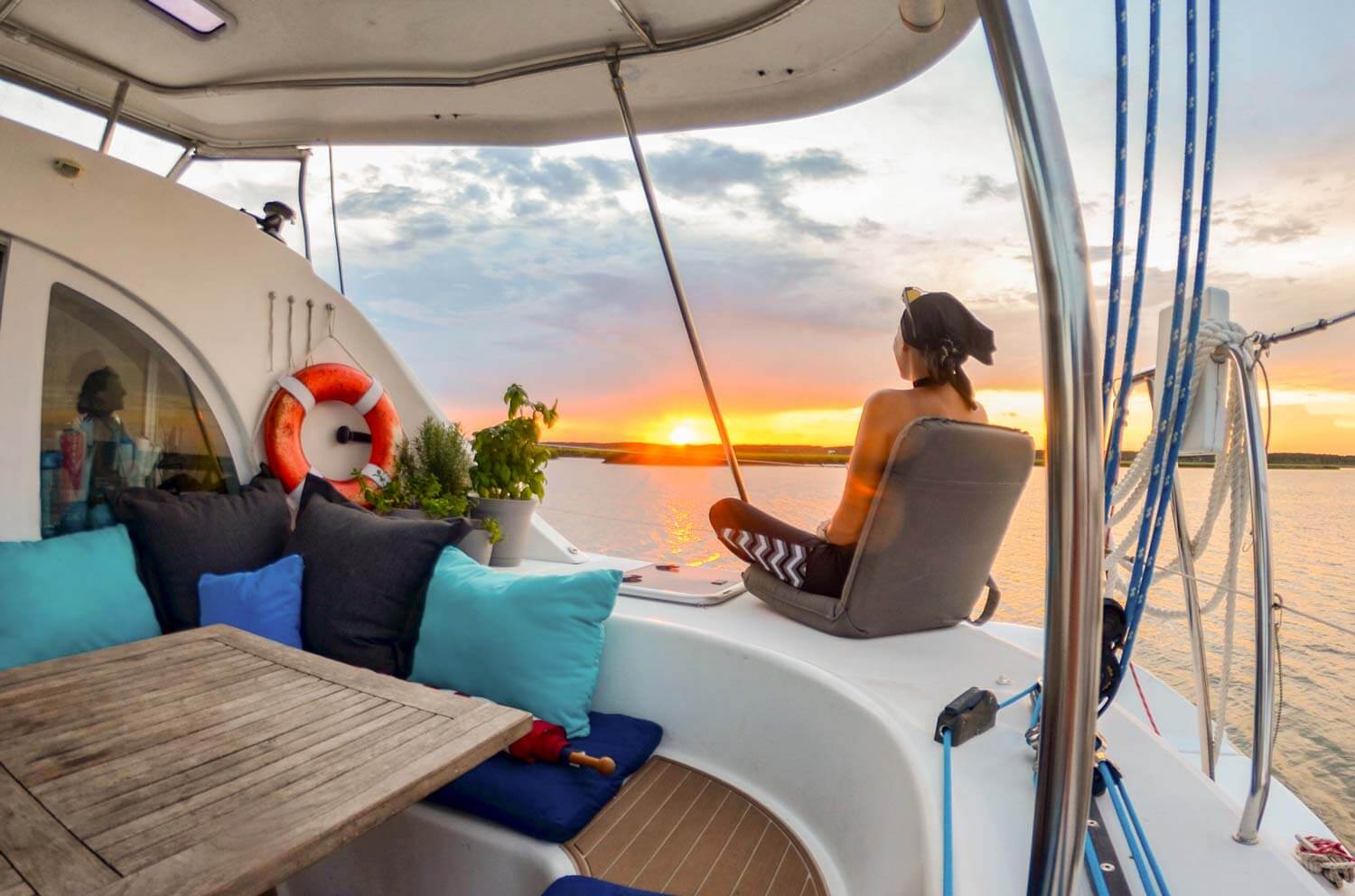
Sometimes, it’s not about physical space but mental space.
I like to have personal time while I’m cooking. It’s something I enjoy, and I can put on my headphones with a show or playlist and tune in while I cook.
Even a quick solo kayak adventure is rejuvenating if we are in a nice anchorage.
15. Minimalism
Embracing minimalism was a change we made going into boat life. But it’s not the typical view of minimalism that has become trendy these days.
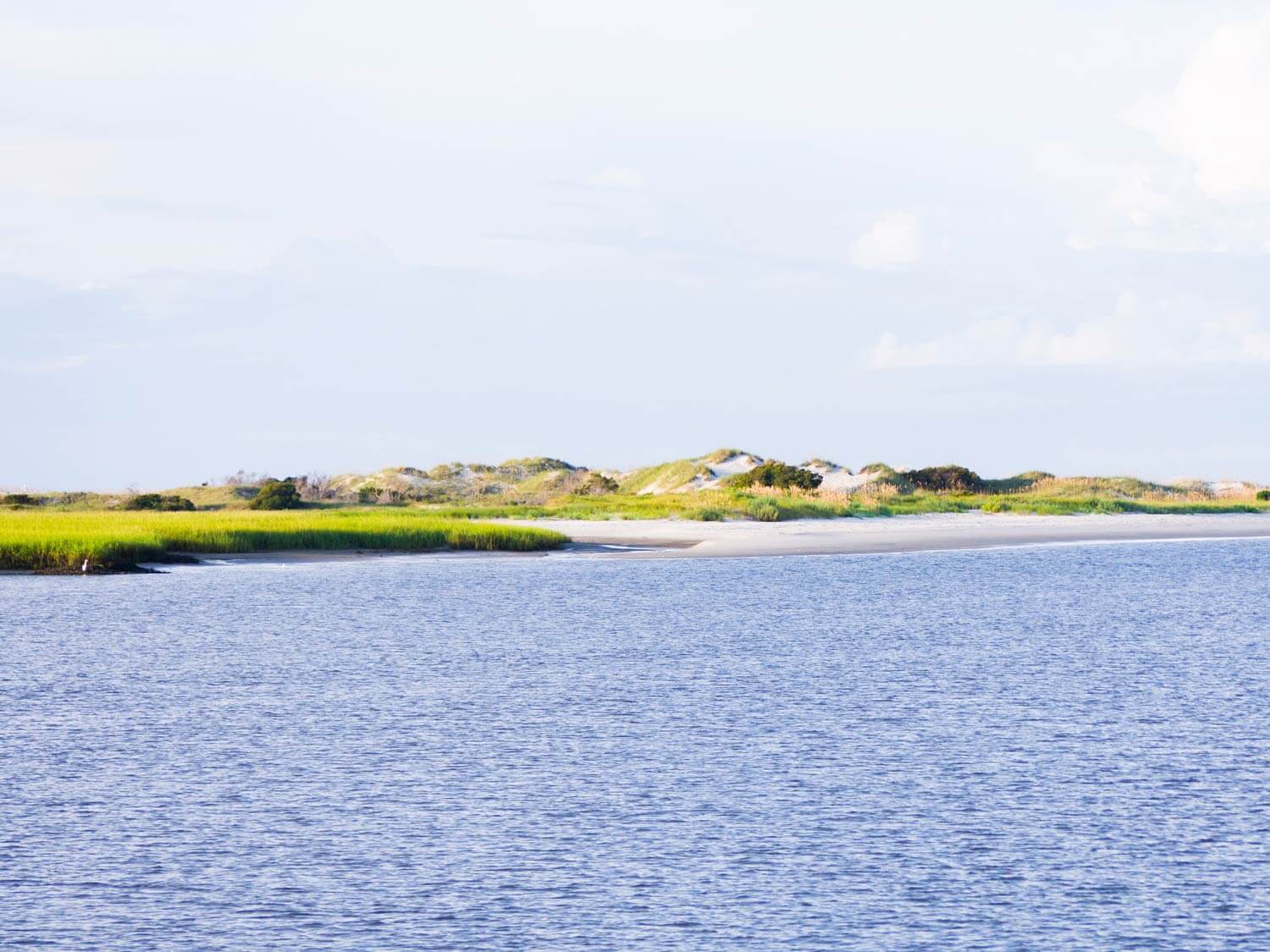
Minimalist Lifestyle on a Boat
The typical “rules” of minimalism aren’t as clear-cut on a boat.
We have a lot of extras when it comes to spare parts and tools. Some parts can be hard to come by, and with two engines, you need double the spares. Not to mention, things never break when there’s a West Marine around the corner.
We also have a lot of non-perishable food and duplicate personal care items. It’s easier to stock up when we have the opportunity. This process keeps our routine shopping to mostly fresh items.
How We Live Minimally
On the flip slide, we don’t have a lot of extra stuff – extra clothes, additional personal items, disposable items.
We don’t have more typical things you would find in a house, such as a dishwasher, microwave, or washer/dryer. We are minimalists with water and power when we’re off the dock.
We aren’t the typical minimalists, but we use space intentionally. And we continue to evaluate our needs based on this lifestyle.
READ NEXT: Check out our full guide on ways to downsize and live minimally .
Can you live on a catamaran.
After a year as liveaboards, many of your daily habits will change. We are still adjusting and finding the best ways to adapt to life on a sailing catamaran.
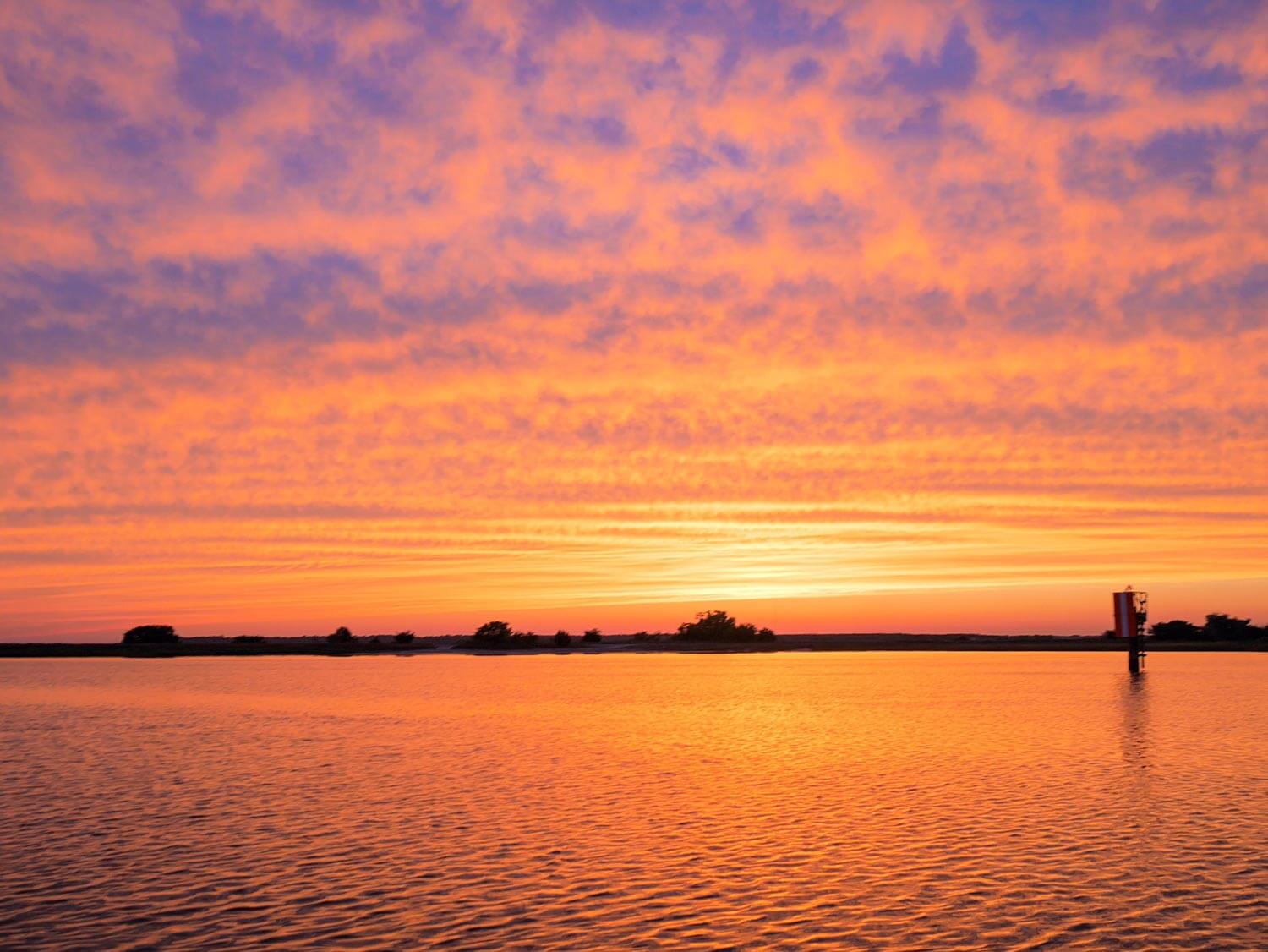
You lose many conveniences of the modern world, but it’s entirely possible to live without them. It comes down to deciding which comforts are important to you.
How you use space, time and money will shift. You’ll learn to be sustainable, thoughtful, and more self-sufficient.
Living on a boat is a unique experience. No matter how long you do it, it has the power to change the way you live in the future for the better.
Want to learn more about cruising on a boat?
For more on the reality of boat life, the cost of living aboard, and tips for life on the water, view our complete guide.
Like this post? Save it on Pinterest for later.

Or view our web story.
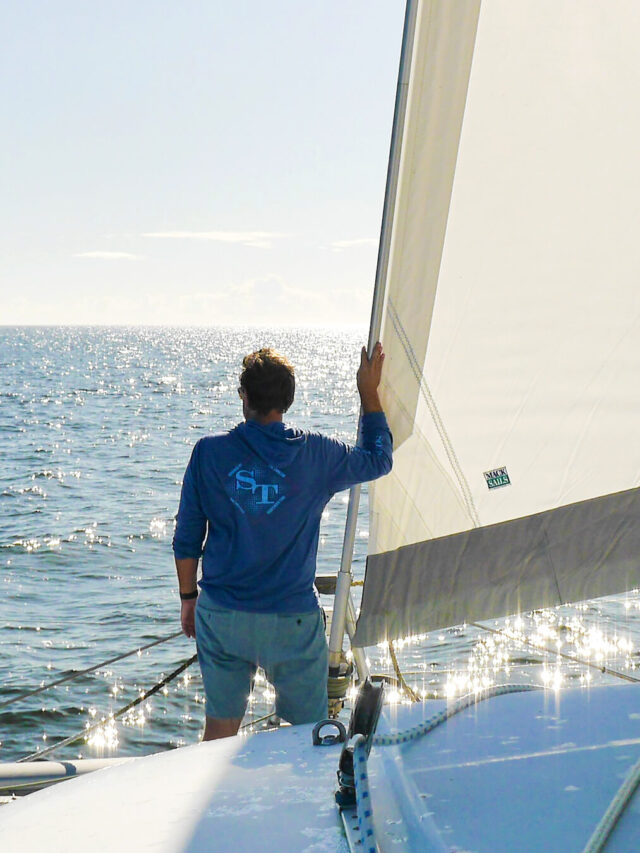
Morgan, the founder of The Home That Roams, has been living nomadically for over five years. She began her journey traveling across the U.S. in a motorhome and cruising on a liveaboard sailing catamaran. Currently, she lives full-time in a travel trailer, sharing resources on RV living and boat life to help others downsize their lives and thrive in an alternative lifestyle.
11 Comments
That’s really great post. I appreciate, Thanks for sharing.
Glad you liked the post!
So glad I found this site, looking forward to exploring the rest of it! But here’s my first question, as someone who’s still in the "dreaming" stage: This article tells me that the most basic aspects of day-to-day living are a constant source of concern and effort. Yet there are yachts nicer than most five-star hotels. So what’s the price point (or size point, or whatever point) where your daily concerns don’t revolve around things like do we have enough water to cook dinner and how bad do my clothes really smell? Does frequent marina access solve these issues? Is there a way to live on a boat where it’s easy, or does that only happen in Jimmy Buffett’s songs?
Hi Frank and Lola, thanks for stopping by and asking some great questions! Generally, the number of conveniences onboard a boat directly correlates with the time and dollars needed to have those conveniences. So when you think of the hotel like yachts, also think about the captain and crew and resources it takes to keep them running. It’s the same with smaller yachts. Even when you have the systems, you still have to manage your power or resources to run the watermaker or watch the weather and route plan to get to the marina. This is one reason a lot of boaters opt for fewer systems.
I had to laugh in agreement at your Jimmy Buffett reference – I think Jimmy must be doing a lot of day boating, haha. I personally feel that if you had around a 45-foot cat and a big budget to outfit it, you could have a lot of modern conveniences (watermaker, large solar setup, washing machine, etc.) However, living on a boat is never going to be easy IMHO. You have to put in the effort to live on the water!
I hope this was helpful and didn’t discourage you. My goal is to provide a realistic view of the lifestyle!
Agree. Especially #11. We live on a monohull so only have one head to contend with. Also whatever the purchase price, expect to spend 10% a year maintaining said boat. Things break at the most inconvenient times and improvisation is absolutely key.
Hi Breanna, #11 is definitely a big one! And of course, the head is always interesting. The first time we had a real maintenance issue with the head I posted on Instagram and announced my husband and I’s relationship had officially made it through our first serious head malfunction, haha. As you mentioned, Improvisation is also so crucial! We tend to get pretty creative with solutions 🙂
What entertainment do you use on a long haul, such as books, cards, chess. How do you plan the nights such as sleeping or on watch. Do you use automatic steering.
Hi Stephen, we like Audible for downloading books, I also like to download podcasts. We also use an external drive for movies. We do have and use an autopilot onboard. We don’t have experience with long passages, but The Boat Galley has what I think is a great article on the subject, you can find it here! https://theboatgalley.com/passagemaking-and-sleep/
Thanks for such an informative post. We’re in the process of buying a 42ft catamaran and plan on sailing up the east coast of Australia next year…scary and exciting!
I see that in some of you photos you have a gorgeous looking cat 😊 I’m planning on taking our 6 year old cat with us on the trip. Do you have any tips and advice on how to make life more comfortable and safe for a cat onboard and how to get them acclimatised to boat life?
Any advice would be much appreciated.
Thanks, Dee
Hey Dee, this is so exciting! I’m sure there’s lots of planning and preparation in your future but in a good way 🙂
I have a post about sailing with cats that you can find here – https://thehomethatroams.com/blog/cat-on-a-boat/
But in general, I would say to take it slow and keep a close eye on them in the transition period while they’re testing their limits. Our cat is good at finding any open compartments, so when you’re working on things or storing things, make sure they don’t slip in! You will probably want to use a life jacket in the beginning at anchor, as well as keep a good eye on them until they become more comfortable. The top of the bridgedeck seems to be a favorite spot for cats since they can see so much from up there!
Best of luck on your new adventure! – Morgan
Wow. Thanks for sharing your experience. Unfortunately, not all people experience that, so we must enjoy every second. Nice post!
Leave a Reply Cancel reply
Your email address will not be published. Required fields are marked *
Sign Me Up!
Learn how to live on a boat.
Get weekly tips on how to start traveling full-time on a boat.
View our privacy policy .
Privacy Overview
| Cookie | Duration | Description |
|---|---|---|
| cookielawinfo-checkbox-analytics | 11 months | This cookie is set by GDPR Cookie Consent plugin. The cookie is used to store the user consent for the cookies in the category "Analytics". |
| cookielawinfo-checkbox-functional | 11 months | The cookie is set by GDPR cookie consent to record the user consent for the cookies in the category "Functional". |
| cookielawinfo-checkbox-necessary | 11 months | This cookie is set by GDPR Cookie Consent plugin. The cookies is used to store the user consent for the cookies in the category "Necessary". |
| cookielawinfo-checkbox-others | 11 months | This cookie is set by GDPR Cookie Consent plugin. The cookie is used to store the user consent for the cookies in the category "Other. |
| cookielawinfo-checkbox-performance | 11 months | This cookie is set by GDPR Cookie Consent plugin. The cookie is used to store the user consent for the cookies in the category "Performance". |
| viewed_cookie_policy | 11 months | The cookie is set by the GDPR Cookie Consent plugin and is used to store whether or not user has consented to the use of cookies. It does not store any personal data. |


Home » Blog » Gear » Watermakers: a guide to marine desalinators and making water on a boat
Watermakers: a guide to marine desalinators and making water on a boat
By Author Fiona McGlynn
Posted on Last updated: March 23, 2022
There’s something magical about a watermaker—at least that’s how I felt after we installed one on our boat. That may sound overblown, but think about it: watermakers transform salt water into fresh water, providing a near-endless supply of potable water for drinking, bathing, and cleaning! THAT my friends is an amazing piece of technology!
(If you don’t share my enthusiasm, try going without a shower for a few days and you’ll begin to see my point).
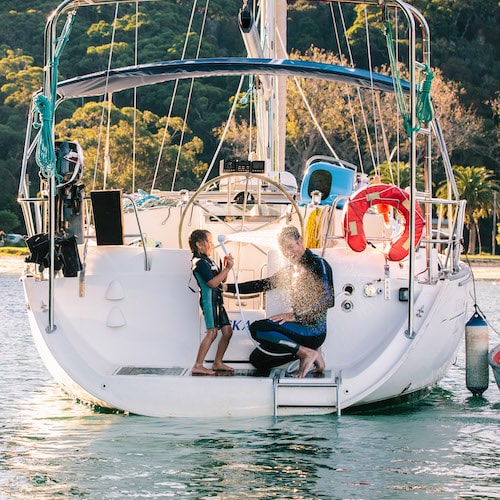
Having experienced living on a boat and cruising, both with and without a marine desalinator, I can attest that it’s a game-changing piece of gear. However, you definitely don’t need one to go cruising. There are plenty of low-tech ways to collect and make water on a boat.
Marine desalinators do offer some major benefits: there’s more water for showers, it’s easier to travel farther afield, you can spend more time in a remote location. However, these benefits have to be weighed against the drawbacks: namely a hefty price tag and ongoing maintenance.
Deciding whether a watermaker is right for you will come down to the type of cruising you’re doing, how much water you need, and your budget. Read on to learn about the pros and cons, costs, and key features of marine watermakers.
Table of contents
- 1 How does a watermaker work?
- 2.1 Benefits
- 2.2 Drawbacks
- 3.1 Powered or handpump
- 3.2 Electric or engine drive
- 3.3 Energy recovery watermaker
- 3.4 Modular, self-contained, and portable watermakers
- 3.5 Automatic flushing systems
- 3.6 Automatic Pressure Regulation and adjustable pump speed
- 3.7 Remote control panels
- 4 Top watermaker brands
How does a watermaker work?
A watermaker on a yacht converts seawater into fresh water through a process known as reverse osmosis (RO). A high-pressure pump pushes seawater through a semi-permeable membrane that filters out salt, organics, and bacteria. The fresh water is pumped into your water tanks while the remaining brine bi-product is discharged over the side of the boat, back into the ocean.
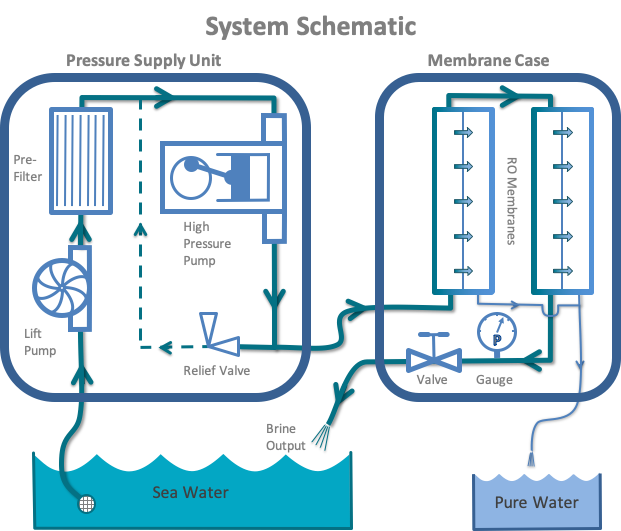
Marine watermakers: the benefits and drawbacks
Less water rationing.
When we started our 13,000 mile trip across the Pacific, we didn’t have a watermaker. We were on a tight budget and decided to prioritize other pieces of equipment like a life raft and wind vane.
As a result, we became experts in conserving water on a boat . We would carefully ration out water for washing dishes, taking showers, and even brushing our teeth!
After getting a watermaker we became far less meiserly because we knew we could always make more water if we needed to. It was a relief to not be constantly thinking about how much water we were using over the course of a day.
That being said, we couldn’t relax completely. We had to keep our tanks topped up, so as not to run the pump dry. We also always carried potable water in reserve, in case our watermaker broke in the middle of a long passage.
More luxuries
Can’t live without a proper shower? A boat water maker can make water-intensive luxuries like freshwater deck washdown, freshwater flushing heads, laundry, daily showers, and even baths, a possibility.
As great as this sounds in theory, we were surprised to find that we didn’t indulge in more showers after we got the watermaker.
We continued to use a hand pump pesticide sprayer to shower on deck despite having a watermaker and shower below. While some of this came down to habit, we also disliked running our engine (and consuming diesel) just to run the watermaker.
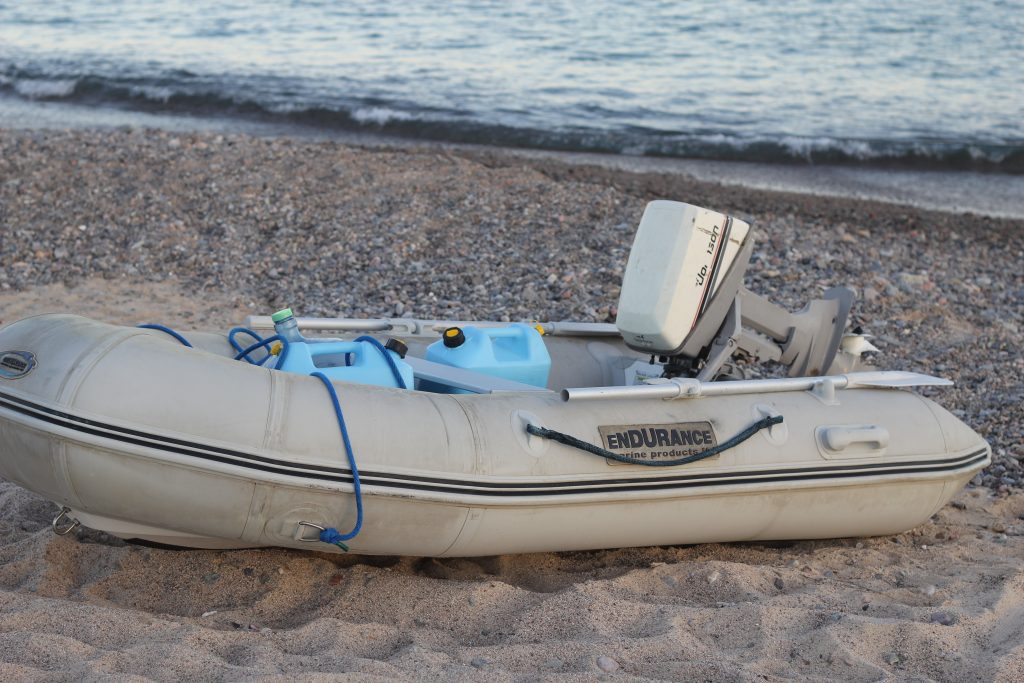
No hauling water
For us, this was by far the greatest benefit of having a watermaker!
While cruising in the US and Canada, we could refill our water tanks at a dock or marina. This was a minor hassle because it involved pulling up the anchor and docking the boat.
In Mexico, it was more challenging to get water. We would fill 5-gallon jugs at the local water purification plant in town and wheel them back to our boat on a collapsible dolly.
It often took a couple of trips with the dolly and dinghy to fill our water tanks. Oh, and we broke our dolly, twice!
We realized that if we wanted to spend more time exploring, and less time hauling water, we would have to invest in a watermaker. When we reached La Paz, Mexico we bought a refurbished watermaker, and we were so glad we did!
Our sailboat water maker gave us the gift of time, especially in places like Mexico and the South Pacific, where there were limited opportunities to fill water tanks up at the docks. It also saved us paying docking and water fees.
We estimate that our boat water maker saved us anywhere from four to six hours every week, time that we could spend exploring the wonderful places we were visiting.
A clean, safe water source
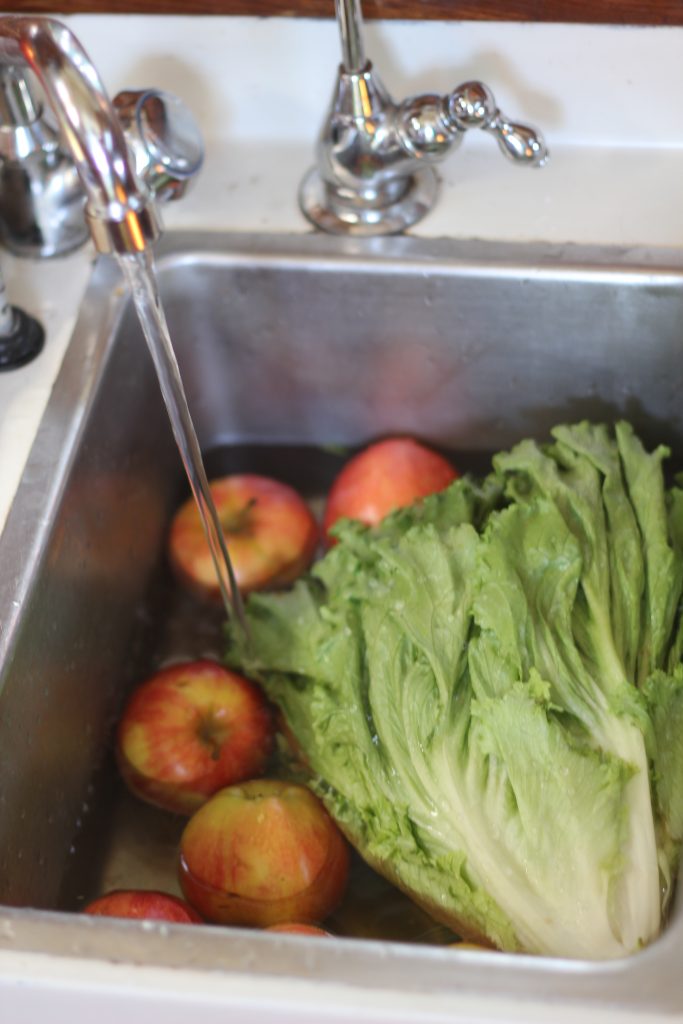
In places where the drinking water may be suspect, a boat water maker can be a reliable source of safe drinking water (assuming it’s in good working condition!).
More time in remote locations
A watermaker is a great tool if you’re drawn to remote locations where you might be the only boat in the anchorage.
It wasn’t until we reached Los Frailes, a secluded village on the Baja, that we really began to think about buying a watermaker.
There we were in an idyllic anchorage, surrounded by spectacular hiking and fishing. There was only one problem—every two days we had to walk 10 miles into town with our water jugs and hope that some kind samaritan would give us a lift back to our boat.
Before having a watermaker, we’d often leave a place we loved just because we needed to fill up our tanks. With a watermaker, we were more self-sufficient and could stay an extra few days, or as long as we wanted!
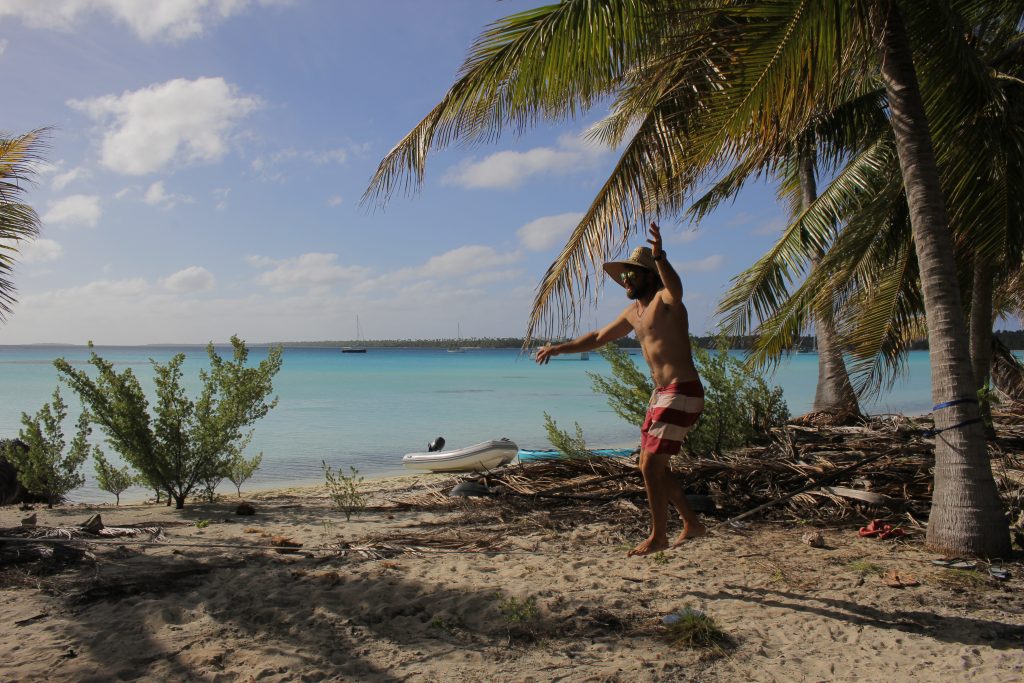
The number one drawback is the cost. We were able to find a refurbished water desalinator for $3,000, which was a great deal but also a considerable slice out of our cruising kitty.
How much does a watermaker cost?
Powered desalination systems for your average recreational cruising boat range from around 3,500 USD to 11,000 USD, with the more expensive options offering higher production (gallons of fresh water per hour).
Ongoing maintenance
Watermakers are yet another piece of boat equipment that needs to be maintained.
The majority of watermaker problems are caused by not using it enough or not using it properly.
If a watermaker is not used for a few weeks, the planktonic organisms in the seawater will die, rot, and clog the membrane and filters. This can eventually damage the reverse osmosis membrane in the watermaker.
For this reason, boat water makers should be used frequently and regularly flushed with fresh water.
Watermaker flushing
Check your manufacturer’s instructions on how to flush.
Rainman recommends flushing the seawater out of the system with fresh water if you are not using the system for more than a day or two. After another week, you need to freshwater flush the system again or pickle it for long-term storage.
Of course, it’s easy to forget, so we made it a rule to freshwater flush our watermaker after every use.
This is one good reason to choose a watermaker with an output that will meet your water consumption needs but not exceed them. If you’re using it every second day, you won’t have to try and remember whether you’ve flushed it or not.
Flushing a watermaker is relatively simple but it does involve a bit of work. We used a system with buckets of fresh water to flush our system and it generally took about 5 minutes.
You can also buy systems that automatically flush your watermaker at pre-determined times—even when you’re away from the boat (more on autoflush systems below).
Whatever you do, don’t use chlorinated water to flush as it will destroy reverse osmosis membranes. It’s possible to buy a carbon filter to remove chlorine from water sources at the dock.
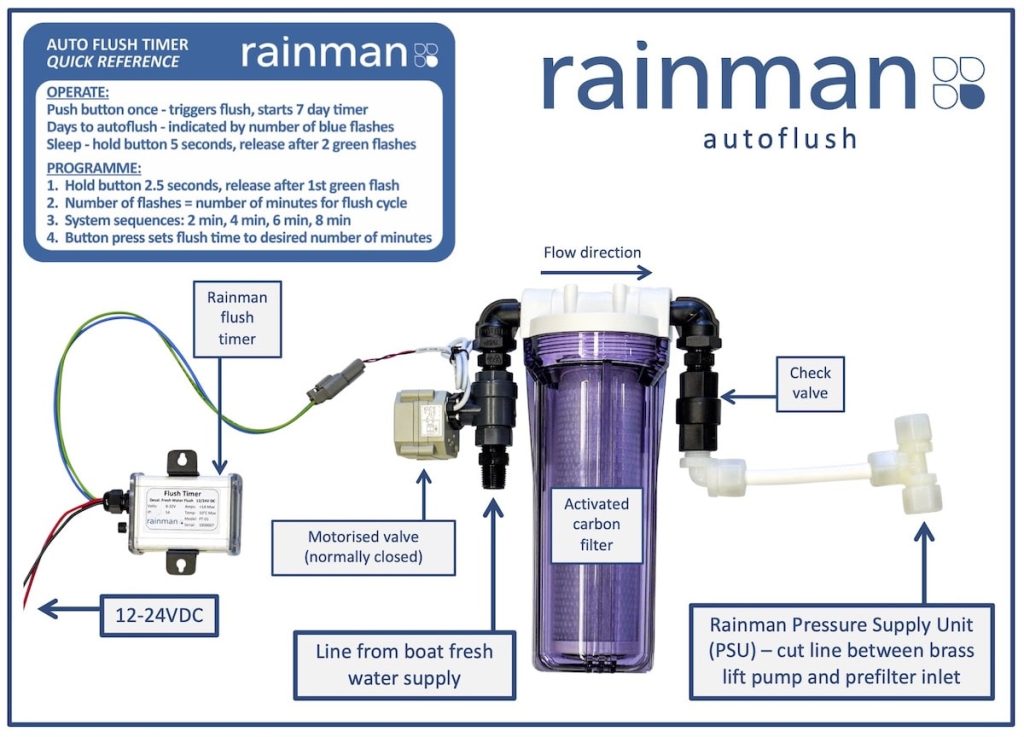
Pickling a watermaker
If you don’t plan on using your watermaker for a while it needs to be “pickled” with a special biocide to prevent growth and buildup which could render your reverse osmosis membrane totally useless.
A watermaker should also be pickled every so often to chemically cleanse the membrane.
In addition to flushing and pickling, you will also need to clean out and replace the raw water pre-filters.
Operating costs
When properly cared for, a membrane should last five to ten years. If you don’t properly flush or pickle your watermaker, it can be a lot sooner and membranes aren’t cheap, generally costing in the range of 200-700 USD.
You’ll also need to purchase pre-filters and pickling solution, which are generally quite affordable. It’s also a good idea to carry spare parts
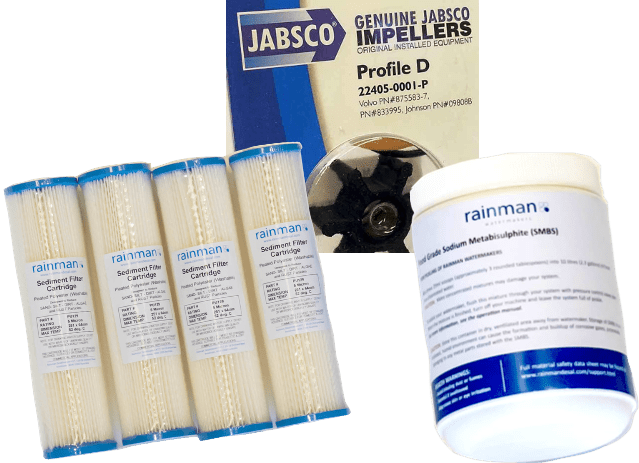
Power consumption
Watermakers can be real power hogs. When Practical Sailor tested a dozen DC watermakers they found they could draw anywhere from 12 to 48 watts per gallon, a huge range in efficiency!
According to Practical Sailor, “for maximum efficiency none of the systems drawing 15 amps or more should be operated without running the engine at the same time.”
We had to run our engine for hours to fill our tanks, which was annoying (and loud) when we were hanging out at anchor and also used up another finite resource—diesel fuel.
In our view, this was the single largest drawback to having a watermaker aboard.
Keep in mind that your power supply will determine what type of watermaker you buy. You may need to upgrade your electrical panels, get a generator or high-powered alternator, add solar panels, or increase battery capacity to supply the demand.
You can’t make water everywhere
While watermakers offer great flexibility and freedom, you can’t just make water in any old spot. If you make water in a polluted marina or anchorage, you’ll risk clogging up your filter. Most cruisers will head out to open water to ensure the saltwater they’re using is as clean as possible.
Key features to look for
Powered or handpump, handpump watermakers.
Handpump watermakers tend to be small and portable, the perfect thing to keep in your ditch bag in the event of an emergency. They’re less expensive than powered watermakers and produce far less water, usually around one gallon per hour.
Though I do know cruisers who have used a handpump watermaker for everyday use, they typically tend to be kept aboard for survival situations.
Powered watermakers
Powered watermakers run off your electrical supply or engine and can produce tens of gallons of water per hour. They tend to be a lot more expensive, but they’re productive enough to replenish your tanks.
Electric or engine drive
Powered watermakers can be electrically driven, by AC or DC, or run off the boat engine.
AC watermakers
AC models can produce in the range of 20-60 gph and are ideal for cruisers with an AC generator or alternator on board. They can also be used on boats with ample solar or wind sources and an inverter.
DC watermakers
DC watermaker systems typically produce in the range of 10-30 gph and are ideal for boats with solar power or 12V battery power.
Engine-driven watermakers
On an engine-driven watermaker, the high-pressure pump is belt-driven. These can produce a considerable amount of water, even on small engines. For instance, engine-driven units produce between 20-60gph, twice what a DC unit can produce.
Energy recovery watermaker
DC watermakers have become more efficient in recent years thanks to energy recovery systems (ERS). When the water leaves the watermaker it is still under pressure. ERS uses a set of valves to make use of this excess pressure to help drive the pump, which can reduce energy consumption by as much as 80 percent.
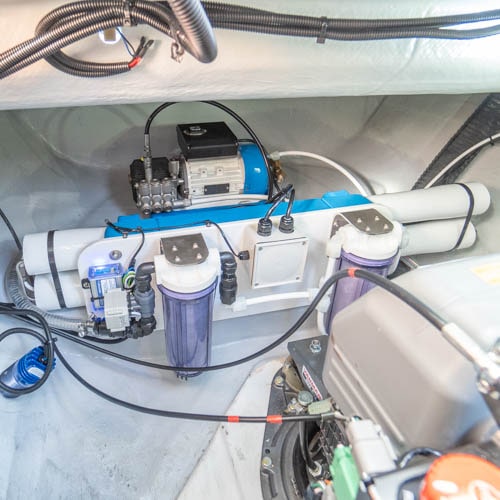
Modular, self-contained, and portable watermakers
Watermakers can be bought as modular, self-contained, and portable units. Choosing the right one may depend on your boat size and layout and whether you’re comfortable installing the watermaker yourself.
Modular units
Modular units come as several separate components that you can mount and connect yourself. This obviously offers a lot more flexibility and is particularly useful on smaller vessels where you may not have a lot of space. The downside is that these systems will take longer to install.
Self-contained units
Self-contained units arrive pre-assembled. While easier to install, they’re often bulkier and best suited to a bigger cruising sailboat with a large engine room.
Portable watermakers
Portable watermaker systems, like the Rainman watermakers, are entirely self-contained. Their compact design makes them easy to move and stow and you can completely avoid a permanent installation.
Simply put the intake and brine discharge hoses overboard, the freshwater hose in your water tank and you’ll be making water in no time.
If you race, have multiple boats, or plan on selling your boat, a portable watermaker is a great option because it can be easily moved from boat to boat.
If we were to buy another watermaker, we would probably opt for a portable one.
Automatic flushing systems
Automatic flushing systems use your boat’s freshwater supply to flush the watermaker for several minutes every few days. These systems require additional components (e.g., a timer, carbon filters, and a motorized valve) and installation but they take a lot of the maintenance out of having a watermaker onboard.
Automatic Pressure Regulation and adjustable pump speed
Your watermaker’s efficiency will be affected by the temperature and salinity of the water you’re cruising in. Cold and highly saline waters (e.g., in the high latitudes) will be more work for your watermaker, so it will take longer to purify.
Some units feature Automatic Pressure Regulation (APR) and adjustable pump speed which can help compensate for fluctuations in water temperature and salinity.
Remote control panels
Some watermakers have the option of a control panel which allows for easier access and remote control. Control panels tend to have a fairly simple interface with just a few gauges but may include a salinity sensor—so you can keep tabs on water quality—and auto-flush integration—so you can flush your watermaker with the flip of a switch.
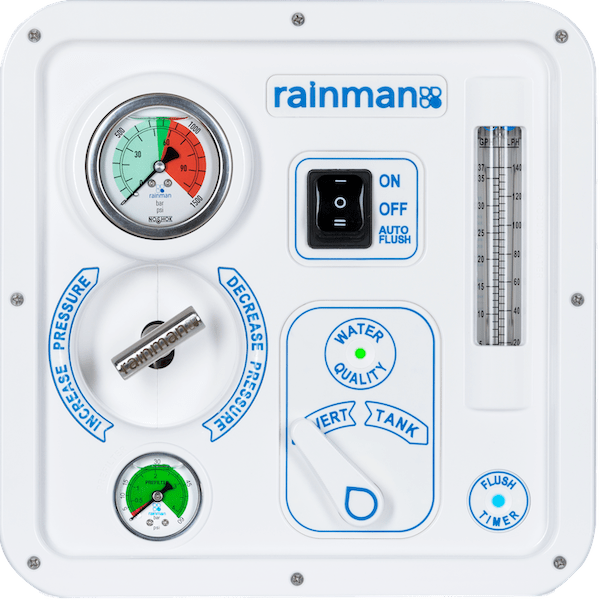
Top watermaker brands
If you’re considering buying a watermaker for a boat, here are some of the top brands to consider.
- Cruise RO Watermaker
- Echotec watermakers
- Horizon Reverse Osmosis (HRO)
- Sea Recovery watermakers
- Schenker watermakers
- Spectra watermakers
Fiona McGlynn is an award-winning boating writer who created Waterborne as a place to learn about living aboard and traveling the world by sailboat. She has written for boating magazines including BoatUS, SAIL, Cruising World, and Good Old Boat. She’s also a contributing editor at Good Old Boat and BoatUS Magazine. In 2017, Fiona and her husband completed a 3-year, 13,000-mile voyage from Vancouver to Mexico to Australia on their 35-foot sailboat.
Terms and Conditions - Privacy Policy

5 Best Watermakers for Sailboats

Last Updated by
Daniel Wade
June 15, 2022
With the right Watermaker, the ocean becomes an almost immeasurable supply of fresh and clean drinking water to keep you hydrated during your offshore sailing adventures.
Many sailors do spend a lot of their time and money on various parts of the sailboat including the sails, engine, electronics, and generators especially when preparing for long-distance voyages.
While there's absolutely nothing wrong with this, they often overlook one crucial part of general human survival: having an ample supply of fresh drinking water.
Whether you have freshwater drinking tanks on your sailboat or planning to cruise in areas where you can easily access clean drinking water, the hassle involved in having to come to the dock to fill the water tanks can be quite overwhelming.
This is exactly why you need to find the best watermakers for sailboats.
Like many other nautical technologies, watermakers have significantly advanced in the last few decades to become very efficient and more reliable. They're no longer a luxury on your sailboat but a necessity. Better still, watermakers have become relatively affordable and are meant to keep you hydrated as you explore areas that do not have clean and fresh drinking water.
In this article, we'll take a look at how watermaker systems work, highlight its benefits, and highlight the best sailboat watermakers on the market right now. At the end of this read, you should be able to choose the best watermaker for your sailboat.
Table of contents
Benefits of Having a Watermaker on Your Sailboat
The freedom and security that come with having full water tanks on your sailboat are of immense importance, especially if you're cruising in an area where fresh drinking water is hard to come by and quite expensive when you do. As such, having a watermaker aboard your sailboat is no longer a luxury like it used to be in the past. With a steady supply of fresh and clean water, your life on the sailboat will be a lot better. This is because you'll have enough clean water to drink, cook, wash, and shower, which is beneficial if you want to enjoy your sailing adventures.
Honestly speaking, many sailors do not actually need a watermaker. Well, if you're planning to sail just near the shores, then there's a chance that you can easily access fresh and clean water by the dock. But this can be limiting if you've been dreaming of going off the grid and sailing to some exotic and unknown places in the world.
With that in mind, a watermaker makes a lot of sense to most sailors. You won't have to worry about having to carry aboard gallons of fresh water for cooking and drinking during your voyage. You won't have to treat freshwater as a precious commodity that must last until you can refill at the next port. With a watermaker, you can simply go ocean crossing without worrying about running out of water.
A watermaker allows you to have a steady supply of fresh and clean water to keep everybody well-hydrated and healthy. You can clean the water anytime you feel like and all you have to do is replace the filter once in a while and you'll be good to go. In essence, a watermaker is probably one of the most important equipment to have aboard your sailboat, so installing it is of great importance if you're a serious sailor.
The Basics of Modern Marine Watermakers
Modern marine watermakers essentially follow the principle of reverse-osmosis to produce pure, drinking water from seawater. During this process and through very high pressure, seawater is forced through a semipermeable membrane that only allows freshwater molecules to pass through it but not salt, bacteria, or any other organic material. The newly made pure, drinking water is then piped to the sailboat's water tanks while the leftover (brine) is discharged overboard.
Even though marine watermakers may differ in the type of pump that's employed and how it is driven, this is one of the most important features in every watermaker. In most cases, water can be electrically pumped or powered directly off the boat's engine. If you have an AC generator or alternator on your boat, it would make much sense to use the AC output to drive the watermaker directly. You can also choose the DC-powered models if you rely on renewable energy from solar or wind. Alternatively, you can still go for AC-powered watermakers but you'll have to buy an inverter.
All in all, DC-powered watermakers are more efficient since they integrate a power-saving energy recovery system (ERS). You must, however, keep in mind that your energy consumption levels might be quite high if you're sailing in colder and saltier areas. This is because the water purification process might be a bit slower in such areas. As such, you should consider investing in a more high-powered watermaker system if you will be sailing in colder and saltier areas than if you're planning to sail more in warm and less salty areas.
As far as an engine-driven watermaker is concerned, you should mount the high-pressure pump on the engine so that it can be belt-driven using an automatic clutch. An engine-driven watermaker should be your first option if you want large quantities of fresh drinking water. This is more productive than AC or DC-powered watermakers. Even with a relatively small engine, this setup has an automatic regulator that constantly pumps the water. With that in mind, engine-driven watermakers are ideal if you want to reduce your energy consumption. To put it into perspective, an engine-driven watermaker can lower energy consumption by an enormous 80%, especially when compared with conventional AC or DC-powered watermaker systems.
How to Choose the Best Watermaker for Your Sailboat
There are many factors to consider when looking for the best watermakers for your sailboat. Here are the most important things to consider.
Your Freshwater Needs
One of the most important things to consider before spending your money on a watermaker is your freshwater needs. What quantity would be enough to keep you going on your sailing adventure? While the quantity might differ from one sailor to the other or from one boat to the other, you should consider the number of gallons that a particular watermaker can produce per day. This will help you in choosing the ideal watermaker; a model that will ensure that you never run out of water. Do not underestimate your water needs, especially if you're planning to sail with your children or if you're planning to stay on the boat for an extended period of time.
Do you have enough space on your vessel to accommodate the type of watermaker you're looking to buy? While most watermakers are designed to fit in the smallest of space, you should consider the actual size of the watermaker and find out whether you have enough space on your vessel to fix it.
Watermakers can run on electricity, renewable energy such as wind and solar (if you have them on your vessel), or both. When looking for the perfect watermaker, you should consider how to power it and whether or not the watermaker has low-energy consumption, which is definitely a great feature. Again, there are also engine-driven watermakers, so it's important to know exactly what you're going for.
Maintenance
Watermakers have a reputation for being difficult to maintain. Fortunately, the equipment and components have improved in the last few years so you should go for a model that's easy to maintain. You should use the watermaker in water bodies that look good, You should avoid using the watermaker in dirty harbors as you may have to change the filters every so often or even damage your watermaker altogether.
Best Watermakers for Sailboats
Let's take a look at the best watermakers available on the market right now.
The Ultra Whisper
Engineered by limited electrical options that can run on either DC or AC, THE Ultra Whisper by Sea Recovery is one of the best watermakers currently available on the market. In addition to being very quiet, this watermaker features an automatic operation that requires very minimal operator adjustment.
This watermaker is ideal for small powerboats and sailboats since it can serve as an efficient water supply. This model boasts about a 75% reduction in power consumption, especially when compared to other models.
- Smooth and quiet water production
- Can produce up to 2,280 liters per day
- Ideal for small boats
- It is energy efficient
- It might not be perfect for large boats
Echotec Watermaker
If you want a watermaker model that can produce 60 liters per hour flawlessly and with no maintenance apart from changing the filters, look no further than the Echotec Watermaker. This model is designed for ultra-reliable performance and easy customer installation.
This watermaker is made from high-quality components that can withstand the continuous harsh marine environment, making it one of the most durable watermakers on the market. This is essentially a series of modular watermakers ranging from 12-volt to 24-volt DC-powered models. They bring forth energy efficiency, a computerized energy recovery system, and ultimate reliability to ensure that you never run out of fresh drinking water while out there on the sea.
- Energy efficient
- Cost-effective
- Comes with a very low speed
- Not ideal for large boats
Spectra Katadyn PowerSurvivor
As a compact and energy-efficient watermaker, the Spectra Katadyn PowerSurvivor is arguably the most affordable watermaker currently available on the market. We are talking about a model that only requires 4 amps to desalinate water for your sailboat. It can produce 1.5 gallons of fresh drinking water per hour, which is an excellent return for a watermaker of its size.
It is also one of the most portable watermakers around. You can choose to either install it permanently or temporarily in case you want to take it somewhere else. This portability is also essential if you're looking for a space-saving model that can fit in the smallest of compartments. Its simple but rugged design is essential in ensuring that it can perform at its best even in harsh marine conditions. In terms of its power capabilities, this is the only model on the market that will convert to a hand-operated system or manual power if there's a power shortage.
- Portable and lightweight
- Rugged design to withstand harsh marine environments
- Efficient and reliable
- Can revert to manual power if there's a power shortage
- Perfect for off-grid sailing
- Gasoline or diesel can easily damage the semi-permeable membrane
Village Marine - Little Wonder Series
Whether you're looking for a watermaker for your small sailboat or looking for a watermaker that can efficiently serve those huge yachts, the Village Marine Little Wonder Series provides everything. This model is meant for experienced sailors who are looking for various capacity options. This watermaker weighs just about 69 pounds but can produce nearly 180 gallons of fresh drinking water each day.
Designed with a low RPM high-pressure pump, this model remains one of the most efficient and economical watermakers on the market. That's not all; this watermaker is designed with corrosion-resistant features and is one of the most serviceable watermakers in the game. It is reliable, quiet, and portable; all factors that make a watermaker great.
- Easy to operate
- Corrosion-resistant
- Easy to maintain
- Quiet and versatile
- It doesn't have automatic adjustment controls
Ventura 150 Watermaker
This is one of the most versatile watermakers on the market. It can use both electricity and renewable energy. This model is engineered to be lightweight and energy-efficient and its compact and modular design makes it a great option if you're looking for a watermaker that's easy to use and install in confined spaces.
The Ventura 150 watermaker is highly efficient as it can produce over 6 gallons of water an hour, which makes it quite perfect for small vessels. This sailboat watermaker features a controller that allows you to operate and monitor the device remotely. It also has the auto store button that will automatically flash the system after every five days.
This watermaker is quiet and surprisingly compact despite its ability to produce about 150 gallons of water per day. It also gives you the option of going for the automated manual or manual model.
- Very versatile
- Can use both electricity and renewable energy power
- It is smooth and quiet
- It is compact and lightweight
- The manual model has analog controls
To this end, it's easy to see that having an ideal watermaker aboard your vessel is one of the first crucial steps towards being self-sufficient and sustainable. With a watermaker, you'll be able to access fresh drinking water at all times when sailing even in far-flung places. Most of these models are well-constructed and incorporate some of the best technologies that make them efficient, reliable, and easy to install, use, and maintain.
So when it comes to choosing the best watermaker for your sailboat, it may all come down to what is ideal for you in terms of energy consumption, efficiency, the quantity of water produced, among many other things. With an ideal watermaker, you can remain off the grid for as long as you want without ever worrying about running out of water and this is of great importance in enjoying your sailing adventures.
Related Articles
I've personally had thousands of questions about sailing and sailboats over the years. As I learn and experience sailing, and the community, I share the answers that work and make sense to me, here on Life of Sailing.
by this author
Sailboat Upgrades
Most Recent

What Does "Sailing By The Lee" Mean?
October 3, 2023

The Best Sailing Schools And Programs: Reviews & Ratings
September 26, 2023
Important Legal Info
Lifeofsailing.com is a participant in the Amazon Services LLC Associates Program, an affiliate advertising program designed to provide a means for sites to earn advertising fees by advertising and linking to Amazon. This site also participates in other affiliate programs and is compensated for referring traffic and business to these companies.
Similar Posts

How To Choose The Right Sailing Instructor
August 16, 2023

Cost To Sail Around The World
May 16, 2023

Small Sailboat Sizes: A Complete Guide
October 30, 2022
Popular Posts

Best Liveaboard Catamaran Sailboats
December 28, 2023

Can a Novice Sail Around the World?
Elizabeth O'Malley

4 Best Electric Outboard Motors

How Long Did It Take The Vikings To Sail To England?

10 Best Sailboat Brands (And Why)
December 20, 2023

7 Best Places To Liveaboard A Sailboat
Get the best sailing content.
Top Rated Posts
Lifeofsailing.com is a participant in the Amazon Services LLC Associates Program, an affiliate advertising program designed to provide a means for sites to earn advertising fees by advertising and linking to Amazon. This site also participates in other affiliate programs and is compensated for referring traffic and business to these companies. (866) 342-SAIL
© 2024 Life of Sailing Email: [email protected] Address: 11816 Inwood Rd #3024 Dallas, TX 75244 Disclaimer Privacy Policy

Service Locator
- Angler Endorsement
- Boat Towing Coverage
- Mechanical Breakdown
- Insurance Requirements in Mexico
- Agreed Hull Value
- Actual Cash Value
- Liability Only
- Insurance Payment Options
- Claims Information
- Towing Service Agreement
- Membership Plans
- Boat Show Tickets
- BoatUS Boats For Sale
- Membership Payment Options
- Consumer Affairs
- Boat Documentation Requirements
- Installation Instructions
- Shipping & Handling Information
- Contact Boat Lettering
- End User Agreement
- Frequently Asked Questions
- Vessel Documentation
- BoatUS Foundation
- Government Affairs
- Powercruisers
- Buying & Selling Advice
- Maintenance
- Tow Vehicles
- Make & Create
- Makeovers & Refitting
- Accessories
- Electronics
- Skills, Tips, Tools
- Spring Preparation
- Winterization
- Boaters’ Rights
- Environment & Clean Water
- Boat Safety
- Navigational Hazards
- Personal Safety
- Batteries & Onboard Power
- Motors, Engines, Propulsion
- Books & Movies
- Communication & Etiquette
- Contests & Sweepstakes
- Colleges & Tech Schools
- Food, Drink, Entertainment
- New To Boating
- Travel & Destinations
- Watersports
- Anchors & Anchoring
- Boat Handling
Boat Showers: How To Install A Water Saving Shower
Advertisement
This spin on the basic shower set-up alters the water intake and sump drainage to allow long showers while conserving water.
A hot shower is one of the great luxuries on any boat. The biggest barrier to enjoying a long, hot shower after a cold, wet day is simply the need to conserve water. Water conservation conveys a greater cruising range by cutting down on the need to head into port for water. After coming across a similar system in a friend's boat, I opted to convert my shower drain system. Essentially the system upgrade allows you to have a very long and hot shower with a minimum of water consumption.
A shower sump usually has a submersible drain pump. A float switch also controls the pump. Jabsco manufactures a diaphragm pump that can be directly connected to the shower sump. I have also used the Whale Gusher pump with some success as these pump types seem to be less prone to clogging with hair and soap, a constant problem with submersibles and float switches. In this type of system, the shower drain sump has a suction line or pipe that goes to a separate diaphragm pump.
A standard shower system, illustrated below, consists of two water systems, the water supply system that delivers hot and cold water to the faucets and the shower-spray head. The drain, or grey water side of the system, consists of the shower sump, drain pump, a float switch, possibly a strainer, the overboard discharge line or a line that discharges grey water to a holding tank. In this simple operation, the faucet controls the water pressure; the water flows from the showerhead and is collected in the shower drain sump; the water level activates the sump pump float switch that turns on the water pump to empty the sump.
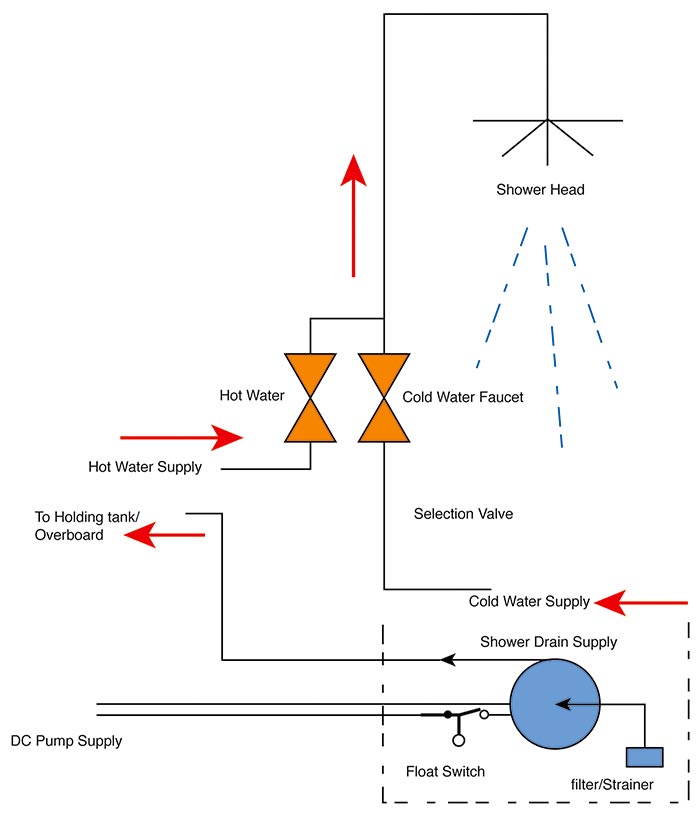
A traditional shower set-up.
Converting the basic system requires a few additional components. Insert a three-way valve in the drain line and another three-way valve into the cold water line to interconnect the two water systems. Connect a waterproof control switch to the float switch control circuit to supply current to the motor. Disconnect and remove the float switch. Adding a finer filter in the pump suction line, downstream from the coarse strainer, helps to reduce recirculation of any soap or shampoo suds.
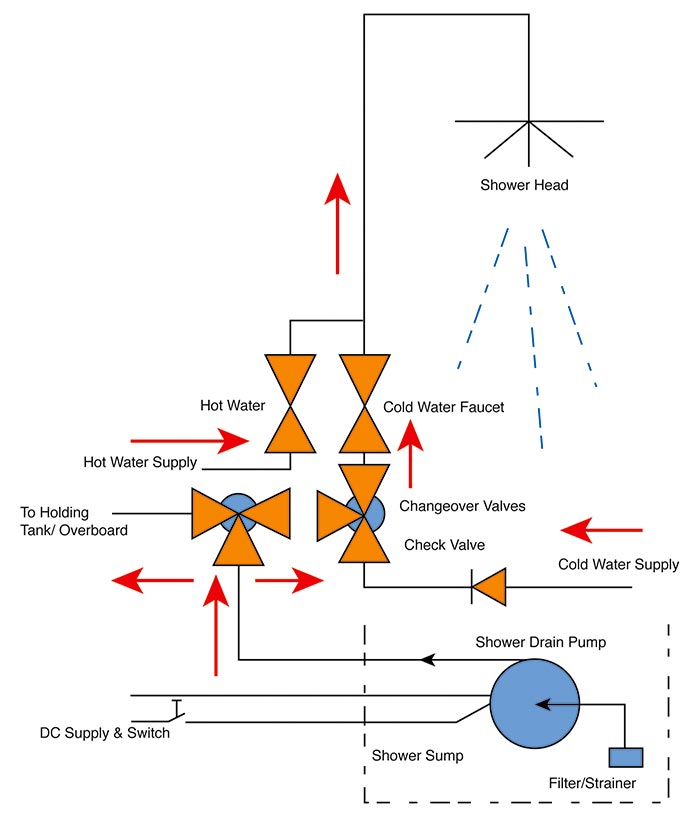
A water-saving shower design filter rinse water, then recycles it back through the system by adjusting the three-way valves as desired by the bather.
I also recommend purchasing and installing a household-type, variable spray pattern, water conserving showerhead. You can also insert one-way check valves into the inlet side of the cold water to prevent grey water feedback into the cold-water system.
To use, set the sump drain valve in the recirculation position to direct water to the showerhead. Initially, the shower is started using the normal water supply and this allows the sump to partially fill. Alternatively, I also use a solar water-heating bag and empty some or all of the contents directly into the shower sump. Close the hot and cold-water faucets and position the cold-water feed line valve to supply the showerhead with the sump water and turn on the cold-water faucet to supply the showerhead. Closing the pump switch starts the pump, which then recirculates the water continuously.
When finished, reposition the cold water and drain valves to direct water to the holding tank or overboard. A good shower can be achieved using just a half-gallon for the soap, another half-gallon for the rinse.
For boats without a pressurized water system, simply add water to the sump from a solar bag or boil water in a pot on the stove and dump it in.
Related Articles
The truth about ceramic coatings for boats.
Our editor investigates the marketing claims of consumer-grade ceramic coatings.
Fine-Tune Your Side Scan Fishfinder
Take your side-scanning fishfinder off auto mode, and you’ll be spotting your prey from afar in no time
DIY Boat Foam Decking
Closed-cell foam flooring helps make boating more comfortable. Here’s how to install it on your vessel
Click to explore related articles
Contributor, BoatUS Magazine
John C. Payne is a cruising sailor and professional marine electrical engineer and surveyor with a 28 year career in merchant shipping and the offshore oil industry. He is the author of The Marine Electrical and Electronics Bible, Motorboat Electrical and Electronics Manual and Understanding Boat Batteries all published by Sheridan House.
BoatUS Magazine Is A Benefit Of BoatUS Membership
Membership Benefits Include:
Subscription to the print version of BoatUS Magazine
4% back on purchases from West Marine stores or online at WestMarine.com
Discounts on fuel, transient slips, repairs and more at over 1,200 businesses
Deals on cruises, charters, car rentals, hotel stays and more…
All for only $25/year!
We use cookies to enhance your visit to our website and to improve your experience. By continuing to use our website, you’re agreeing to our cookie policy.
- OUT NOW 'Wild Alaska: River & Ocean'
- About the Magazine
- Ocean Photographer of the Year
- Storyteller in Residence
Art, science and conservation... on a sailboat
A sailboat is a great platform for collaboration.
There are a number of reasons for this, but it’s largely down to two factors: space and shared interest. There isn’t much room on your typical sailboat, so people are compelled to talk and connect with one another. When the boat’s on the move, the crew has to work together, building team spirit. And, in the absence of common ground, there is always the ocean to tie us together.
Sail Britain was founded in 2015 to encourage the sharing of interdisciplinary expertise regarding the ocean, to connect people from various ocean fields who would not ordinarily interact or share knowledge with one another. In light of the threats our ocean is currently facing, it is more important than ever to adopt innovative approaches to marine conservation – and I hoped Sail Britain could be one.
The ocean is not our natural habitat. While scientific theory suggests we were once an aquatic animal, the ocean is certainly not our natural habitat anymore. And yet, the ocean remains crucial to all life on Earth – including us. It supplies 50% of the atmosphere’s oxygen and helps regulate the climate. Moreover, the ocean supplies millions of people with a primary source of protein and sustains the livelihoods of coastal communities.
The problem is, from a conservation standpoint, it has been a case of ‘out of sight, out of mind’. According to the UN, almost a third of fisheries have been fished beyond sustainable limits, and the WWF estimates that marine life populations have declined by almost 50% since 1970. With climate change adding ocean acidification and coastal erosion, and coastlines and the open ocean choking with plastic waste, it is clear we can’t ignore it anymore. There are challenges that have to be overcome. Changes that must be made.
It was this growing realisation, and my own experience of what a wonderful collaborative social space a sailing boat can be, which led me to found Sail Britain. We need to rekindle our connection with the ocean and understand its importance for our own lives. It’s vital we achieve that if we are to be able to conserve it for future generations.
Sailing brings people together in a challenging environment that can aid personal development as well as build relationships. It also allows time to observe, listen and contemplate, and for people to develop and exchange ideas. Through traveling slowly, undertaking research and completing citizen science projects, being at sea offers something that travelling by road, rail or air cannot. This personal connection with the ocean is a key step in raising awareness of the importance of the marine environment.

As a sailor, the plastic pollution crisis is evident. I see increasing amounts of rubbish floating in the sea and washed up on beaches. In the ten years I have been sailing on open water, I have seen a marked change. Sail Britain was my answer – a platform to inspire positive change though direct engagement between people and the ocean.
Here’s what a few of my crewmates have thought of their interdisciplinary experiences:
The Researcher
Communicating conservation messages is vital to inspire a change in awareness, and this is particularly true of ocean science. Kate Baker is a research fellow in the Centre for Water Systems at the University of Exeter . She works to communicate research to industry and practitioners.
“Science has many answers to the global problems that we’re facing, including anthropogenic climate change, plastics in the ocean and decreasing levels of biodiversity,” says Kate. “However, there is a real barrier in getting this information out there. It’s vital to ensure that findings don’t just end up in academic journals but are used in the ‘real world’ to create positive change. Art is a powerful tool to help engage and communicate academic findings and to empower people to make the small local changes which achieve lasting global impacts.
“It was the idea of mixing artists and scientists together on a boat – that breaking down of barriers between disciplines – which led me to join Sail Britain’s programme. The uniqueness of the project is that it creates a safe space for people to interact and to build trust. It really is powerful. Today, life is busy with many things conducted online, through social media and email. It is more difficult to link and overcome barriers between disciplines without ‘real life’ interaction. The hands-on nature of sailing creates the perfect setting to achieve this. The conversations I had with Tessa, the artist in residence, and the others on board, helped spark ideas and made me think in new ways. It was energising.”
The Scientist
Nick Scott is an MSc research student at the University of Exeter, currently studying microplastics in the marine environment. More specifically, the relationship between microplastic particles in the blue mussel ( Mytilus edulis ) and its habitat. Nick joined the project to undertake sampling for microplastics in the surface water of the river Fal estuary, and to assess the distribution of microplastics throughout this environment.
“The potential effects and scale of plastic waste in the marine environment are now familiar topics to many. Having recently finished my undergraduate project, I felt like my research was hidden in the laboratory, and had little ‘real world’ impact. Communication of findings and engagement with non-scientists is an essential component of scientific research if it is to have an impact. Sharing my plastics research with others in an environment not entirely dominated by scientists was a great way to reflect on my findings and the scientific principles that I have learned and now take for granted.
“But the real value of the interdisciplinary approach lies in the diversity of the people involved, and the great variety of expertise and knowledge this brings. When undertaking research in the field, often even the most rigorous plans go awry, and the potential to tap into this huge accumulative skillset allows unexpected issues to be quickly overcome. The interdisciplinary approach to the Sail Britain project created a space where I was able to present my research and share my knowledge with both scientists in different fields and a non-scientific audience.
I had the opportunity to work with artists who are inspired by the landscapes around us and the challenges they face. Fundamentally our work is inspired by the same issues, and the combination of both artists and scientists produced a far more creative and explorative environment than I have experienced with purely scientific endeavours.”

Tessa Grundon is an English artist living in New York but working on both sides of the Atlantic. Much of her work is rooted in geographical locations, exploring and mapping the topography and history of a place and using elements of the landscape as components in her work.
“As an artist engaged with landscape and environment the opportunity to be artist in residence for this expedition was something to be leapt at,” says Tessa. “River mud and debris found along strand lines are among the materials I often work with.
“Unfortunately plastic is an enormous and ever-increasing part of the flotsam and jetsam I retrieve from marshes, rivers and estuaries. As a result it has become an important part of the conversation between artists and scientists who work on environmental issues. Working with Sail Britain has given me an opportunity to see the landscape and now seascapes from a different viewpoint physically as well as emotionally and engage on a different level.”
Sail Britain is an interdisciplinary organisation weaving together sail training, a wide variety of ocean research topics, engagement through the arts and community events, and adventure with purpose to inspire positive change. Everyone is welcome to join the sailing programme and to bring ocean related projects on board, whether creative or scientific.
The current issue of Oceanographic is supported by:
Sea stories
Beautiful ocean stories straight to your inbox. Join our community.
10% off your ENTIRE first order
Sign up to our beautiful Sea Stories newsletter and enjoy 10% off your ENTIRE first order – magazines, books and subscriptions all included!
" * " indicates required fields

115 Ways to Conserve Water – The Ultimate Guide
Water, that life-giving elixir, is more than a mere resource—it’s the cornerstone of our very existence.
Sadly, due to increasing environmental issues and our burgeoning global population, it’s become more important than ever to find effective ways how to conserve water. Wondering where to start? Well, look no further.
We present “115 Ways to Conserve Water – The Ultimate Guide,” a comprehensive roadmap that navigates the path towards water conservation with strategies so simple yet effective, they can fit snugly into your daily routine.
Table of Contents
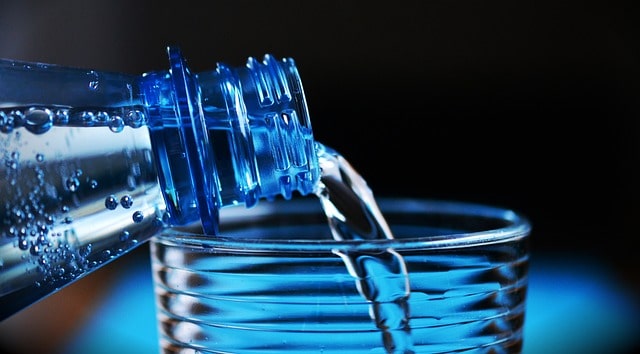
Each drop of water is a stitch in the fabric of life, and conserving it is an indispensable responsibility that each of us shares.
So, let’s dive right into the myriad ways we can contribute towards saving this precious resource.
Wise Water Usage in the Kitchen
The kitchen is a hotbed for water usage. Therefore, smart strategies here can significantly contribute to your water-saving mission.
1. Load up your Dishwasher
Did you know that a running dishwasher uses less water than doing dishes by hand? It’s true! Make sure to fill up your dishwasher completely before you run it, and voila, you are already saving water.
2. Efficient Cooking Methods
Cooking methods can have a profound impact on water usage. Opt for pressure cooking or steaming over boiling. These methods not only save water but also retain the nutrients in your food. Talk about killing two birds with one stone!
3. Composting Over the Disposal
Using a garbage disposal can guzzle up gallons of water. Instead, why not start composting? It’s a great way to reduce water waste and create rich, organic compost for your garden.
4. Limit the Use of Garbage Disposal
Garbage disposals require a lot of water to function properly. Instead, consider composting organic waste to reduce water usage and create nutrient-rich soil for your plants.
5. Reuse Pasta Water
Instead of pouring pasta water down the drain, let it cool and use it to water your plants. The water is starchy and contains valuable nutrients that your plants will love.
6. Rinse Produce in a Filled Sink or Bowl
Rather than rinsing fruits and vegetables under a running tap, wash them in a bowl of water. You can then use this water for your indoor or outdoor plants.
7. Use the Right Sized Pots
By matching the size of the pot to the burner on your stove, you can heat your food faster and save water. Plus, a smaller pot means less water is needed to boil or cook your food.
8. Catch That Tap Water
While you’re waiting for the tap water to heat up, catch it in a container. You can use this water for various purposes like watering plants or rinsing dishes.
9. Steam Instead of Boiling
Steaming vegetables not only retains more nutrients than boiling but also uses less water. It’s a win-win!
10. Plan Your Meals
Planning meals helps prevent food waste, which in turn reduces the water wasted in cooking unnecessary food. Plus, you’ll be saving on your grocery bills too!
11. Cook Smart
Reduce the amount of water you use in cooking. Steam vegetables instead of boiling them to maintain nutrients and save water. Also, use just enough water to cover the pasta when boiling.
12. Limit the Use of Garbage Disposal
Garbage disposals require a lot of water to operate properly. Composting kitchen waste is a better option, and it creates nutrient-rich soil for plants.
13. Use a Dish Pan for Hand Washing
If you wash dishes by hand, don’t let the water run while rinsing. Fill one sink with wash water and the other with rinse water.
14. Defrost Food in the Fridge
Instead of using running water to defrost frozen food, plan ahead by moving items from the freezer to the refrigerator for thawing.
15. Keep a Pitcher of Water in the Fridge
Instead of letting the tap run until the water is cool, fill a pitcher of water and keep it in the fridge.
Smart Water Conservation in the Bathroom
The bathroom is another significant contributor to daily water consumption.
Yet, with some thoughtful modifications, you can turn it into a bastion of water conservation.
16. Shorter Showers
Eager for a quick way to conserve water? How about turning your marathon showers into sprints? Shaving just a couple of minutes off your shower time can save up to 150 gallons of water per month.
17. Low-flow Showerheads
Low-flow showerheads are a boon for water conservation. (affiliate link) These wonders can reduce your water usage by up to 20,000 gallons annually. Talk about making a big splash with small changes!
18. Faucet Aerators
Installing faucet aerators ( affiliate link) on all your faucets can reduce your home’s sink water consumption by as much as 60%, and they’re inexpensive and simple to install. It’s a win-win if you ask me!
19. Collect Shower Warm-Up Water
While waiting for your shower to reach the perfect temperature, collect the running water in a bucket. This water can be used for flushing the toilet, watering plants, or cleaning.
20. Use a Toilet Tank Bag
A toilet tank bag is a water-displacement device that reduces the amount of water used in each flush. It’s a simple and affordable way to save water in the bathroom.
21. Install a Tap Aerator
A tap aerator is a device that mixes air into the water stream. This not only provides a smoother flow but also significantly reduces water usage.
22. Reuse Bathwater
Just taken a bath? Don’t let the water just drain away! You can use it to flush the toilet or water your garden.
23. Turn off the Tap While Brushing or Shaving
This might sound obvious, but many people still let the tap run while brushing their teeth or shaving. Turning off the tap during these activities can save several gallons of water every day.
24. Take Care of Leaks Immediately
A leaky faucet or a running toilet can waste hundreds of gallons of water. If you notice a leak in your bathroom, fix it as soon as possible.
25. Opt for a Water-Saving Showerhead
Water-saving showerheads use technology that can significantly reduce your water usage, helping you save water each time you shower.
26. Use Recycled Water for Flushing
If it’s feasible and sanitary, consider using greywater or captured rainwater for flushing the toilet.
27. Install a Dual-Flush Toilet System
A dual-flush system has two flush options: a half-flush for liquid waste and a full-flush for solid waste. This can significantly cut down on water usage.
28. Don’t Use the Toilet as a Trash Can
Every time you flush a tissue or other small bit of trash, five to seven gallons of water is wasted.
29. Insulate Your Water Pipes
By insulating your water pipes, you’ll get hot water faster and avoid wasting water while it heats up.
30. Consider a Bath-Shower Combo
Opt for a combination bath-shower unit. This way, you can take a quick shower when you’re in a hurry and still have the option for a relaxing bath when you have more time.
Water Conservation in the Garden
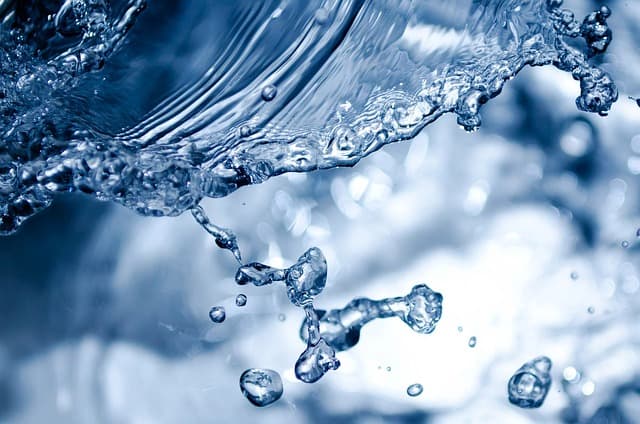
Your lush green garden need not be a water guzzler.
With smart and sustainable gardening techniques, you can maintain its beauty and contribute to water conservation.
31. Drought-resistant Plants
Embrace drought-resistant plants. These hardy plants, also known as xerophytes, can survive with minimal water, reducing your garden’s water demand substantially.
32. Rain Barrels
Catch that rainwater before it goes down the drain—literally! Installing a rain barrel to collect rainwater provides a ready and renewable supply of water for your plants.
33. Watering Schedule
Water your plants during the early morning or late evening when the temperatures are cooler. This way, less water will be lost to evaporation, and your plants will thank you for it!
34. Collect Rainwater
Collect rainwater in a barrel and use it to water your plants. Rainwater is free and better for your plants as it doesn’t contain any chlorine.
35. Install a Drip Irrigation System
A drip irrigation system delivers water directly to the base of your plants. This not only reduces evaporation but also uses less water than traditional watering methods.
36. Water Early in the Morning
Watering early in the morning reduces evaporation. This allows your plants to get the most out of the water they receive.
37. Use Mulch
Applying mulch around your plants reduces water evaporation from the soil, keeps the soil cool, and suppresses water-thirsty weeds.
38. Plant Native Plants
Native plants are adapted to local climate conditions and require less water than non-native species. They also provide habitat for local wildlife.
39. Group Plants with Similar Water Needs
By grouping plants with similar watering needs together, you can ensure each plant gets just the right amount of water it needs, reducing wastage.
40. Use Compost
Adding compost to your garden improves soil structure, helping it retain more water. It also adds nutrients, reducing the need for water-consuming synthetic fertilizers.
41. Use a Rain Gauge
A rain gauge can help you track how much rain your garden receives so you can adjust your watering accordingly.
42. Water in the Evening
Watering in the late evening when temperatures are cooler can minimize evaporation.
43. Install a Rain Sensor on Your Irrigation System
Rain sensors automatically pause your irrigation system when it’s raining. Once the sensor dries out, the system will start up again.
44. Group Plants with Similar Water Needs
By grouping plants with similar water needs, you ensure that each plant gets just the amount of water it needs without wasting water on plants that need less.
45. Use a Pool Cover
If you have a pool, cover it when not in use to reduce evaporation.
Mindful Water Usage in Laundry
Laundry chores can gulp a lot of water if not done consciously. Here are some ways to save water while ensuring your clothes stay fresh and clean.
46. Full Loads Only
Similar to your dishwasher, your washing machine consumes less water when used for full loads. So pile up those clothes and run full loads, saving water and energy in one shot!
47. Upgrade to an Energy-Efficient Model
While the initial investment might be hefty, an Energy Star certified washing machine uses 33% less water and 25% less energy than regular washers. Over time, the savings really add up!
48. Reuse Rinse Water
This might sound old-school, but reusing rinse water for the next wash cycle can save gallons of water. After all, every little bit helps!
49. Use the Right Amount of Detergent
Using more detergent than necessary can lead to extra rinse cycles. Follow the manufacturer’s instructions on detergent usage to avoid wasting water.
50. Wait for Full Loads
It’s tempting to wash that favorite shirt immediately, but waiting until you have a full load can save a significant amount of water.
51. Use Greywater for Irrigation
If possible, reroute your washing machine’s drain to a greywater system. This way, you can use it for irrigating your garden or lawn.
52. Maintain Your Washing Machine
A well-maintained machine runs more efficiently and uses less water. Regularly check for leaks or other problems.
53. Upgrade to a Water-Efficient Model
When it’s time to replace your washing machine, choose a high-efficiency model. They use less water and electricity than traditional models.
Wise Use of Water in Cleaning
Whether you’re mopping the floor or washing your car, smart water usage can be integrated into all cleaning activities.
54. Use a Bucket
Instead of letting the hose run, fill up a bucket. This simple switch can save up to 100 gallons of water each time you clean your car or mop your floor.
55. Eco-friendly Cleaning Products
Using eco-friendly cleaning products not only saves water but also reduces water pollution. They require less water to rinse off, are biodegradable, and are free of harmful chemicals that can contaminate water.
56. Sweep Instead of Hosing Down
Next time you consider hosing down your driveway or sidewalks, reach for a broom instead. Sweeping can provide the same clean look without wasting a drop of water!
57. Use a Broom Instead of a Hose
Rather than hosing down your driveway or patio, use a broom. It’s just as effective and saves a whole lot of water.
58. Efficient Washing Machine Use
Try to always run full loads in your washing machine. It’s more water and energy-efficient than running two smaller loads.
59. Soak Dishes Before Washing
If you have tough grime on your dishes, soak them first. It will make washing easier and reduce the amount of water needed to scrub them clean.
60. Reuse Towels
Instead of washing your towels after every use, hang them up to dry and use them multiple times before washing them. This saves water and extends the life of your towels.
61. Opt for Dry Car Washes
Dry car washes or waterless car wash products can save hundreds of gallons of water. Plus, they can be a more convenient and time-saving option.
Conscious Water Usage in Leisure Activities
Even when relaxing or indulging in hobbies, there’s always an opportunity to conserve water.
62. Pool Covers
An uncovered pool can lose thousands of gallons of water each year due to evaporation. A pool cover can reduce evaporation by 90%, making your pool more water-efficient.
63. Responsible Boating
Avoid boating activities that can potentially harm aquatic habitats. Less damage to these areas means less need for restoration, which often requires substantial amounts of water.
64. Catch-and-Release Fishing
Catch-and-release fishing practices help maintain healthy aquatic populations, reducing the need for fish stocking, which often requires substantial water usage.
65. Skip the Water Balloon Fight
While water balloon fights can be fun, they waste a lot of water. Consider other fun outdoor games that don’t require water.
66. Use a Recirculating Water Pump for Your Fountain
If you have a water fountain in your garden, make sure it’s fitted with a recirculating pump. This way, the same water can be used over and over.
67. Limit Hot Tub Use
Hot tubs use a considerable amount of water and energy. Limit your usage and always cover the tub when not in use to prevent evaporation.
68. Reduce Fish Tank Changes
Fish tanks don’t need to be changed entirely very often. Regularly clean the filters and change a portion of the water to maintain a clean environment for your fish and save water.
69. Keep Your Boat Engine Tuned
A well-tuned engine reduces the chance of fuel leaks, which can contaminate water bodies and affect their usability.
Water-Smart Practices for Pet Owners
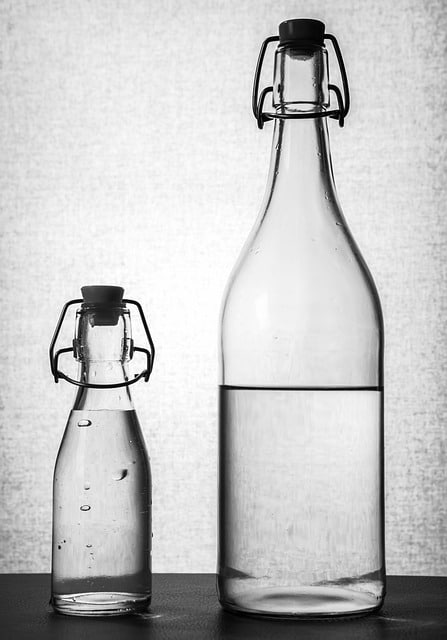
Having pets doesn’t mean you can’t save water. Check out these water-smart practices for pet owners.
70. Water Bowl Discipline
When changing your pet’s water, don’t simply toss the old water down the drain. Use it to water your plants instead.
71. Responsible Pet Bathing
When bathing your pet, use a low-flow showerhead and remember to plug the drain immediately. This reduces the amount of water needed to fill the tub.
72. Aquarium Water Recycling
When cleaning your fish tank, the water you remove can be used to water plants as it’s rich in nitrogen and phosphorus.
73. Choose the Right Pet Bathing Spot
If possible, bathe your pets outdoors in an area of your yard that needs water. That way, you’re accomplishing two tasks at once.
74. Reuse Pet Water
When changing your pet’s water, use the old water for your plants.
75. Efficient Pet Baths
Don’t leave the water running while bathing your pet. Wet your pet, turn off the water, lather up, then rinse quickly.
76. Use Biodegradable Poop Bags
Plastic bags can lead to water pollution. Choose biodegradable bags for pet waste to keep our waterways clean.
77. Opt for a Self-Filling Pet Water Bowl
Self-filling water bowls ( affiliate link) ensure your pet has enough water without the need for a continuously running faucet.
Water Conservation at Work
Our workplaces can also be a hot spot for unnecessary water use. But, with a bit of effort, we can make them water-efficient too.
78. Report Leaks
A small drip can waste 20 gallons of water a day. If you notice a leak at work, report it immediately.
79. Install Water-Saving Devices
Encourage your office management to install low-flow toilets and faucet aerators in restrooms. These can save a substantial amount of water.
80. Advocate for Water Conservation Policies
Raise awareness about water conservation at work and advocate for water-saving policies. Your initiative could inspire others and make a significant impact.
81. Only Use the Dishwasher for Full Loads
Just like at home, ensure the office dishwasher is only run when it’s fully loaded to maximize water efficiency.
82. Educate Employees
Educate your employees about the importance of water conservation and encourage them to use water wisely in the workplace.
83. Install Water-Saving Appliances
If possible, invest in water-efficient appliances such as high-efficiency toilets, faucets, and dishwashers for the office.
84. Encourage Reusable Water Bottles
Provide employees with reusable water bottles to reduce the usage of disposable cups.
85. Regular Maintenance Checks
Ensure the plumbing system is regularly checked and promptly repaired if leaks are found to prevent water wastage.
Efficient Water Use in Schools
Schools can play a crucial role in water conservation, both by reducing water usage on school premises and educating students about the importance of saving water.
86. Conduct Water Audits
Regular water audits can help identify areas of excessive water use and leaks that need to be fixed, helping the school save a significant amount of water.
87. Water Conservation Education
Incorporate water conservation into the curriculum. Educating students about water conservation from a young age can cultivate lifelong water-saving habits.
88. Rainwater Harvesting
Installing rainwater harvesting systems in schools can provide a hands-on learning experience for students while conserving a substantial amount of water.
89. Water Conservation Lessons
Include lessons about water conservation in the curriculum. Not only will this educate students, but they might also bring the lessons home to their families.
90. Use Drought-Tolerant Plants on School Grounds
When landscaping school grounds, use plants that are native and drought-tolerant. They require less water and maintenance.
91. Install Water Bottle Filling Stations
Encourage students to bring reusable water bottles and provide filling stations. This will reduce the usage of disposable cups and plastic water bottles.
92. Regular Checks for Leaks
Ensure regular maintenance checks for leaks in the school plumbing system and repair promptly if found.
93. Encourage Participation in Water Conservation Projects
Get students involved in water conservation projects. This could range from a school-wide water-saving challenge to building a rain garden or installing a rainwater collection system.
Water Conservation in the Agriculture Sector
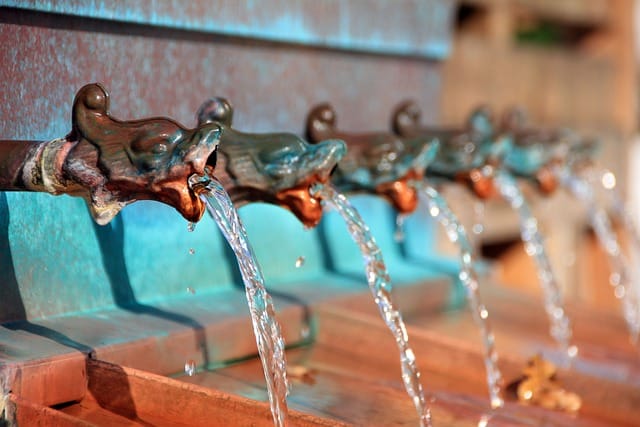
Farming and agriculture consume a significant amount of water, but there are methods to make these activities more water-efficient.
94. Implement Drip Irrigation
Drip irrigation is a highly efficient method that delivers water directly to a plant’s roots. This reduces evaporation and ensures that water goes where it’s needed most.
95. Practice Crop Rotation
Crop rotation can improve soil health, which in turn improves water retention, reducing the need for irrigation.
96. Use Mulch on Crops
Mulching helps retain moisture, control weeds, and improve soil health, all of which can reduce the need for irrigation.
97. Adopt Hydroponic Farming
Hydroponic farming can save a significant amount of water compared to traditional farming methods, as it recycles water.
98. Use Weather Forecasts for Irrigation
Farmers can use weather forecasts to plan their irrigation. If rain is predicted, they can postpone irrigation and let nature do the work.
99. Encourage Soil Health
Healthy soil retains water better and reduces runoff. Encourage soil health through organic farming practices and the use of cover crops.
100. Install Weather-Based Irrigation Controllers
These controllers adjust irrigation schedules based on local weather conditions, preventing unnecessary watering.
101. Use Efficient Irrigation Techniques
Techniques like furrow irrigation, terracing, and contour plowing can minimize water waste.
Conserving Water at the Community Level
Entire communities can work together to save water and promote water consciousness.
102. Organize Water Conservation Campaigns
Raise awareness about the importance of water conservation in your community through campaigns, workshops, and seminars.
103. Install Public Water Fountains
Public water fountains can reduce the consumption of bottled water, saving both water and plastic.
104. Community Rainwater Harvesting
Encourage the community to invest in rainwater harvesting systems. The collected water can be used for gardening, car washing, and even toilet flushing in community buildings.
105. Promote Water-Efficient Gardens
Organize programs to educate community members on how to create water-efficient gardens using native and drought-resistant plants.
106. Community Car Wash Fundraisers
If your community holds car wash fundraisers, use water-saving techniques like trigger nozzles and biodegradable soap that can safely be used on lawns.
107. Encourage Restaurants to Serve Water on Request Only
Many restaurants automatically serve water to all customers. Encouraging them to serve water only when requested can save a significant amount of water.
108. Create a Community Garden
A community garden with water-saving measures like drip irrigation and drought-tolerant plants can conserve water and create a shared space for residents.
109. Invest in Community-Wide Greywater Systems
These systems collect and treat greywater from multiple buildings, allowing it to be reused for non-drinking purposes.
Government Policies and Water Conservation
Government policies play a crucial role in water conservation, setting regulations and offering incentives for water-efficient practices.
110. Implement Water-Saving Regulations
Governments can enact policies that mandate the use of water-saving appliances and fixtures in new buildings and renovations.
111. Subsidies for Water Conservation
Governments can offer subsidies or tax breaks to individuals and companies that implement water-saving practices.
112. Efficient Irrigation Policies
Governments can enforce policies for more efficient irrigation systems in agricultural sectors.
113. Public Education Programs
Government-run education programs can raise awareness about water conservation and teach citizens how to save water.
114. Water Pricing
Proper water pricing that reflects the true cost of water can encourage more responsible usage.
115. Legislation for Water Pollution Control
Strict legislation and penalties for water pollution can protect our water resources, ensuring they are usable for the long term.

Conserving water is not just about implementing complex strategies. It’s about making minor changes in our daily lives, such as turning off the tap while brushing or using a rain barrel to water our plants.
With “115 Ways to Conserve Water – The Ultimate Guide” at your fingertips, you’re equipped with practical ways to make a significant difference.
Remember, every drop counts. Let’s make ours count for conservation!
- United States Environmental Protection Agency (EPA) – Water Conservation Tips
- United Nations (UN) – Water Conservation
- United States Department of Agriculture (USDA) – Irrigation and Water Use
- The World Bank – Water Conservation in Agriculture
- National Geographic – Water Conservation
- The Nature Conservancy – Water Conservation
- Water Research Foundation – Residential End Uses of Water
- World Health Organization (WHO) – Water Sanitation Hygiene
I’m Thomas, the owner of SustainableWave. Passionately promoting a sustainable planet. With experience in various eco-roles, I’ll share green tips, sustainability hacks, and personal eco-journeys on my blog.
Similar Posts
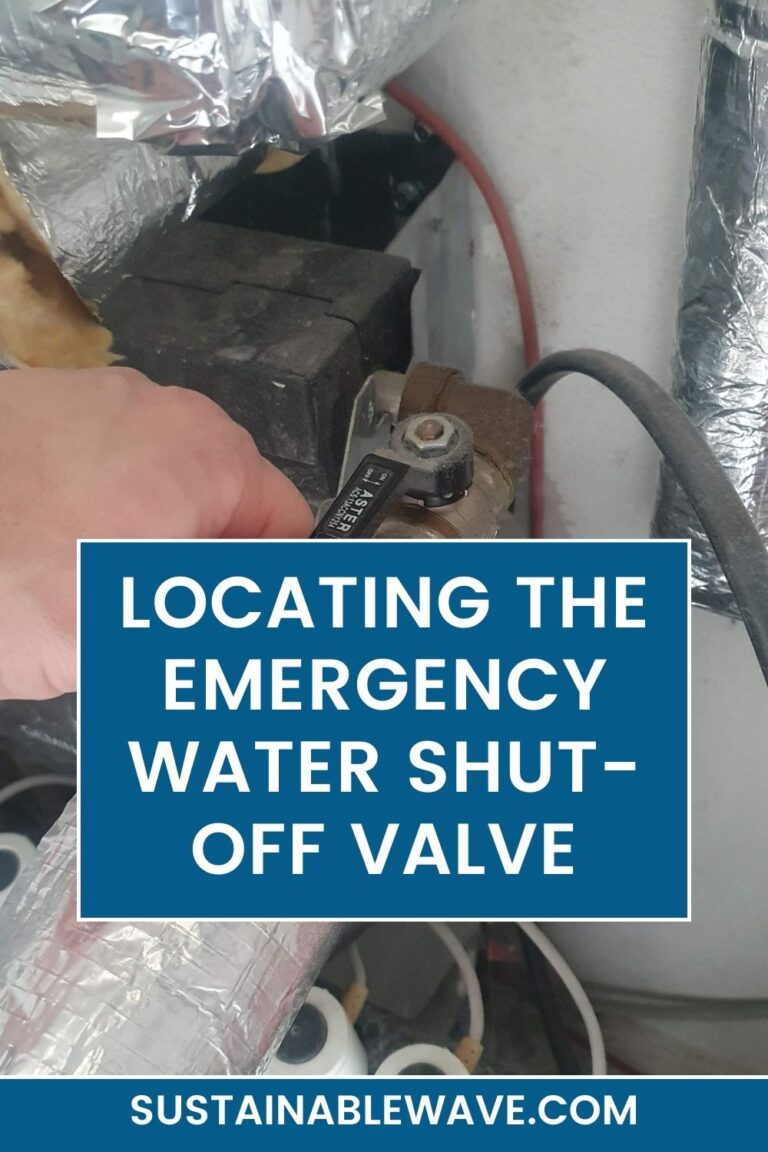
Emergency Water Shut-Off – How to Quickly Locate the Valve
Water emergencies can happen without warning, and knowing how to quickly shut off your water supply can mean the…
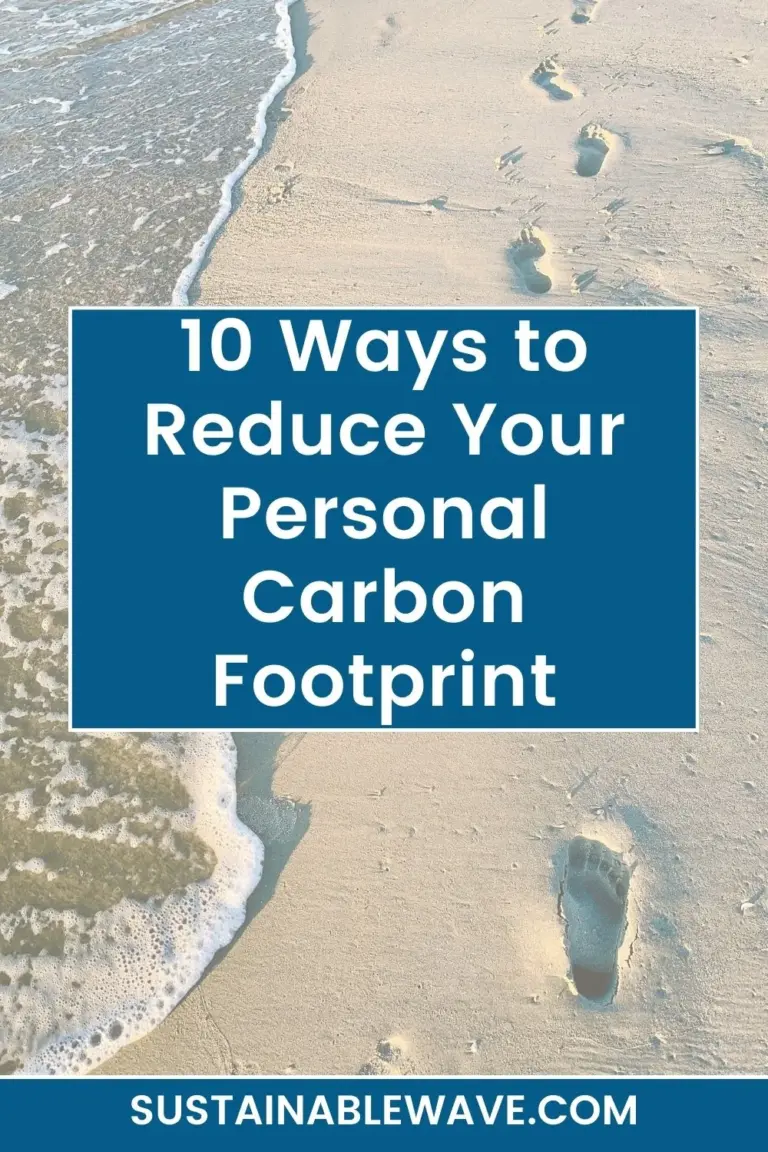
10 Ways to Reduce Your Personal Carbon Footprint
With the looming threat of climate change, many individuals are taking it upon themselves to make eco-friendly choices. But…

12 Sustainable Actions You Can Start Today
In today’s rapidly changing world, the importance of sustainable actions cannot be overstated. As we face environmental crises, adopting…

How to Stay Motivated in Fighting Climate Change
In an era where the drumbeat of negative climate news seems relentless, maintaining the momentum to fight climate change…
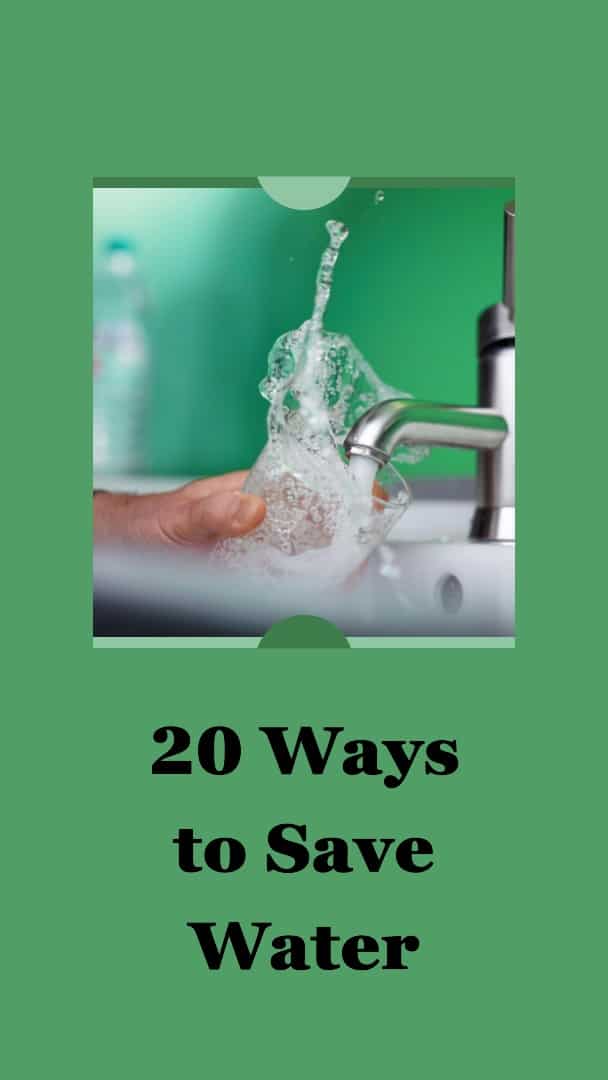
What Are 20 Ways to Save Water
Water, the lifeblood of our planet, is rapidly becoming a scarce resource. While the statistics are alarming, the solution…

Rain Gardens – The Complete 2024 Guide
Dive into the fascinating world of rain gardens with our comprehensive guide. Discover how these eco-friendly landscaping features can…
- 2024 BOAT BUYERS GUIDE
- SWS ADVENTURES
- Email Newsletters
- Fishing Boat Reviews
- Fly Fishing
- Marine Electronics
- Fishing Tackle
- Fishing Destinations
- The Bahamas Fishing Guide
- Boating Safety

Seven Tips for Cleaning Your Boat
- By Alan Jones
- July 15, 2024
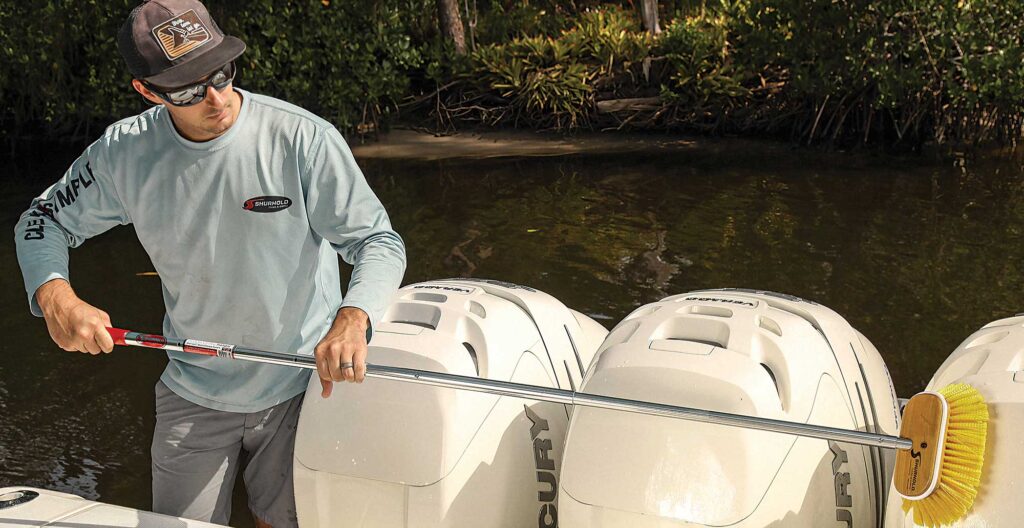
Everyone wants a clean boat, but using the wrong technique or cleaning product can cause damage. One of the purposes of cleaning a boat is to protect your investment, and sometimes good old elbow grease is better than using more extreme methods that might be faster but harmful. Here are seven no-nos of boat cleaning.
Waiting Too Long
Stains from fish blood allowed to dry can be challenging to remove. When the fish are biting, it’s easy to forget to stay on top of the blood and gruel that can accumulate. Whenever you gaff a fish or land one that’s badly hooked, take a few seconds to spray any blood with the raw-water washdown. The same goes for any nastiness left over when using cut bait. Hose it down and scrub it quickly while still on the water.
When you get in, start with a quick freshwater prewash rinse. Then, in sections, first start at the top and work down to the deck using a foam cannon to disperse the suds evenly, then scrub with a boat-washing mitt or a soft-bristle brush. If you use a bucket, get one with a raised grate at the bottom so dirt and sand particles can fall to the bottom and won’t cling to the mitt or brush when it’s dipped in the sudsy water. Next, thoroughly rinse the boat with fresh water. Wipe down with a chamois, faux-chamois or clean microfiber towel to prevent hard-water spots.
Harsh Chemicals
Household cleaners with alcohol, ammonia or petroleum products can harm many different surfaces on a boat. Professionals sometimes use chemicals like citric acid, oxalic acid or even muriatic acid for extreme situations, but these chemicals can be dangerous and destructive to boat finishes in the hands of untrained or inexperienced individuals. When washing the boat, it’s better to stick to gentle solutions before turning to harsh chemicals. For example, use a quality boat-specific product like Star brite Boat Wash or Meguiar’s Boat Wash instead of a degreaser soap like Dawn, which can strip away protective wax. For nonskid surfaces, use Star brite Deck Cleaner.
Abrasive Scrubbers
While Scotch-Brite pads and melamine foam sponge products like Magic Erasers are effective for removing scuff marks and tough stains, they are abrasive and can scratch gelcoat and surfaces such as powder coating. Brushes with white bristles are usually the stiffest and can also scratch gelcoat. They are more appropriate for nonskid cockpit soles and below-the-waterline issues like algae buildup. Employ a boat brush with medium-stiff bristles for light cleanups on nonskid and a soft-bristle brush for upholstery and shiny gelcoat surfaces. For small marks, try scraping them with a fingernail. When cleaning electronic displays, use a screen-specific product instead of a glass cleaner containing ammonia or vinegar, then dry with a clean microfiber cloth instead of a scratchy paper towel.
High-Pressure Washer
Don’t use a pressure washer on upholstery, coaming pads, Bimini tops, electronics or closed-foam EVA nonskid deck material (like SeaDek). The same goes for using high pressure to blast fiberglass, which can remove protective wax and even peel off the gelcoat in weak or thin spots. If you use a pressure washer for areas like the nonskid deck surface, choose a lower-pressure model (2,000 psi and under) and select a wide-tip nozzle labeled “safe for cars.”
For upholstery and coaming pads, start with a freshwater rinse, then apply soap with a suds gun and gently scrub it with a soft-bristle brush or boat-washing mitt. Rinse with fresh water.
Never use detergent soap on Bimini tops or other canvas. Even though some fabric companies recommend using diluted bleach for mildew and mold, according to Canvas Works, a top Bimini builder, it can weaken the thread used to stitch it together.
Closed-cell EVA foam flooring is comfortable, but easily picks up hard-to-remove marks and stains. The sooner you can tackle a stain, the better. If cleaning with boat soap and a medium-bristle brush doesn’t work, use a product-specific cleaner like Dek Magic from SeaDek. Spray it generously on the stained areas and work it in with that medium-bristle brush. Then let it sit for five minutes before rinsing. Make sure the deck is dry before covering your boat.
Read Next: Boat Trailer Maintenance Tips
Waiting to Flush
Many boat owners think you have to flush a boat motor with the engine running, but most modern outboard builders don’t require or recommend it.
Crack open your trusty owner’s manual to find the correct flushing procedure for your model. If you flush it while the motor is running, never rev the engine. Always ensure it’s getting the proper water flow. Whatever the procedure, do it as soon as possible after every trip to prevent the buildup of salt in the cooling water passages inside the engine and exhaust.
On the outside, newer outboard engines have a protective acrylic urethane clear coat that can be damaged by high-pressure sprayers or brush bristles that are too stiff. Use the blue brush or the boat-washing mitt for the exterior, along with regular boat soap. When applying marine wax, don’t forget the outboards as well as the boat.
Using a Regular Towel
While a regular cotton beach towel is fine for drying seats, the towel’s fibers can scratch gelcoat, acrylic windshields, and transparent flexible materials such as clear vinyl. The best tools for drying are waffle-weave microfiber towels, natural chamois or synthetic chamois.
Another option is to use a leaf blower to dry -surfaces. Hard-water spots can be prevented by using a deionized water-treatment system. Dockside units can cost more than $6,500, but portable units for smaller boats cost around $500. When using them to rinse your boat, no drying is really needed.
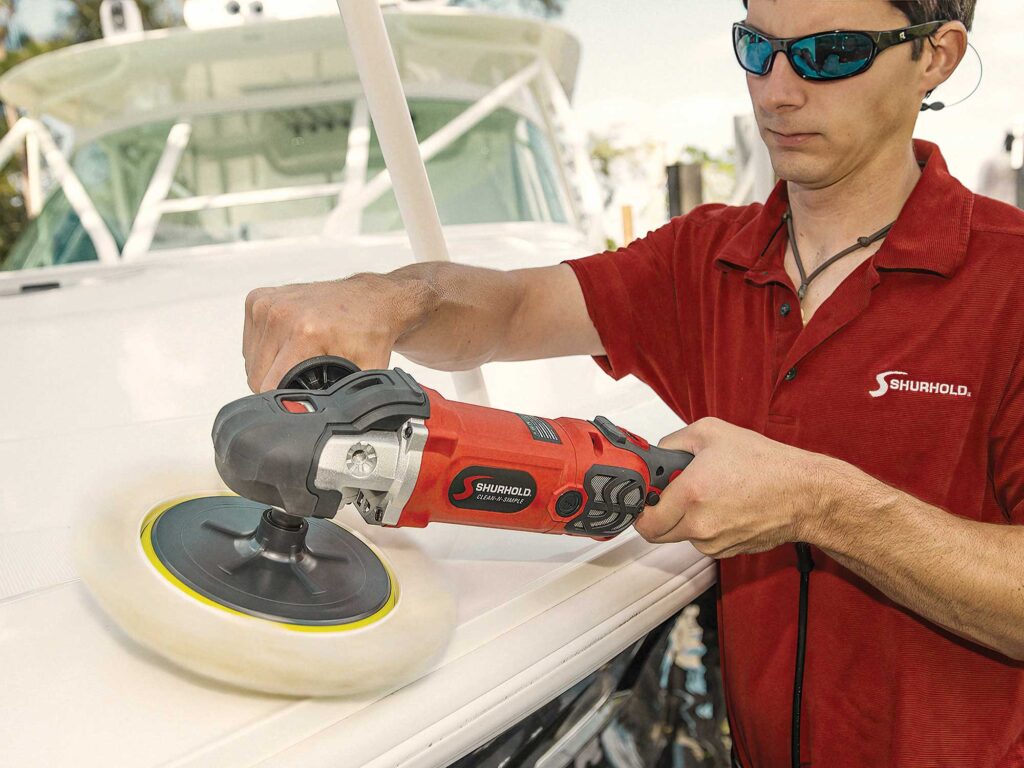
Failing to Apply Wax
You should wax your boat at least once or twice a year to help it repel water and protect the gelcoat from UV damage and fading. Start with a thorough cleaning. Several products work well, like Meguiar’s Premium Marine Wax, 3M Perfect-It Boat Wax and, for older boats, Star brite Premium Restorer Wax. Shurhold’s random orbital dual-action buffer polisher reduces the manual labor needed and eliminates the swirly marks that some buffers can leave behind.
Cleaning your boat without doing damage is the goal, and by avoiding these seven no-nos, it will look like new for years.
- More: August/September 2024 , Boat Maintenance , How-To
- More How To

How to Prepare for Long-Range Fishing Expeditions

Recreational Fishing as a Catalyst for Conservation

Cast a Wide Net

Is Bigger Better?

Yo-Zuri Unveils Highly Anticipated Lure Colors for Snook and Striped Bass Anglers at ICAST 2024

EdgeWater 208CC Watchman

- Digital Edition
- Customer Service
- Privacy Policy
- Cruising World
- Sailing World
- Salt Water Sportsman
- Sport Fishing
- Wakeboarding

- SUBSCRIBE TO EMAIL
- Weather
Search location by ZIP code
High water keeps special boone county search and rescue team busy this summer.
- Copy Link Copy {copyShortcut} to copy Link copied!

GET LOCAL BREAKING NEWS ALERTS
The latest breaking updates, delivered straight to your email inbox.
The Boone County sheriff says the county’s rare search and rescue team is paying off this summer.
More people are getting into trouble on the swollen Des Moines River .
The team is specially trained to deal with any emergency on the water or in remote areas in Boone County.
“It's important that when we have those situations that we are able to respond,” said Boone County Sheriff Andy Godzicki.
Godzicki takes pride in his team of 18 peace officers and civilians.
“It takes a special effort. It takes a lot of specialized equipment, and it takes a special team in order to do that,” said Godzicki.
They launched one of their rescue boats to show us how they work. Team members receive training in rescue work, boat operations, sonar and more. The boat comes equipped with lights and siren, along with GPS. It has a special engine that works more like a jet, without a propeller to snag anything. And the bottom of the boat is nearly flat.
“I personally have utilized this boat in 8 to 10 inches of water. So, we can get to someone faster by water, even when we don't have much of it,” said Search and Rescue Commander Seth McCrey.

Calls for help usually come from 911.
“Eventually, when they get cell coverage, they will call for help. And it's important that we are able to get down there quickly and get these people pulled out of the water,” said Godzicki.
The rescue team has been busy with more boats than usual now that high water is attracting visitors from as far south as Saylorville Lake.
Rescuing trapped boaters or other victims always comes with its own reward.
“Pulling someone to safety. Just the look on their face and the gratitude at the end of it is more than payment,” said McCrey.
Eventually, the sheriff would like to install mile makers along the river, so that boaters know where they are and rescue teams can get to them faster.

Dramatic, life-saving rescue in Destin after a boat with five aboard capsized in the Gulf

It was a matter of teamwork as members of the Destin Fire Control District were able to aid in the rescue of five people from an overturned boat just outside the pass in Destin.
On July 5, five members of the Destin Fire Control District responded and plucked three from the water and pulled two out from under about a recreational boat, successfully.
Everybody had a part to play. Here is what transpired:
Fire district boat operator Britt Clark heard a call go out on Channel 16 about 6 p.m. from the fishing boat New Florida Girl’s American Spirit saying they had just witnessed a vessel overturn.
“They were trying to talk to the Coast Guard ... we just heard the message, along with FWC and the sheriff's office,” Clark said.
“We immediately started heading out the pass and saw the vessel upside down ... it was really rough,” he said.
More local coverage: Destin Fire Control District honors its firefighters and lifeguards for service
Clark said they saw a sheriff's office boat already there, but they were not able to get close to the capsized vessel due to the conditions.
“We had to sit at the mouth of the pass and wait for really big waves to pass ... then we made our way,” he said.
In the meantime, a couple of fire and rescue guys on jet skis were able to get out and start assisting immediately.
The arrival
Kyle Armer and Seth Menzer, both with the fire district, were able to get close with the rescue skis.
“When we got there the boat was fully flipped over ... it was a pretty big boat,” Armer said about the 30-footer.
One of the victims had been picked up by a random person with a jet ski, and there were still two in the water.
"There was one person still in the water and one gentleman was trying to get back on top of the overturned boat,” Menzer said.
“When I got there, I locked in on the guy who was on top of the boat,” Menzer said. He swung his ski around to him and backed up to him.
“He kept saying he wanted to go get the people under the boat,” Menzer said.
At that point, the fire rescue men became aware there were two people under the boat. They had life jackets, but one of them could not swim.
“The two gentlemen on the ski started yelling ... my wife's under there, my wife's under there ... she can’t swim,” Clark said.
At that point they started getting the guys from the skis to the fireboat.
“We did not know if they were unconscious or unresponsive, knocked out. Why are they still under the boat ... a lot of unknowns,” Clark said.
It was at that point, Joel Jopling, a lifeguard with Destin Beach Safety, part of the Destin Fire Control District, showed up on the scene.
Jopling said he was staffing Harbor 9 station near the jetties when he heard the call go out.
“I immediately started making my way out,” Jopling said.
Jopling arrived not long after the two firemen on skis and was told there were at least two under the boat.
“There was a lot of maneuvering during the whole operation, because the surf was big ... 6- to 7-footers,” Jopling said.
'A pretty uneventful 4th of July': Destin's beach safety director reflects on holiday activity
“We were in a shallow area where the waves were just breaking really bad,” Clark said.
“Waves were just breaking all over us,” Jopling said, noting it was the weekend that Hurricane Beryl was stirring up the Gulf of Mexico.
“Immediately it became evident that I was getting in the water. Somebody had to get in there ... I did what I was trained to do,” Jopling said.
Jopling put on his fins, grabbed a dive mask, tied his ski off to the fireboat, and swam to the overturned vessel.
Once he got to the boat, he quickly assessed things.
“I put my head underneath the water, seeing as best I could,” he said, noting the water was brackish.
“But I was able to see there was an air bubble inside,” he said.
Jopling said he came back out, caught his breath, and went back down.
“I wanted to get as good a feel of the dynamics of the boat as I could, because it was all unknown,” he said, noting there could be fishing lines or anchor lines in the way.
“I went under and saw a lady's foot somewhere in the vicinity of the air bubble,” Jopling said.
“I came back out got a good breath and went subsurface ... reached out and grabbed the victim's arm and was able to pull her out,” he said, noting her head was up in the air bubble.
He handed her off to the firefighter on the skis then swam back down to get the other female.
“I actually didn’t see her until I got inside. I grabbed her but I didn’t feel any response like I did the first victim. We pulled her out and she was teetering on the edge of consciousness,” Jopling said.
“She was breathing, but wasn’t very responsive. We were taking on waves ... we got her on the fireboat and the paramedics did what they needed to do,” Jopling said.
The recovery
Geoffrey Duplessis, first mate on the fireboat and paramedic, said the second female was talking but she was very lethargic.
“I had her laying on the deck of the boat ... the waves were really pushing and coming in on the boat,” Duplessis said as they headed towards the Coast Guard station.
“I got down on the deck and kind of propped her on me so she would be in a sitting position, more able to breathe. I kept her talking to me the whole way to the Coast Guard station,” Duplessis said, noting he was trying to keep her mind focused on staying awake.
Duplessis said the first female didn’t take in any water while under the boat; however, the second one said she had taken in two or three breaths of water.
“You could tell she had fluid in her lungs,” he said.
“But she was talking to me the whole time, from when we transferred her to EMS at the Coast Guard station,” Duplessis said.
Duplessis explained the first female was the one who had found the air pocket under the boat.
“We’re going to stay in this air pocket until someone comes and saves us,” she told Duplessis.
The outcome
"Huge props to the American Spirit for calling it in when they did,” Clark said.
“They were in the right place at the right time. If they had not made the call when they did ... we might not have had the favorable outcome that we did,” he added.
Between the time the American Spirit called, and the fireboat arrived at the scene was about two to three minutes. Within five minutes the females were out from under the boat.
“Everybody did their part ... pretty good synergy,” Jopling said.
“Everybody played their role,” Clark reiterated.
- Cover Letters
- Jobs I've Applied To
- Saved Searches
- Subscriptions
Marine Corps
Coast guard.
- Space Force
- Military Podcasts
- Benefits Home
- Military Pay and Money
- Veteran Health Care
- VA eBenefits
- Veteran Job Search
- Military Skills Translator
- Upload Your Resume
- Veteran Employment Project
- Vet Friendly Employers
- Career Advice
- Military Life Home
- Military Trivia Game
- Veterans Day
- Spouse & Family
- Military History
- Discounts Home
- Featured Discounts
- Veterans Day Restaurant Discounts
- Electronics
- Join the Military Home
- Contact a Recruiter
- Military Fitness
- Coast Guard Rescue Swimmer Honored for Saving 3 Imperiled Sailors in Alaska

The video doesn't do justice to the heroic rescue of three mariners Jan. 9 off Khaz Point, Alaska, in 15-foot seas, 35-degree water temperatures and a capsized boat heading dangerously toward shore.
Into the maelstrom jumped Aviation Survival Technician 2nd Class Aaron Mulkey, a veteran Coast Guard rescue swimmer facing a series of critical decisions to ensure that everyone would make it out alive.
For his actions that evening, Mulkey has been named the Armed Services YMCA Angels of the Battlefield Award recipient for 2024 for the Coast Guard and will be nominated for the Department of Homeland Security's Lifesaving Award.
Read Next: New Research Finds Blood Cancer Cases at Malmstrom Air Force Base Likely Not 'Due to Chance'
According to his nomination for the Angels of the Battlefield Award by Cmdr. Rand Semke, commander of Air Station Sitka, so much could have gone wrong with the rescue.
On that night, the Coast Guard received an SOS alert from an iPhone on a capsized catamaran with three people aboard, including one who was critically injured. The distress signal was faint but urgent, and air response was dispatched within 17 minutes.
When the boat was finally spotted, it was drifting toward an inhospitable coastline, requiring immediate rescue. Mulkey was put in the water, where he swam toward the vessel, timing the waves and maneuvering through currents to reach the boat. The plan was to retrieve the three using a rescue basket, and Mulkey swam to it with the most injured victim.
But the conditions were too violent for that method of extraction. Mulkey then swam the injured sailor back to the overturned hull and used a sling to hoist them to the helicopter above, holding the sailor's bleeding head gently during the ride up. Once the survivor was put into the helicopter, he performed the maneuver two more times, plucking the remaining two victims from the roiling ocean to safety.
His job wasn't over, however. Once he was in the helicopter, he administered medical aid to the boaters, treating them for hypothermia and the severe head injuries.
According to the award write-up, Mulkey's actions epitomize "the utmost ideals of courage and selfless service," Semke wrote.
"AST2 Mulkey's steadfast commitment to duty and unmatched skill in the face of adversity served as a beacon of hope and assurance to the three survivors that fateful evening," Semke said.
The Angels of the Battlefield honor is given each year to an enlisted medical professional in each of the armed services' medical branches.
The recipients for the Army , Navy and Air Force , as well as the Defense Health Agency, will be announced in the coming weeks, according to an Armed Forces YMCA spokeswoman.
But the Coast Guard proudly issued a servicewide message about Mulkey's award nearly as soon as the service found out on July 2.
"AST2 Mulkey's actions were extraordinarily heroic, brought great credit upon the Coast Guard, and highly merit this year's recognition as the Coast Guard's 2024 Armed Services YMCA Angel of the Battlefield. Bravo zulu for a job very well done," wrote U.S. Public Health Service Rear Adm. Shane Steiner, executive director of health services for the Coast Guard.
An event to bestow the honors is scheduled for October.
Related: Coast Guard Rescues 4 Found Clinging to Hull of Overturned Boat Off New Jersey
Patricia Kime

You May Also Like

The announcement followed a landmark Supreme Court order for young religious men to begin enlisting for military service.

"The reason the Guard exists is to fight and win our nation's wars, period," Gen. Daniel Hokanson, the National Guard's top...

The VA said it is working with the White House and Congress to address the budget shortfalls in a way that doesn't harm...

Former Defense Secretary Mark Esper, one of the Trump administration officials under constant security because of Iranian...
Military News
- Investigations and Features
- Military Opinion
Select Service
- National Guard
Most Popular Military News

Vance, 39, is the first post-9/11 veteran to find a spot on a major party ticket and, if elected, would likely be the first...

Republicans have blamed wokeness for the military's ongoing struggles with recruiting and the American public's declining...

A New York Times investigation found that ammunition from a plant in Missouri has been used in at least 12 high-profile mass...

As a result of quick thinking and extreme bravery, three mariners survived the capsizing of their boat in 35-degree water.

David Dutch is a Marine Corps veteran who served during the Gulf War, according to his service record, which was provided to...
Latest Benefits Info
- Servicemembers' Group Life Insurance (SGLI): What You Need to Know
- Military Retirement and State Income Tax
- The Personally Procured Move (PPM): Steps to Take
- Checklists for Your PCS Move
- Deployment: Medical Benefits
More Military Headlines

The Air Force has approved 78 jobs to receive special duty assignment pay for 2025, an increase from the 70 for 2024, but...

The legislation fully repeals all changes made to the military tuition program in the budget document, and adds $90 million...

Meg Kabat worked for the Department of the Navy and played pivotal roles in the VA's Caregiver Support Program Office for...
- 'At What Cost': Guard Chief Argues Border Mission Is Getting in the Way of Warfighting
- US Army Honors Nisei Combat Unit that Helped Liberate Tuscany from Nazi-Fascist Forces in WWII
- The Gaza Aid Pier Is Officially Dead After Being Removed over Weather for a Fourth Time
- Here Are the Air Force's Toughest Jobs That Earn a Bonus, But the Service Won't Explain Planned Cuts
- Sam Kulasingam Ready to Report to Kansas City Royals Following Stellar Air Force Career
- Pentagon Leaker Jack Teixeira to Face a Military Court-Martial, Air Force Says
- A Bribery Scheme Abusing a Program for Afghan Allies Ends with a Conviction for a Navy Commander
- Navy Exonerates 256 Black Sailors Unjustly Punished in 1944 After a Deadly California Port Explosion
- Disaster Response Training at RIMPAC in Hawaii Grows
Military Benefits Updates
- The Next Deadline for Backdated PACT Act Payments Is Coming Soon. Here’s What You Need to Know
- VA Fertility Benefits for Military Veterans
- Virginia Veterans Rally the Troops, State Leaders in Support of Education Benefits
- Appeals Court Voids Marine's Adoption of Afghan Orphan; Child's Fate Remains in Limbo
- JD Vance's Marine Corps Service Would Set Him Apart from Most Vice Presidents
- Marine Veteran of Gulf War Identified as Rallygoer Seriously Injured in Trump Assassination Attempt
- Barstool Sports Founder Dave Portnoy Rescued by Coast Guard While Taking Mom out to Sea
Entertainment
- 'The Last Front' Is Basically 'Die Hard' Set in World War I Europe
- TV Actor James Sikking Channeled His Drill Sergeant to Create His Most Memorable Character
- Why No One Could Capture the Experience of Junior Enlisted Marines Like 'Generation Kill' Author Evan Wright
7 Easy Ways to Reuse Water This Summer You Can Do Right Now
:max_bytes(150000):strip_icc():format(webp)/BIO-7512aa7977bc46d2bee27b16df2abfc7.jpeg)
JJ Gouin / Getty Images
When summers get hot and dry, it becomes more and more important to find new creative ways to reuse water in and around your home. Luckily there are easy ways to conserve your water both indoors and in your garden, and we've have got you covered with these seven easy tips that you can actually start using today.
Collect Shower Water
Showers are one of the main ways to reuse your water, and it's easy as pie. While you wait for your shower to heat up, simply place a large bucket underneath your shower head. This will collect all of the unused cold water that you're used to wasting.
You can also collect shower water why you are showering, as long as you're using all natural products. Reuse this shower water to water houseplants and more.
Want more cleaning and organizing tips? Sign up for our free daily newsletter for the latest hacks, expert advice, and more!
Reuse Pasta Water
If you're like me and boil a lot of pasta, you are likely wasting a lot of that water once your meal is ready. So, next time you're making your favorite pasta dish, save all of that water for other purposes.
As always, you can use this water to water your indoor and outdoor plants . You can also use this water to wash your dishes, instead of running your sink excessively. Or, use this water the next time you need to boil anything.
Use Leftover Ice
While ice is usually used for cooling down drinks, you can use leftover ice to cut down on water waste. If you find that you have a lot of leftover ice, you can put the cubes into your pet's water bowl. Is your lawn looking dry ? Scatter your leftover ice wherever your lawn is patchy or looking parched, or where your plants need an extra boost.
Install a Rain Barrel
A rain barrel collects runoff rain water from your home's gutter system and it's fairly easy to install. First, choose where you want to put it. Make sure to secure it on the ground so it won't ever tip over. And finally, make sure your downspout directly connects to your barrel. This will ensure that all of the rain water will drain into your barrel.
Once your rain barrel fills up after a day or evening of rain, you can use this water for your yard, your indoor plants, or even to wash your car.
Reuse Water From Old Bottled Water
It's way too common, at least for me, to leave leftover water bottles on my nightstand or in my car. Luckily, you can reuse this water instead of absentmindedly dumping your water in your kitchen sink.
You can use this water from the tips mentioned above, or get even more creative. I personally like to use my leftover water bottles for mopping and cleaning my home.
Recycle Pool Water
Pools aren't just for cooling down anymore. In this summer heat, you might have an inflatable pool for your backyard, one for your dog, or if you're really lucky, you have a in-ground pool.
No matter what kind of pool you have, you don't have to drain the water out anymore. Use your old pool water for your lawn and garden, for cleaning, and even for washing produce. Just make sure to give it a good rinse before using.
Install a Gray Water Collection System
With the help from your local plumber, you can easily install a gray water collection system. This clever system takes unused water from your bathrooms, sinks, laundry units and supplies it to your lawn. This wastewater can of course be used for your garden, indoor plants, and food crops.
More from The Spruce
- Should You Reuse Pasta Water for Your Plants? Here's What the Pros Say
- 7 Things That Are Totally Fine to Put Down Your Garbage Disposal, We Promise
- Why Is My Grass Turning Yellow? We Share the Culprit (and How to Fix It)
- A Beginner's Guide to Harvesting Rainwater
- The 9 Best Rain Barrels of 2024, Tested and Reviewed
- How to Build a Water Garden Stocked Full of Fish and Plants
- How to Prepare Your Lawn for Flooding and Help It Bounce Back
- 12 DIY Yard Drainage Methods
- The Best Shower Filters We've Found Online For You
- 7 Expert-Approved Hacks to Keep Your Home Free of Pests All Summer Long
- 10 Ways to Increase Water Pressure in a Shower
- How to Clean a Shower Head Quickly and Efficiently in 6 Simple Steps
- 11 Creative Ways to Reuse Laundry Dryer Lint
- The 7 Best Water Testing Kits of 2024
- How to Naturally Get Rid of Mushrooms in Your Yard
- Removing Standing Water From a Yard
- Search Please fill out this field.
- Manage Your Subscription
- Give a Gift Subscription
- Newsletters
- Sweepstakes
:max_bytes(150000):strip_icc():format(webp)/courtany-dobson-co-parneting-071024-2a-e51e8dcccf0f4bbe8460b5a0cde57ff6.jpg)
- Human Interest
- Real People
- Real People Tragedy
Dad, 41, Dies After Saving 2 Kids from the Mississippi River: ‘True Hero’
"He was my rock and did so much for anyone and everyone he knew," said Cody Jay Pope's partner, Cheryl Holzknecht
Cody Pope/Facebook
The body of a 41-year-old Minnesota father has been found days after he rescued his kids from the Mississippi River, authorities said.
The Sherburne County Sheriff's Office identified the victim as Cody Jay Pope in a Facebook post on Sunday, July 14.
Authorities said Pope and his two kids were swimming on a sandbar in the water at Rivers Edge Commons in Elk River on Friday, July 12, when the two children began to "struggle in the current."
In a GoFundMe fundraiser , a family member said Pope had taken his daughter and son "to the river to frolic in the water on an extremely hot day."
Pope "grabbed onto one of the juveniles and was able to get her to the sandbar," the sheriff's office said. "[He] then jumped in to assist the other juvenile. [Pope] was able to support the second juvenile in the water for a short time and push that child to shore before the adult disappeared under the water."
Never miss a story — sign up for PEOPLE's free daily newsletter to stay up-to-date on the best of what PEOPLE has to offer, from celebrity news to compelling human interest stories.
Elk River firefighters and police rescued the child from the water. "The children told firefighters and police officers that their dad was missing," authorities said.
Marianne Jackson told Fox affiliate KMSP-TV that she watched the terrifying incident unfold.
"It was just awful," she added. "I was shaking by the time this thing was over, because this poor little child, she was watching her dad."
After two days of searching, the sheriff's office said in an update on July 14 that the Wright County Water Patrol retrieved Pope's body near Oliver Kelley Farm around 9:40 a.m. local time.
Pope's partner Cheryl Holzknecht said in a Facebook post on July 14 that she will "spend the rest of my life missing Cody."
"He was an amazing daddy and a true hero in his last moments," she added. "I don’t know how I will make it without him, he was my rock and did so much for anyone and everyone he knew."
Related Articles
Elyria water customers asked to conserve due to power issue at water plant

LORAIN COUNTY, Ohio (WOIO) - The Lorain County Emergency Management Agency has asked Elyria water customers to reduce their non-essential water usage due to power issues at the water plant.
LCEMA said customers may experience lower-than-normal water pressure until the problem is resolved.
Non-essential water usage subject to mandatory restrictions includes:
• Irrigation of lawns using sprinklers or automated irrigation systems
• Filling of swimming pools, washing of exterior building surfaces, parking lots, driveways, or sidewalks
• Washing of vehicles
• Operation of ornamental fountains
• Washing clothes, running dishwasher
• Any other use deemed non-essential by the Water Department
Power crews are currently at the plant working on the problem.
When the issue is fixed a notification will be given rescinding this restriction.
For more information, please contact Chris Pyanowski, Elyria Safety Service Director at 440- 865-3796 or [email protected] .
Copyright 2024 WOIO. All rights reserved.

Cuyahoga Falls husband accused of killing wife takes own life

11-year-old dies after being pulled from Lake Erie

FBI names suspect in assassination attempt on Trump that left former president injured

Sheriff fatally shoots woman outside Medina County Sheriff’s Office

Suspected drunk driver dies in Geauga County crash: OSHP

North Olmsted mom furious after toddler found in middle of busy road while at daycare

Shannen Doherty, ‘Beverly Hills, 90210’ star, dies at 53

Father may have been distracted by PlayStation when toddler died in hot car
Latest news.

Enrique Freeman’s unlikely journey to the NBA

Enrique Freeman's unlikely journey to the NBA

Infant badly injured during crash in Cleveland’s St Clair-Superior neighborhood

Frontier Airlines experiencing computer issues may impact flights

Ohio man sues city, county for wrongful murder conviction

Man takes off during OSHP traffic stop, crashes into car and rolls over

Odds Stefanski is first coach canned? Higher than you’d think

Mark Schwab on Stefanski 7-18-24

IMAGES
VIDEO
COMMENTS
8 Tips to conserving Fresh Water on your Sailboat. It's always great to be conserving freshwater on your boat and these tips from the blog Sailing Chance were too good not to share! When out Sailing for a long period of time freshwater can be scarce to come by. You can only hold so much and once it's out you have to figure out how to get more.
How to Conserve Water on a Charter Sailboat Hygeine. When washing hands and face and brushing teeth, open the tap just enough to allow a trickle from the faucet. It may take a bit longer, but you'll use a lot less water to get the job done. Rinse toothbrushes in a cup with a small amount of drinking water.
Spray away. For general cleaning, mix 1 part vinegar to 3 parts water in a spray bottle and wipe down surfaces with rags (which you can later launder at home or the marina). This solution should take care of most general cleaning on board and eliminate the need to soak and clean a sponge. Use a half-gallon tank sprayer.
Here are four easy ways to significantly cut down on the water you use - without sacrificing too much. 1. Use a Foot Pump. If you have a foot pump, turn off your pressure water except for times when you're filling a large container. With pressure water, you waste some every time you turn the water on and off. And since most foot pumps put ...
As mentioned, resource management is a critical aspect of daily sailboat life, especially when it comes to conserving water, fuel, and electricity. Efficient use of these resources is vital, whether it involves careful water usage, monitoring power consumption, or planning the next opportunity to resupply.
Even if they have a watermaker, most cruisers find they need to conserve water. Here are four easy ways to significantly cut down on the water you use - without sacrificing too much. 1. Use a Foot Pump. If you have a foot pump, turn off your pressure water except for times when you're filling a large container.
This gave us a great adjustment period to start tracking our water usage and get some ideas of how we can conserve water on a boat. While living at a marina with an unlimited water supply, we went through all 3 of our boat fresh water tanks, 193 gallons in total, each week on our 1998 Hunter 450 Passage. That's an average of approximately 27. ...
Pressurized sprayer (Amazon) Solar shower (Amazon) Cabinet mount galley foot pump (Affiliate) Prefer to Read? Check out 4 Easy Ways to Conserve Water. Today's episode of The Boat Galley Podcast is sponsored by MyIslandWifi, your go to source for secure Bahamas internet. Planning on a visit to the Bahamas and wanting the security of unlimited ...
Usage and conservation of water for sailing Being frugal with water becomes second nature to most cruisers. The majority of respondents said their crew only showered every three days, 12 every two ...
When you're cruising, and the boat is off the dock, conserving water is a constant challenge. From showering to washing dishes and even flushing the toilet - it's an ongoing battle trying to save water on a boat. So much so that even the saltiest sailors say they would consider buying a watermaker for their boat.
Sailboat living requires constant boat maintenance, learning to conserve water, and knowledge of cooking onboard. Here are 7 crucial boat life tips that can lead to easier living on a boat. When we decided to pursue boat life, there was a steep learning curve. Especially with no prior experience owning, living on, or sailing a boat.
Living on a sailboat requires careful consideration of water supply and conservation. Water supply and conservation are crucial factors to keep in mind when living on a sailboat. Here are some important factors to consider in order to prioritize water supply and conservation: 1. Water storage: Sailboats have limited space, so it is important to ...
Water conservation is key on a boat. Here are some tips for keeping water use down when washing dishes. 🎧The Role of Water in Provisioning. Published on October 27, 2023; last updated on October 22, 2023 by Carolyn Shearlock.
One of the major differences between life on land and on a sailboat is how I treat water. Saving water on a sailboat is standard practice. Suddenly, water went from being something I was entitled to, to something extremely precious and important. Adam's work for a company called Hero Labs, that is producing leak detecting services, has caused ...
Conservation is key to a convenient and clean life on a sailboat. You may have unlimited fresh water from a shore connection, but your septic tank will eventually get full. This may necessitate taking shorter showers and other water-saving steps, which are good habits to develop anywhere. Additionally, your sailboat's electrical system is ...
Conservation of water stored on a boat. We first recommend that stainless steel tanks be used to conserve the water on a boat for as long as possible, as they are the most hygienic and do not react with water. But in some cases this is not feasible, as boats that are 6 m or longer usually have a built-in tank, in many cases made with the same ...
Things like water conservation, provisioning, cooking, cleaning, and adjusting to a small space all take time and energy. Here are some of the big changes to everyday habits that we discovered living on a sailing catamaran. Table of Contents. Preparing for the Live Aboard Lifestyle. 1.
How do we get fresh water on a sailboat in remote areas and when we're on long passages out to sea? There are actually a few different ways, some easier and...
A high-pressure pump pushes seawater through a semi-permeable membrane that filters out salt, organics, and bacteria. The fresh water is pumped into your water tanks while the remaining brine bi-product is discharged over the side of the boat, back into the ocean. Schematic of a Rainman watermaker system. Photo credit: Rainman.
We are talking about a model that only requires 4 amps to desalinate water for your sailboat. It can produce 1.5 gallons of fresh drinking water per hour, which is an excellent return for a watermaker of its size. ... This portability is also essential if you're looking for a space-saving model that can fit in the smallest of compartments. Its ...
Converting the basic system requires a few additional components. Insert a three-way valve in the drain line and another three-way valve into the cold water line to interconnect the two water systems. Connect a waterproof control switch to the float switch control circuit to supply current to the motor. Disconnect and remove the float switch.
A sailboat is a great platform for collaboration. There are a number of reasons for this, but it's largely down to two factors: space and shared interest. There isn't much room on your typical sailboat, so people are compelled to talk and connect with one another. When the boat's on the move, the crew has to work together, building team ...
14. Defrost Food in the Fridge. Instead of using running water to defrost frozen food, plan ahead by moving items from the freezer to the refrigerator for thawing. 15. Keep a Pitcher of Water in the Fridge. Instead of letting the tap run until the water is cool, fill a pitcher of water and keep it in the fridge.
Another option is to use a leaf blower to dry -surfaces. Hard-water spots can be prevented by using a deionized water-treatment system. Dockside units can cost more than $6,500, but portable units for smaller boats cost around $500. When using them to rinse your boat, no drying is really needed.
"I personally have utilized this boat in 8 to 10 inches of water. So, we can get to someone faster by water, even when we don't have much of it," said Search and Rescue Commander Seth McCrey.
The call. Fire district boat operator Britt Clark heard a call go out on Channel 16 about 6 p.m. from the fishing boat New Florida Girl's American Spirit saying they had just witnessed a vessel ...
The video doesn't do justice to the heroic rescue of three mariners Jan. 9 off Khaz Point, Alaska, in 15-foot seas, 35-degree water temperatures and a capsized boat heading dangerously toward ...
Install a Gray Water Collection System . With the help from your local plumber, you can easily install a gray water collection system. This clever system takes unused water from your bathrooms, sinks, laundry units and supplies it to your lawn. This wastewater can of course be used for your garden, indoor plants, and food crops.
After two days of searching, the sheriff's office said in an update on July 14 that the Wright County Water Patrol retrieved Pope's body near Oliver Kelley Farm around 9:40 a.m. local time.
The Lorain County Emergency Management Agency has asked Elyria water customers to reduce their non-essential water usage due to power issues at the water plant.